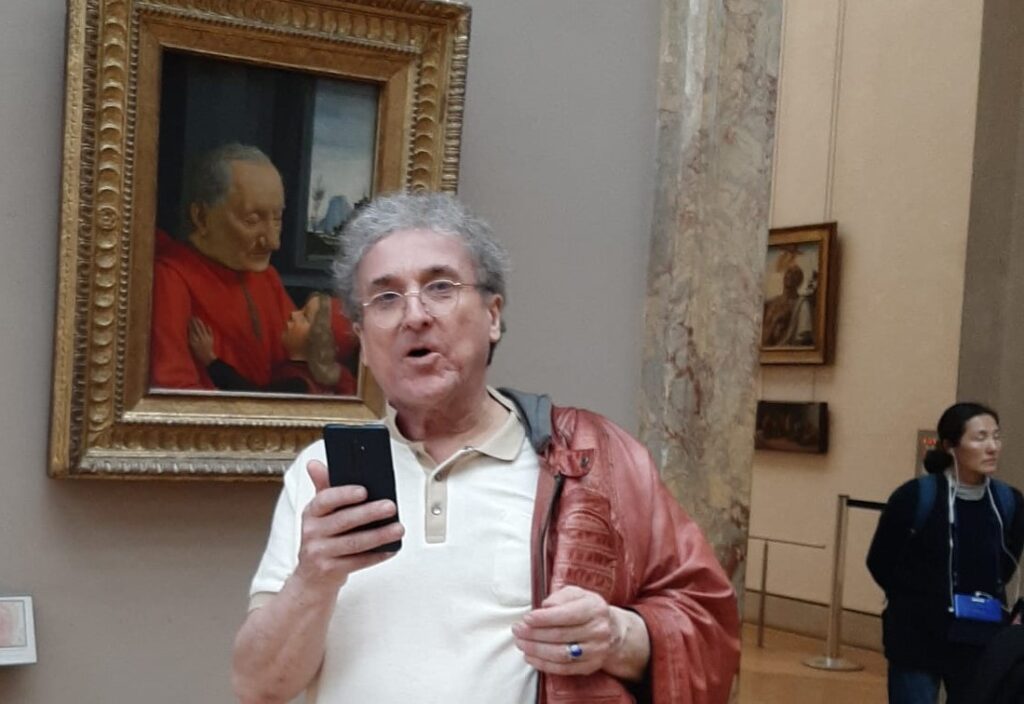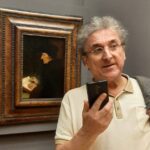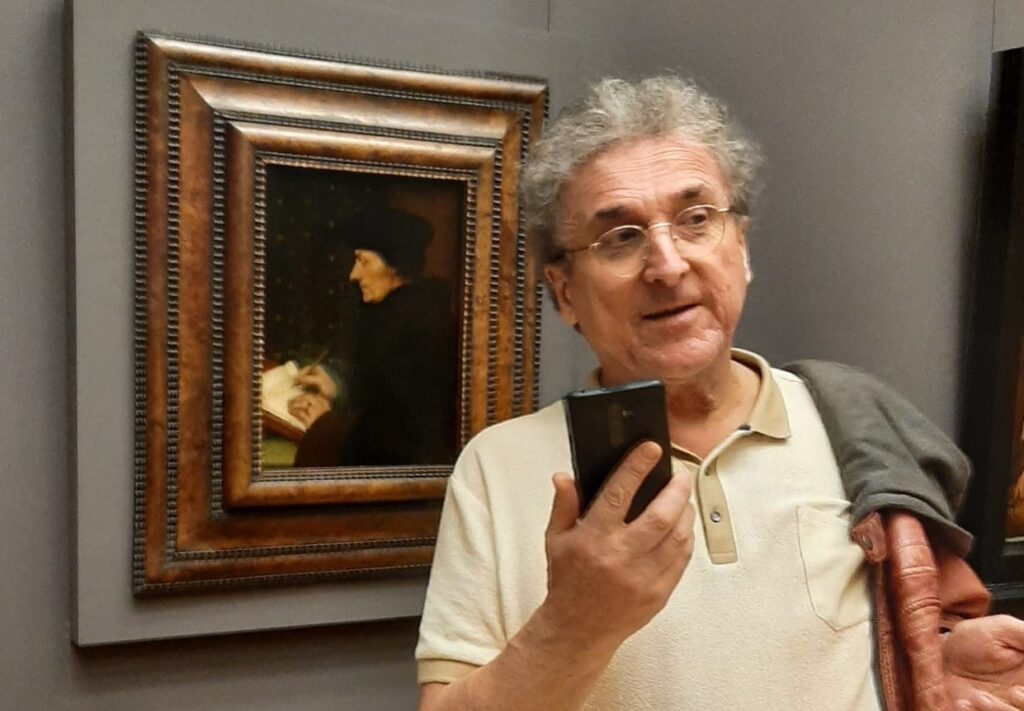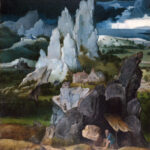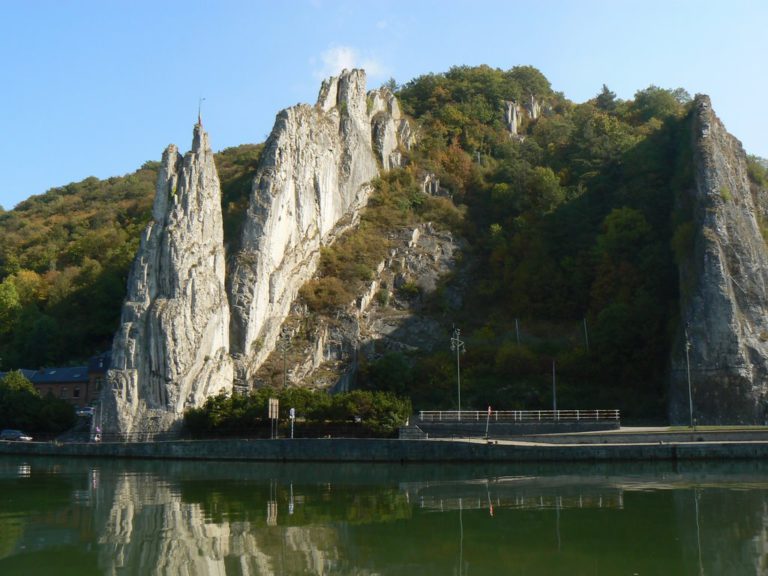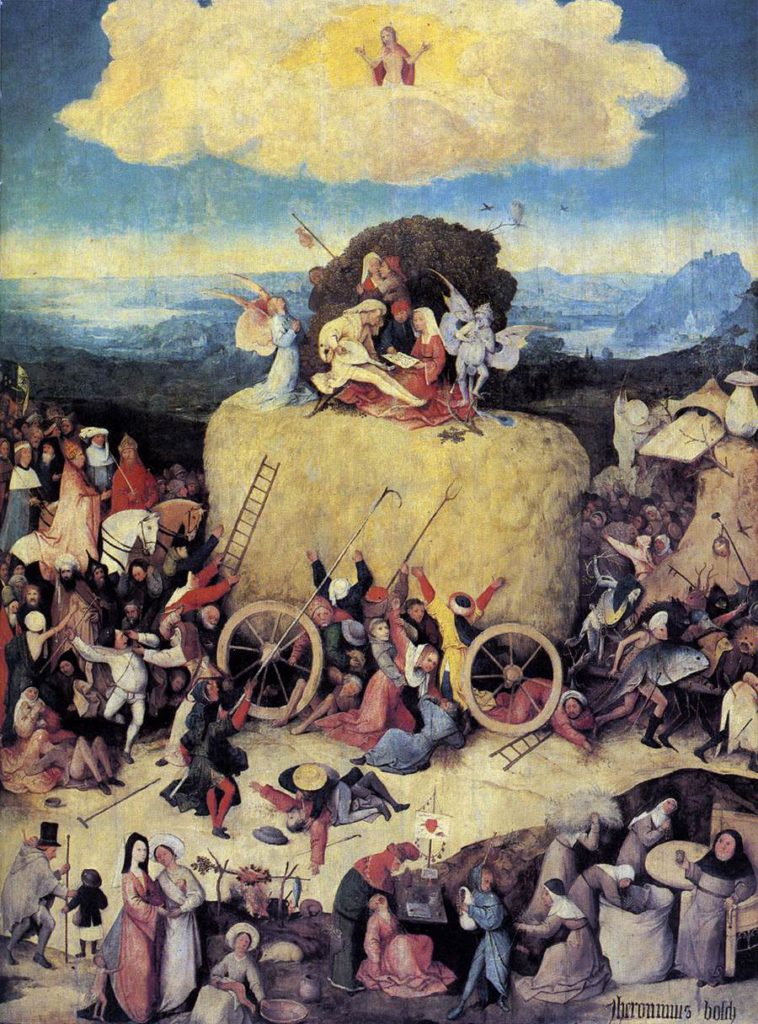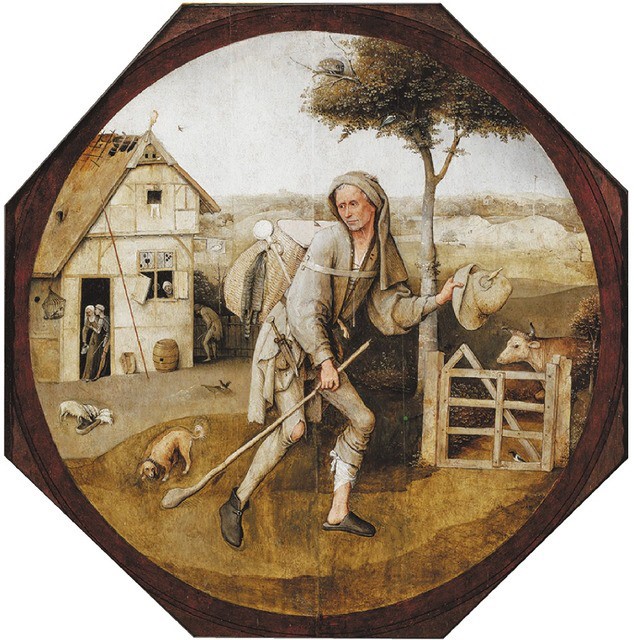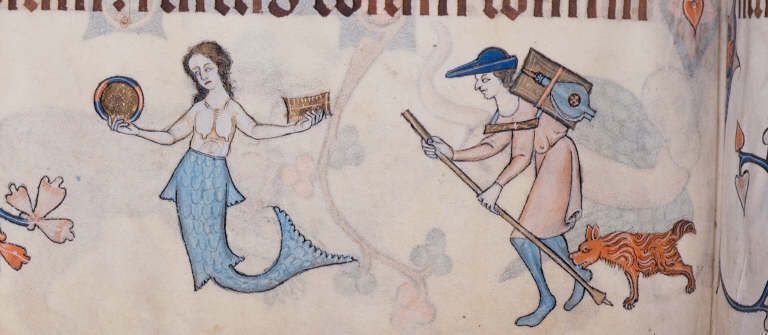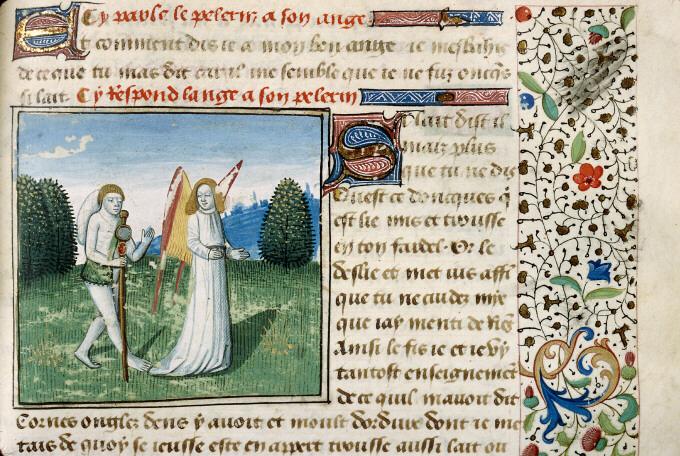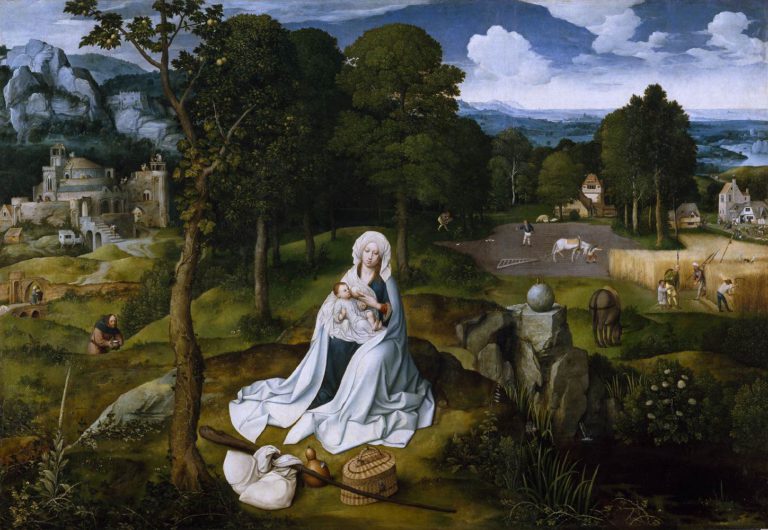Étiquette : peinture
LOUVRE AUDIO GUIDE: Van Eyck, Rolin and the Peace of Arras
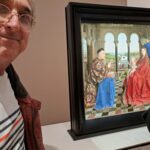
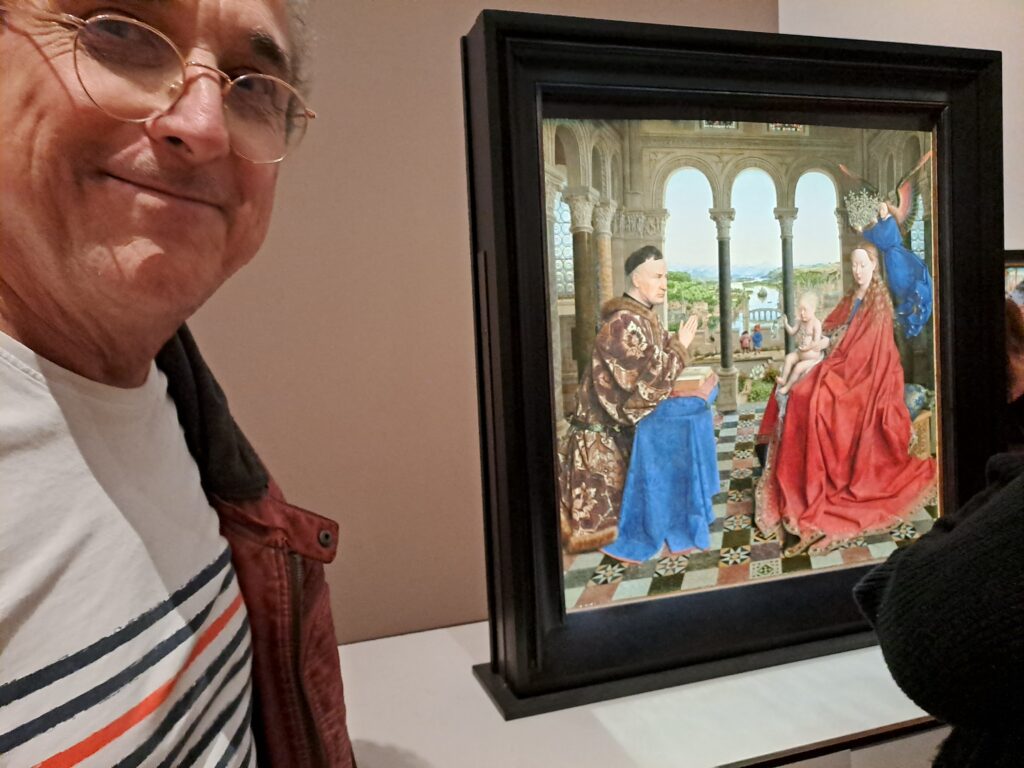

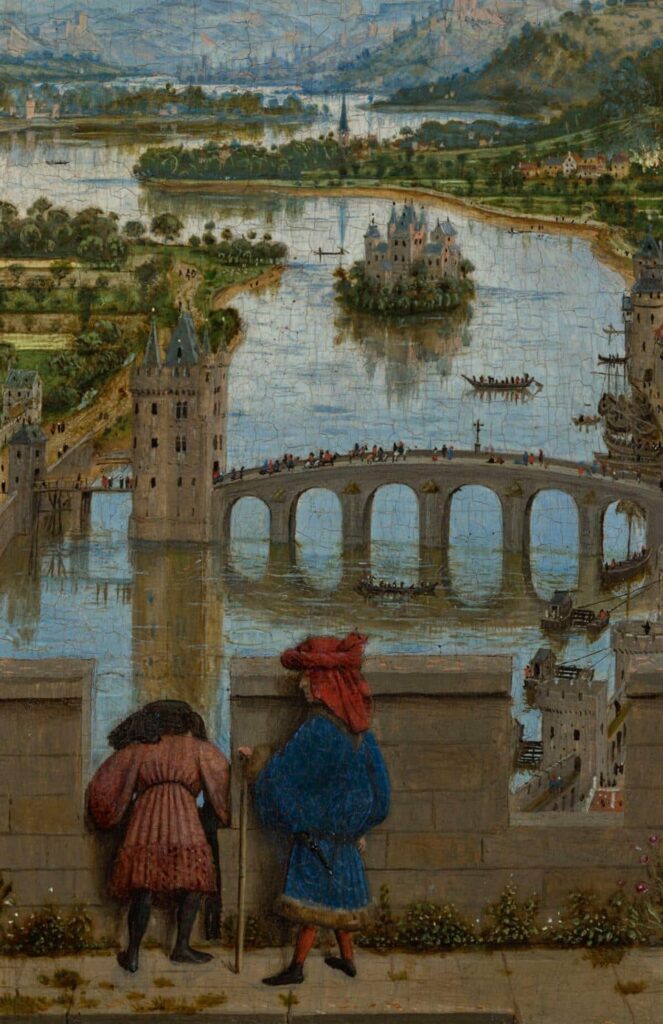
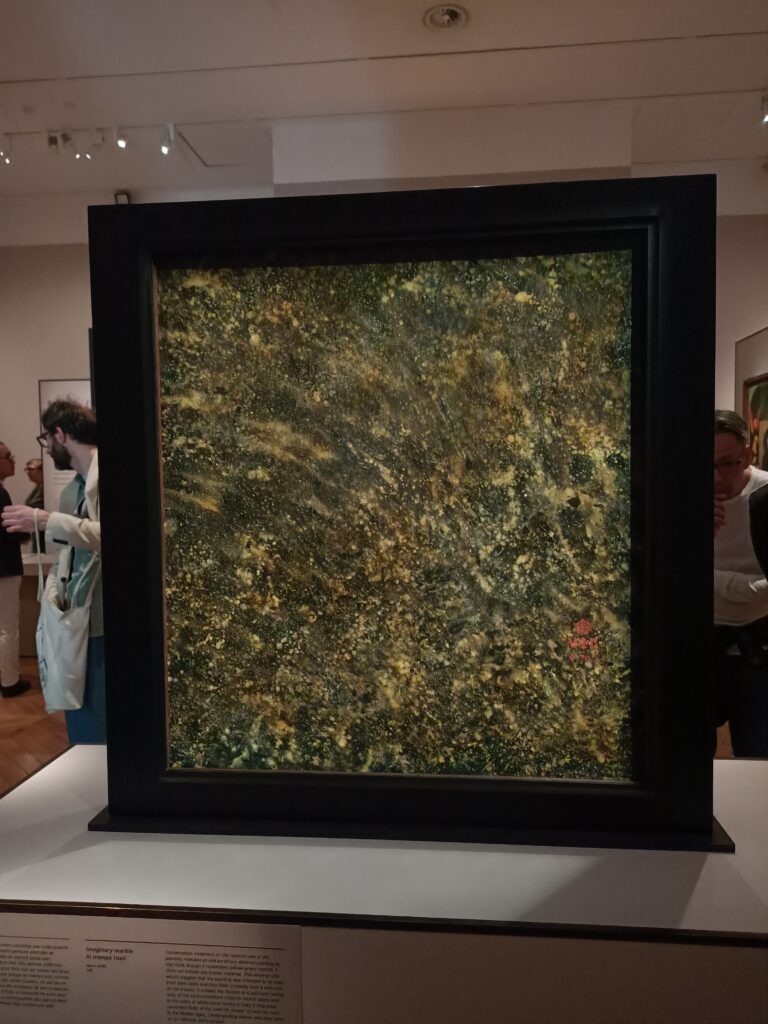

Listen:
Audio on this website
Other audios of the Louvre Audio Guide collection:
- Short note about the building;
- The Greek tradition behind the Fayum Mummy Portraits;
- Cimabue, Giotto, Fra Angelico, the Wonders of the Italian Trecento;
- Who was whispering in the Ear of Joan of Arc;
- Van der Weyden and Cusanus;
- Antonello de Messina and Man in the image of Christ;
- Ghirlandaio’s immortality;
- The Rigor of Mantegna’s crucifixion;
- Leonardo and Verrocchio’s workshop;
- Why Leonardo didn’t like painting;
- Mona Lisa made in China?;
- How Bosch’s Ship of Fools drove the Jester out of business;
- Why Erasmus had no time to pause for portraits;
- Rembrandt, sculptor of Light;
- Why Vermeer was hiding his convictions;
- Van Eyck, Nicolas Rolin and the Peace of Arras.
Read:
- Jan van Eyck, la beauté comme prégustation de la sagesse divine (FR en ligne) + EN on line.
- Jan Van Eyck, un peintre flamand dans l’optique arabe (FR en ligne)
- Jan Van Eyck, a Flemish Painter using Arab Optics (EN online)
- Rogier Van der Weyden, maître de la compassion (FR pdf)
- Comment Jacques Cœur a mis fin à la Guerre de Cent Ans (FR en ligne)
- How Jacques Coeur put an end to the Hundred Years War (EN online);
Le Bac (d’après Pierre Billet)
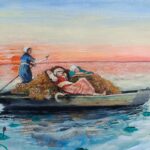

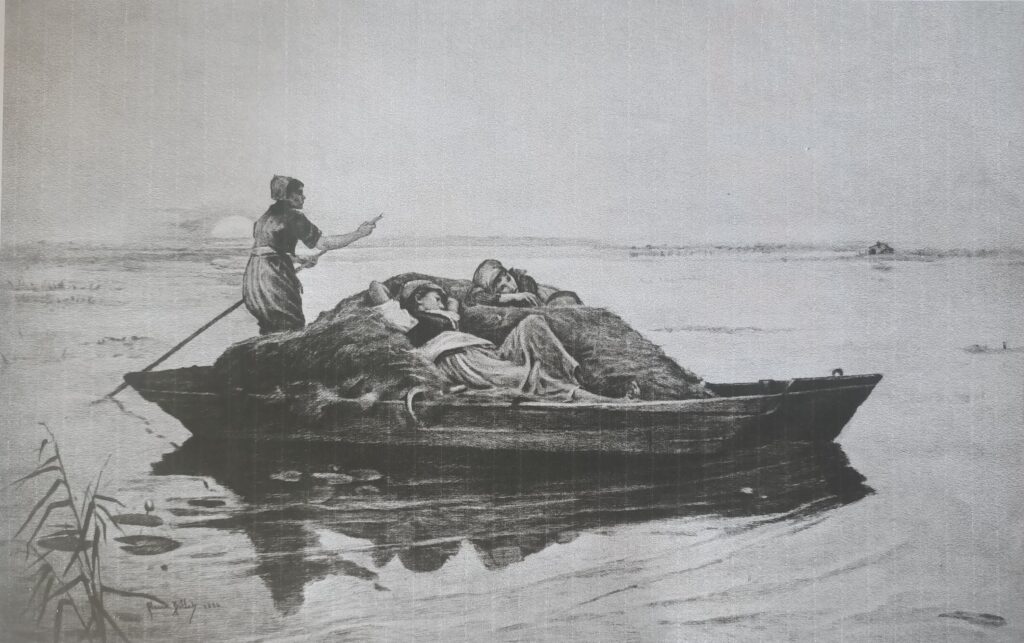
LOUVRE AUDIO GUIDE: Antonello de Messina in the Image of Christ


Listen:
to the audio on this website:
Read:
- Les Frères de la vie commune et la Renaissance du nord (FR en ligne)
- Moderne Devotie en Broeders van het Gemene Leven, bakermat van het humanisme (NL online)
- Devotio Moderna, Brothers of the Common Life, the cradle of humanism in the North (EN online)
- Hugo van der Goes et la Dévotion moderne (FR en ligne);
LOUVRE AUDIO GUIDE: Mona Lisa made in China?


Listen?
Audio on this website
Read?
- La Cène de Léonard, une leçon de métaphysique (FR en ligne) + EN pdf (Fidelio).
- Léonard de Vinci : peintre de mouvement (FR en ligne) + EN pdf (Fidelio).
- La Vierge aux rochers, l’erreur fantastique de Léonard (FR en ligne).
- Romorantin et Léonard ou l’invention de la ville moderne (FR en ligne) + EN pdf (Executive Intelligence Review) + DE pdf (Neue Solidarität) + IT pdf (Movisol website).
- L’Homme de Vitruve de Léonard de Vinci (FR en ligne) + EN online.
- Léonard en résonance avec la peinture traditionnelle chinoise — entretien avec Le Quotidien du Peuple. (en ligne: texte chinois suivi des traductions FR + EN).
LOUVRE AUDIO GUIDE: short note before starting your visit


Listen:
- To the audio on this website
Read:
- Index of articles dealing with art history and Renaissance studies on this website.

——————————
LOUVRE AUDIO GUIDE: The rigor of Mantegna’s crucifixion

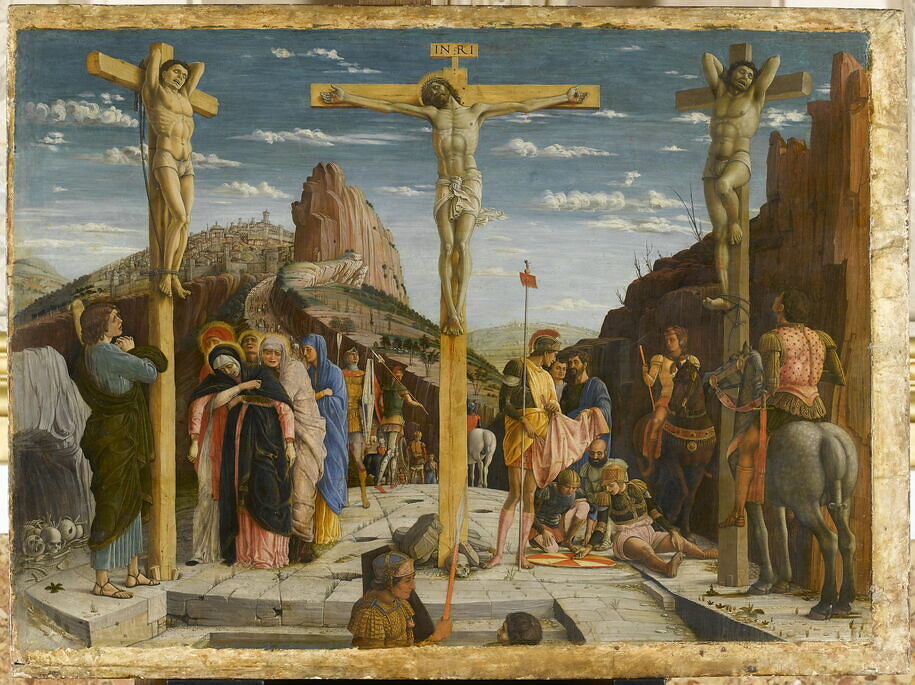
Listen:
To the audio on this website.
Read:
- Avicenne, Ghiberti, leur rôle dans l’invention de la perspective à la Renaissance (FR en ligne) et EN online.
- Les secrets du dôme de Florence (FR en ligne) + EN pdf (Schiller Institute archive website) + DE pdf (Neue Solidarität).
- L’œuf sans ombre de Piero della Francesca (FR en ligne) + EN pdf (Fidelio).
- Uccello, Donatello, Verrocchio et l’art du commandement militaire (FR en ligne) et EN online.
LOUVRE AUDIO GUIDE: Rembrandt, sculptor of light

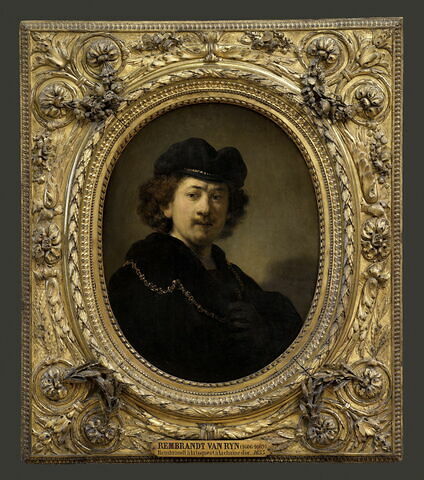

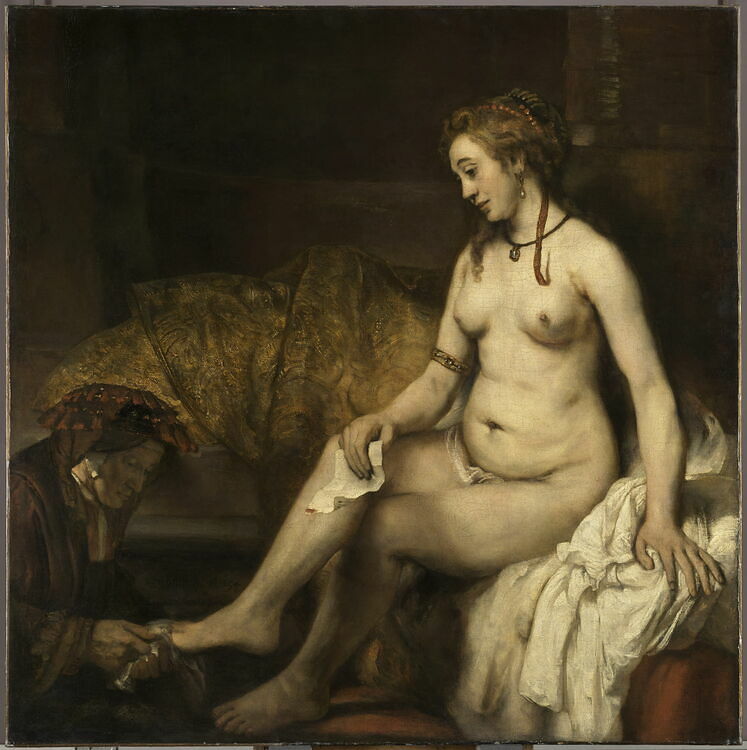
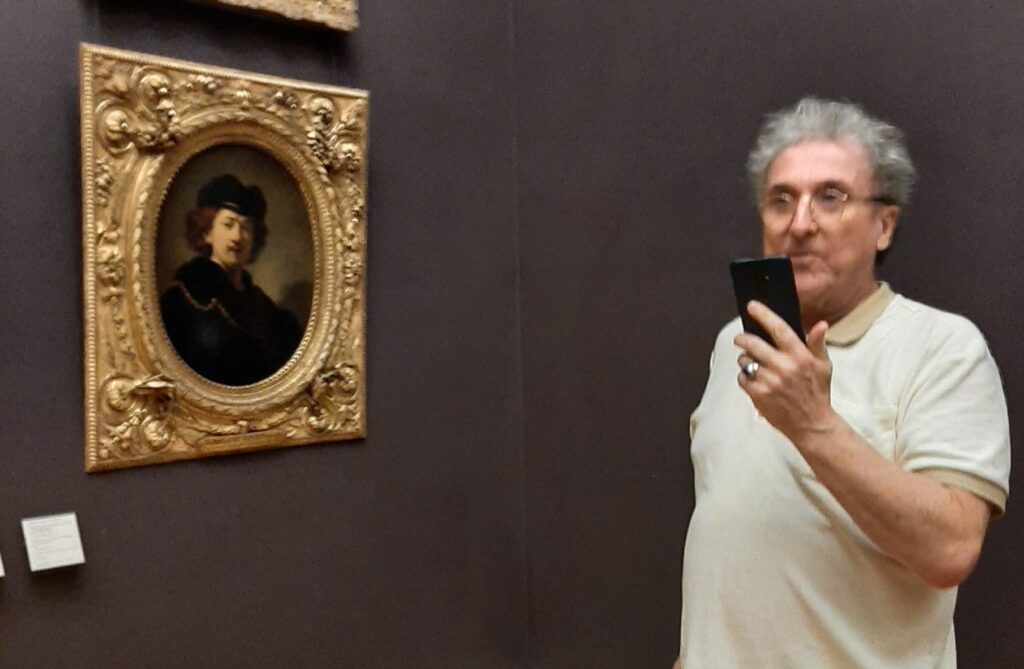
Listen:
To the audio on this website.
Read:
- Rembrandt, un bâtisseur de nations FR pdf (Nouvelle Solidarité).
- Rembrandt et la lumière d’Agapè (FR en ligne) : Rembrandt et Comenius pendant la guerre de trente ans.
- Rembrandt and the Light of Agapè (EN online)
- Rembrandt : 400 ans et toujours jeune ! (FR en ligne).
- Rembrandt: 400 years old and still young ! (EN online).
- Rembrandt et la figure du Christ (FR en ligne) + EN pdf + DE pdf.
LOUVRE AUDIO GUIDE: Cimabue, Giotto, Fra Angelico; Wonders of the Italian Trecento


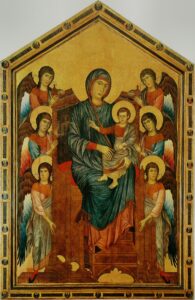

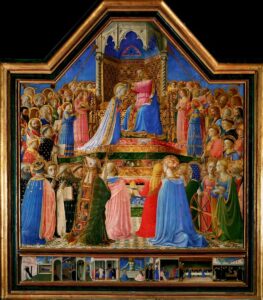
Listen
To the audio on this website.
Read:
- L’invention de la perspective FR pdf (Fusion) + EN pdf (Fidelio)
- La révolution du grec ancien, Platon et la Renaissance (FR en ligne)
- The Greek language project, Plato and the Renaissance (EN online).
- Les Frères de la vie commune et la Renaissance du nord (FR en ligne)
- Moderne Devotie en Broeders van het Gemene Leven, bakermat van het humanisme (NL online)
- Devotio Moderna, Brothers of the Common Life, the cradle of humanism in the North (EN online)
LOUVRE AUDIO GUIDE: Why Vermeer was hiding his convictions

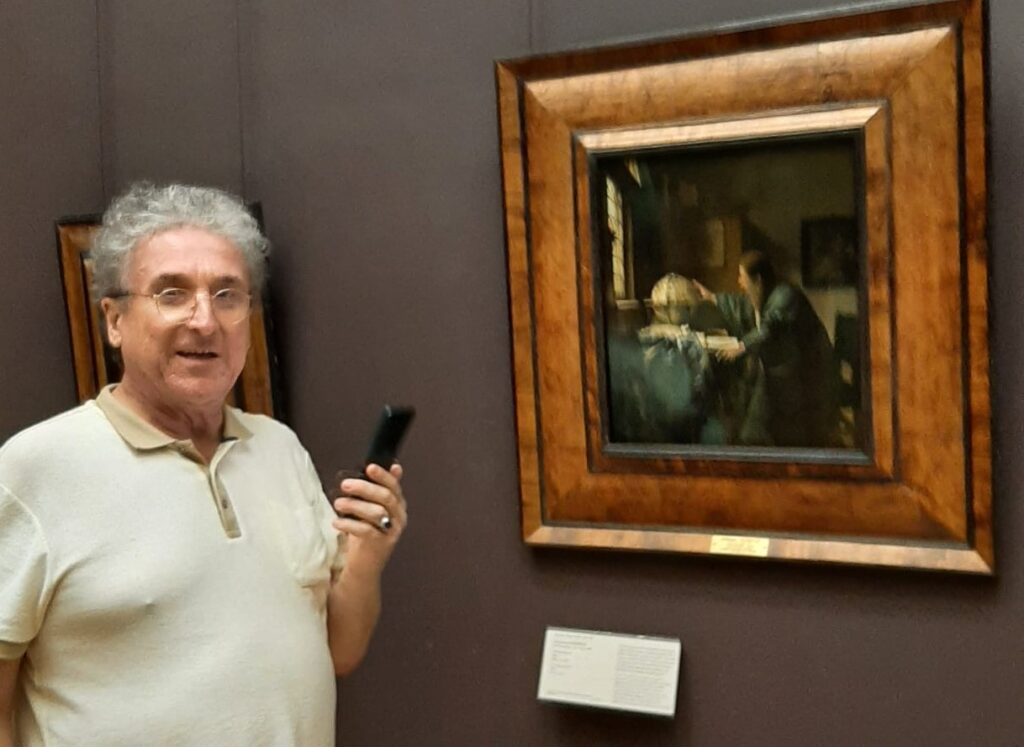
Listen:
To the audio on this website
Read:
LOUVRE AUDIO GUIDE: Why Leonardo didn’t like painting
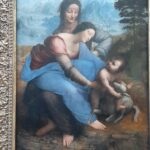

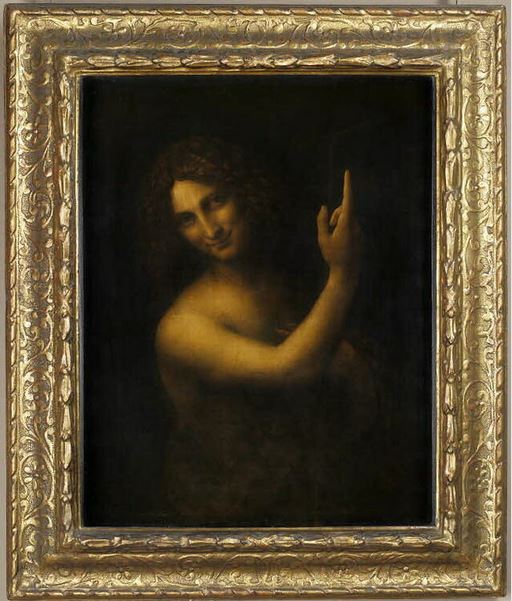
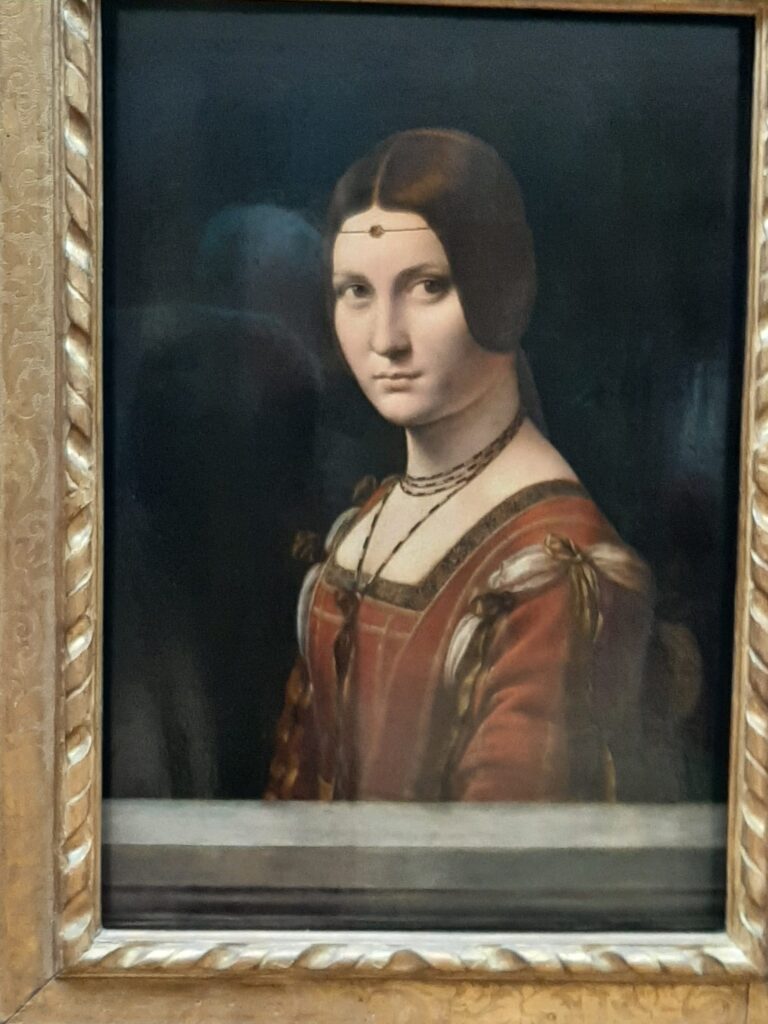


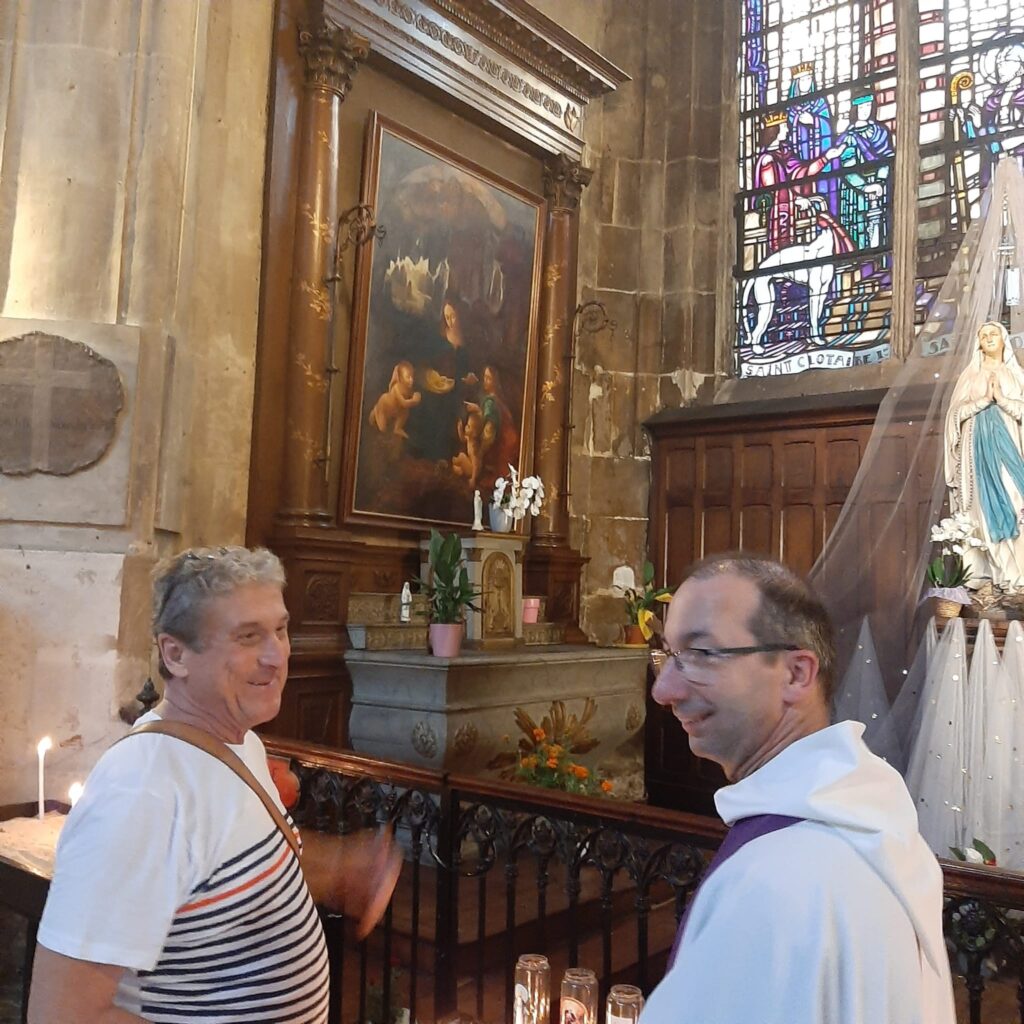
Listen:
To the audio on this website.
Read:
- La Cène de Léonard, une leçon de métaphysique (FR en ligne) + EN pdf (Fidelio).
- Léonard de Vinci : peintre de mouvement (FR en ligne) + EN pdf (Fidelio).
- La Vierge aux rochers, l’erreur fantastique de Léonard (FR en ligne).
- Romorantin et Léonard ou l’invention de la ville moderne (FR en ligne) + EN pdf (Executive Intelligence Review) + DE pdf (Neue Solidarität) + IT pdf (Movisol website).
- L’Homme de Vitruve de Léonard de Vinci (FR en ligne) + EN online.
- Léonard en résonance avec la peinture traditionnelle chinoise — entretien avec Le Quotidien du Peuple. (en ligne: texte chinois suivi des traductions FR + EN).
LOUVRE AUDIO GUIDE: How Bosch’s Ship of Fools drove the Jester out of business
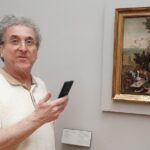

Liste:
To the audio on this website;
Read:
- With Hieronymous Bosh on the track of the Sublime;
- Comment la folie d’Erasme sauva notre civilisation (FR en ligne) + NL pdf (Agora Erasmus) + EN pdf (Schiller Institute Archive Website) + DE pdf (Neue Solidarität).
- Le rêve d’Erasme: le Collège des Trois Langues de Louvain (FR en ligne)
- Erasmus‘ dream: the Leuven Three Language College (EN online)
- ENTRETIEN: Jan Papy: Erasme, le grec et la Renaissance des sciences (FR en ligne)
- Dirk Martens, l’imprimeur d’Erasme qui diffusa le livre de poche (FR en ligne).
- 1512-2012 : Mercator et Frisius, des cosmographes aux cosmonautes + NL pdf (Agora Erasmus) + EN pdf (Schiller Institute Archive Website).
- La nef des fous de Sébastian Brant (FR en ligne), un livre d’une grande actualité !
- Avec Jérôme Bosch sur la trace du Sublime (FR en ligne) + EN pdf.
- Joachim Patinir et l’invention du paysage en peinture (FR en ligne).
- Joachim Patinir and the invention of landscape painting (EN online)
- Exposition de Lille : ce que nous apprennent les fabuleux paysages flamands (FR en ligne).
- Portement de croix: redécouvrir Bruegel grâce au livre de Michael Gibson (FR en ligne) + EN pdf (Fidelio).
- ENTRETIEN Michael Gibson: Pour Bruegel, le monde est vaste (FR en ligne) + EN pdf (Fidelio)
- Pierre Bruegel l’ancien, Pétrarque et le Triomphe de la Mort (FR en ligne) + EN online.
- A propos du film « Bruegel, le moulin et la croix » (FR en ligne).
- L’ange Bruegel et la chute du cardinal Granvelle (FR en ligne).
- Albrecht Dürer contre la mélancolie néo-platonicienne + EN pdf.
LOUVRE AUDIO GUIDE: Why Erasmus had no time to pause for portraits
LOUVRE AUDIO GUIDE : Van der Weyden and Cusanus
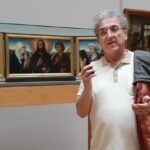
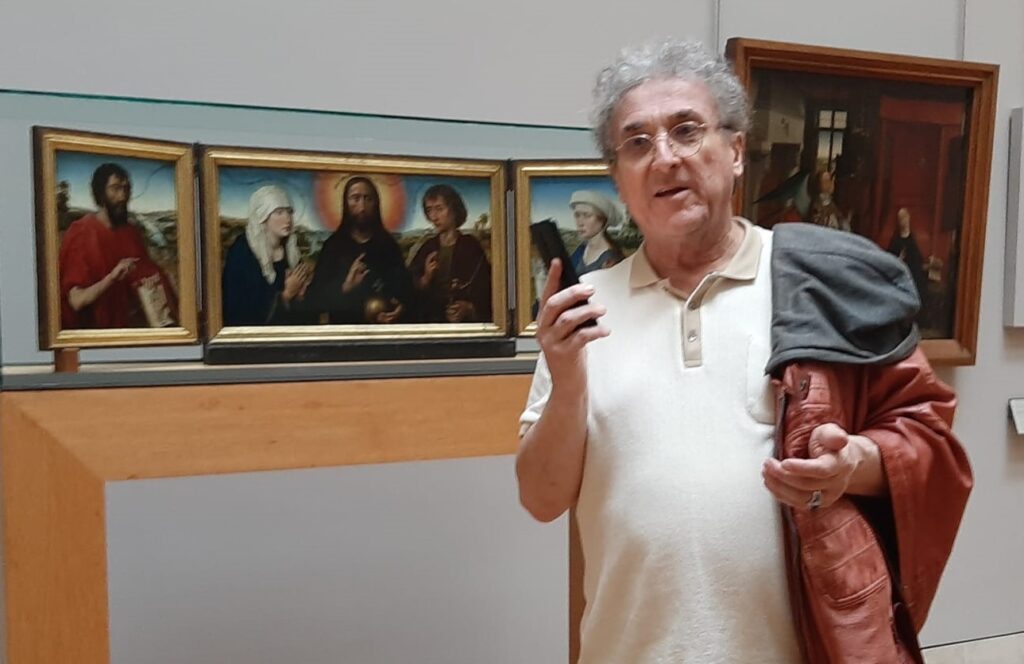
Listen:
To the audio on the website
Read :
- Rogier Van der Weyden, le maître de la compassion;
- The Greek language project, Plato and the Renaissance (EN online).
- Devotio Moderna, Brothers of the Common Life, the cradle of humanism in the North (EN online)
- Jan van Eyck, la beauté comme prégustation de la sagesse divine (FR en ligne) + EN on line.
- Jan Van Eyck, a Flemish Painter using Arab Optics (EN online)
LOUVRE AUDIO GUIDE: Leonardo and Verrochio’s workshop


Listen:
to the audio on this website
Read:
The « Miracle of Gandhara » : When Buddha turned himself into man
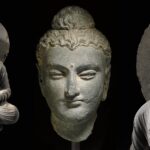

It was during my trip to Afghanistan in November 2023 that I realized how little I knew about this part of the world. Although Islam prevails in Afghanistan and Pakistan today, we often forget that a region shared by these two countries, historically known as Gandhara, played a major role in the epic of Buddhism from the 1st to the 3rd century AD, a spirituality which, by rejecting any idea of caste, was to shake up the world order.
A crossroads on the Silk Roads linking Europe to India and China, Gandhara was the site of a genuine dialogue between Eurasian, Persian, Turkish, Greek, Chinese and Indian cultures.
Buddhism. It was through the voluntarism of two Central Asian kings (Ashoka and the Kuchan ruler Kanishka) that Buddhism, born in Nepal, found the energy and determination to win over the minds and hearts of the world.
Finally, it was in Gandhara that Buddhist art, breaking with the master’s instructions, appropriated the most beautiful forms of various Greek, Indian, Persian and other artistic cultures, to present Buddha in human form to the faithful, an enlightened man, full of wisdom and animated by compassion.
By offering freshness, poetry and a spectacularly modern sense of movement, the early Buddhist artists of Gandhara invite us to identify within ourselves a leap towards self-perfection. In this respect, they are the precursors of classical humanism and of many a Renaissance.
Isn’t it time we recognize the just place that merits their contribution to universal civilization?
Finally, seen the current situation, I’d like to quote Indian Prime Minister Nehru, who on October 3, 1960, addressed the United Nations General Assembly with words that have become ever more relevant: « In the distant past, a great son of India, the Buddha, said that the only true victory was one in which all were equally victorious and no one was defeated. In today’s world, this is the only concrete victory; any other path leads to disaster. »
SUMMARY
- Introduction
- The life of the Buddha
- The Four Truths and the Eightfold Path
- Reincarnation
- Aryans and Vedism
- Brahmins and the caste system
- India before Buddhism
- The great Buddhist councils
- The arrival of the Greeks
- The Maurya Empire
- The reign of Ashoka the Great
- Edicts of Ashoka
- Content of the edicts
- The Kushan Empire
- The miracle of Gandhara
a) Poetry
b) Literature
c) Urbanisation
d) Architecture, the invention of the stupa
e) Sculpture
— Aniconism
— End of aniconism
— Difference in form, difference in content
1) Gandhara Greco-Buddhist school
2) Mathura school
3) Andrah Pradesh school
4) School of the Gupta period. - When Asia meets Greece
a) Kushan coins
b) Bimaran reliquary
c) Harra Triad
d) Taking the earth as witness
e) All Bodhisattvas? - Buddhism today
- Science and religion, Albert Einstein and Buddha.
Introduction
The 5th and 4th centuries BC were a period of global intellectual ferment. It was a time of great thinkers, such as Socrates, Plato, and Confucius, but also Panini and Buddha.
In northern India, it was the age of Buddha, after whose death a « non-theistic » faith (Buddha was only a man…) emerged and spread far beyond its region of origin.
With between 500 million and 1 billion believers today, Buddhism has established itself as one of the world’s leading religious and philosophical beliefs.
The life of the Buddha

The Buddha » (the enlightened one) is the name given to a man called Siddhartha Gautama Shakyamuni (the wise man of the Shakya clan). He reached the age of eighty.
Traditions differ on the exact dates of his life, which modern research tends to place increasingly later: around 623-543 BC according to Theravada tradition, around 563-483 BC according to most specialists of the early 20th century, while others today place him between 420 and 380 BC (his life would not have exceeded 40 years).

According to tradition, Siddhartha Gautama was born in Lumbini (in present-day Nepal) as a Prince of the royal family of Kapilavastu, a small kingdom in the foothills of the Himalayas in present-day Nepal.
An astrologer is said to have warned the boy’s father, King Suddhodana, that when growing up, the child would either become a brilliant ruler or an influential monk, depending on how he viewed the world.

Fiercely determined to make him his successor, Siddhartha’s father never let him see anything outside the palace walls.
While offering him every distraction and pleasure, he made him a virtual prisoner until the age of 29.
When the young man finally escapes his gilded cage, he discovers the existence of people affected by old age, illness, and death.
Moved by the suffering of the ordinary people he met, Siddhartha abandoned the ephemeral pleasures of the palace to seek a higher purpose.
He first tried ultra-severe asceticism, which he abandoned six years later, realizing it was an exercise in futility.
He then sat down to meditate under a large bodhi (fig tree), where he experienced nirvana (« liberation » or, in Sanskrit, « extinction » of the ego). He became known as « The Buddha » (“the enlightened one”).
The « Four Truths » and the « Eight-fold Path »
Buddha taught his young disciples the « Middle Path », between the two extremes of mortification and lavishness. He enunciates the « Four Noble Truths »:
- The noble truth of suffering;
- The noble truth of the origin of suffering;
- The noble truth of the cessation of suffering;
- The noble truth of the path leading to the cessation of suffering, that of the “Noble Eightfold Path”.
Somewhat similar to what Augustine and even more so the Brothers of the Common Life argued in the Christian world, Buddhism insists on the fact that our attachment to earthly existence (both the good and the evil) inflicts suffering. Among Christians, it is said that attachment to “Earthly Paradise” leads us inexorably to “sin”, a concept non-existent in Buddhism for which all errors come from ignorance of the right path.
For Buddha, it is necessary to combat, even extinguish, any sense of the excessive “I” (Today we could say “ego”). It is possible to end our suffering by transcending this strong sense of “I” to enter into greater harmony with things in general.
The means to achieve this are summarized in the « Noble Eightfold Path », sometimes represented by the eight spokes of a « Wheel of the Law » that Buddha will set in motion, the Dharma, a word one cannot translate with one word of western languages, but akin to “the law, or rather a set of moral and philosophical precepts to work on.
These eight points of the “Noble Eightfold Path” are:
- Right view.
- Right thought.
- Right speech.
- Right action.
- Right livelihood.
- Right effort.
- Mindfulness.
- Right concentration.
- Right view is important right from the start because if we can’t see the truth of the four noble truths, we can’t begin.
- Right thinking follows naturally from this. The term « right » here means « in accordance with the facts », i.e. with the way things are – which may be different from the way I would like them to be.
- Right thinking, right speech, right action, and right livelihood imply moral restraint – refraining from lying, stealing, committing violent acts, and earning a living in a way that is not detrimental to others. Moral restraint not only contributes to general social harmony but also helps us to control and diminish the inordinate sense of « self ». Like a spoiled child, the « I » grows wide and unruly the longer we let it have its way.
- Finally, right effort is important, because the « I » thrives on idleness and wrong effort; some of the greatest criminals are the most energetic people, so effort must be appropriate to the diminution of the « I » (today we’d say ego), and in any case, if we’re not prepared to make an effort, we can’t hope to achieve anything, either in the spiritual sense, or in life. The last two stages of the path, mindfulness and concentration or enthralment , represent the first step towards liberation from suffering.
The ascetics who had listened to the Buddha’s first discourse became the nucleus of a « sangha » (a community, a movement) of men (women were to join later) who followed the path described by the Buddha in his Fourth Noble Truth, the one specifying the “Noble Eightfold Path”.
To make Buddhist nirvana completely accessible to ordinary people during their individual lifetime, the Buddhist imagination invented the intriguing concept of « Bodhisattva », a word whose meaning varies according to context. It can refer to the state Buddha himself was in before his « awakening », or to an ordinary person who has resolved to become a Buddha in the future and has received confirmation or prediction from a living Buddha that this will be so.
In Theravada (“old school”) Buddhism, only a select few can become Bodhisattva, such as Maitreya, presented as the « Buddha of the future ». But in Mahayana Buddhism (“Great Vehicle”), a Bodhisattva refers to anyone who has generated “bodhicitta”, a spontaneous wish and compassionate spirit aimed at attaining Buddhahood for the benefit of “all sentient beings”, including humans and animals. Given that a person may, in a future life, be reincarnated as a mere animal, respect for animals is essential.
Reincarnation
If Siddhartha would build his own vision on certain foundations of Hinduism, one of the world’s oldest religions, he would introduce revolutionary changes with large political implications.
In most beliefs involving reincarnation (Hinduism, Jainism, Sikhism), the soul of a human being is immortal and does not disperse after the physical body disappears. After death, the soul simply transmigrates (metempsychosis) into a newborn baby or animal to continue its immortality. The belief in the rebirth of the soul was expressed by ancient Greek thinkers, beginning with Pythagoras, Socrates, and Plato.
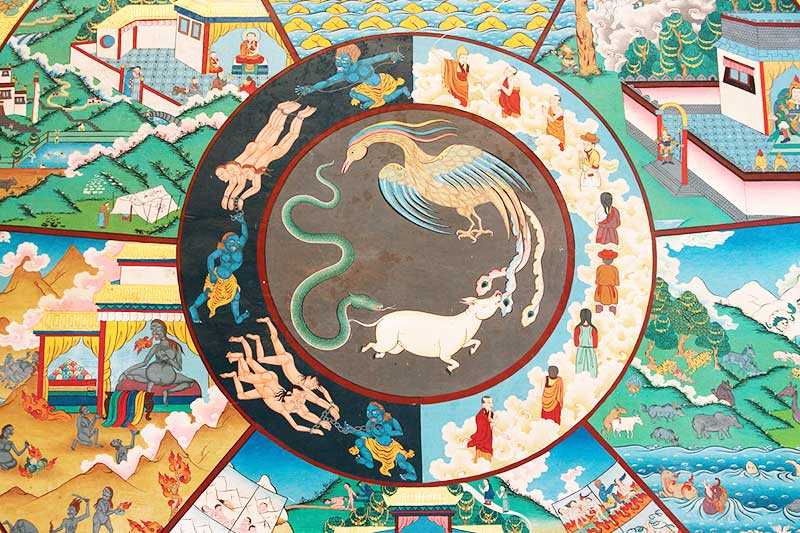
Buddhism aims to bring lasting, unconditional happiness. Hinduism aims to free oneself from the cycle of births and rebirths and, ultimately, to attain moksha or liberation from births and rebirths.
Buddhism and Hinduism agree on karma, dharma, moksha, and samsara (reincarnation). But they strongly differ politically in that Buddhism sees personal commitment as more important than formal rituals and refuses the caste system. Buddhism therefore advocates a more egalitarian society.
Whereas Hinduism holds that the attainment of nirvana is only possible in future lives, the more voluntarist and optimistic Buddhism holds that once you’ve realized that life is suffering, you can put an end to that suffering in your present life.
Buddhists describe their rebirth as a flickering candle lighting another candle, rather than an « immortal » soul or « self » passing from one body to another, as Hindus do. For Buddhists, it’s a rebirth without a « self », and they regard the realization of non-self or emptiness as nirvana (extinction), whereas for Hindus, the soul, once freed from the cycle of rebirths, doesn’t become extinct, but unites with the Supreme Being and enters an eternal state of divine bliss.
Aryans and Vedism

One of the great traditions that shaped Hinduism was the Vedic religion (« Vedism »), which flourished among the Indo-Aryan peoples of the north-western Indian subcontinent (Punjab and the western Gangetic plain) during the Vedic period (1500-500 BC).
During this period, nomadic peoples from the Caucasus, calling themselves « Aryans » (« noble », « civilized » and « honorable »), entered India via the northwest frontier.
The term “Aryan” has a very bad historical connotation, especially in the 19th Century, once several virulent anti-Semites, such as Arthur de Gobineau, Richard Wagner, and Houston Chamberlain started promoting the obsolete historical “Aryan race” concept supporting the white supremacist ideology of Aryanism that portrayed the Aryan race as a “master race”, with non-Aryans regarded as racially inferior (Untermensch) and an existential threat to be exterminated.

From a purely scientific standpoint, in his book The Arctic Home (1903), the Indian teacher Bal Gangadhar Tilak (1856-1920), based on his analysis of astronomical observations contained in the Vedic hymns, formulates the hypothesis that the North Pole was the original home of the Aryans during the pre-glacial period. They supposedly left this region due to climatic changes around 8000 BC, migrating to the northern parts of Europe and Asia. Mahatma Gandhi called Tilak, who led the country’s early independence movement,« the architect of modern India ».
The Aryans arriving from the North were probably less barbaric than has been so far suggested. Thanks to their military superiority and cultural sophistication, they took over the entire Gangetic plain, eventually extending to the Deccan plateau in the South. This conquest has left its mark to the present day, as the regions occupied by these invaders speak Indo-Aryan languages derived from Sanskrit. (*1)

The Sanskrit philologist, grammarian, and scholar Panini, believed to be a contemporary of Buddha, is best known for his treatise on Sanskrit grammar, which has attracted much comment from scholars of other Indian religions, notably Buddhism.
In fact, according to the best archaeological research available today, Vedic culture has deep roots in the Eurasian culture of the Sintashta steppes (2200-1800 BC) south of the Urals, in the Andronovo culture of Central Asia (2000-900 BC) stretching from the southern Urals to the headwaters of the Yenisei in Central Siberia, and ultimately in the Indus Valley (Harappan) civilization (7000-1900 BC).
At the heart of this Vedic culture are the famous “Vedas” (knowledge), four religious texts recording the liturgy of rituals and sacrifices, and the oldest scriptures in Hinduism. The oldest part of the Rigveda was composed orally in north-western India (Punjab) between around 1500 and 1200 BC, i.e. 700 years before Plato but shortly after the collapse of the Indus Valley Civilization.
Scholars trace the origin of “Brahmanism” to Vedic times. The concept of “Brahman” was that of a pure essence that not only diffused itself everywhere but constituted everything. Men, gods, and the visible world were merely its manifestations. Such was the fundamental doctrine of Brahmanism, another name for Hinduism.
Brahmins and the caste system
To teach that to all of humanity, an all-powerful cast of high priests was created, the Brahmins whose social rank would rise to the top of a caste system. This makes it all a little bit complicated because while “Brahmâ” designates a God in Indian religions, “Brahman” designates Ultimate Reality and “Brahmin” the priest.
However, with the emergence of this Aryan culture came what is known as « Brahmanism », i.e. the birth of an all-powerful caste of high priests.
According to Gajendran Ayyathurai, an Indian anthropologist at the University of Göttingen in Germany:
« Numerous linguistic and historical studies point to socio-cultural disturbances resulting from this migration and the penetration of Brahman culture in various regions, from western South Asia to North India, South India, and South-East Asia ».
Although the term « Brahmin », literally a « superior » member of the highest priestly caste, does appear in the Vedas, modern scholars temper this fact and point out that « there is no evidence in the Rigveda of an elaborate, highly subdivided and very important caste system ».
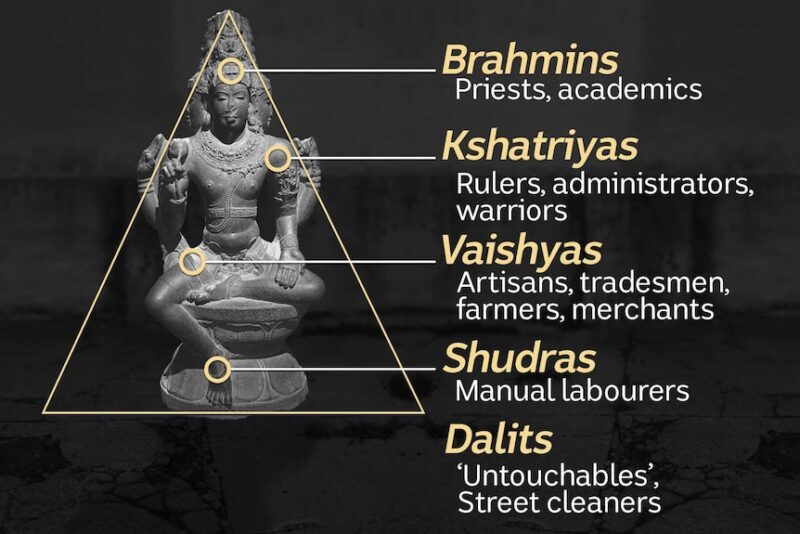
But with the emergence of a ruling class of Brahmins, who became bankers and landowners, particularly during the, initially very promising, Gupta period (319 to 515 A.D.), a dehumanizing caste system was established. The feudal ruling class, as well as the priests, emphasized local gods, which they gradually integrated with Brahmanism to appeal to the masses. Even among the rulers, the choice of deities indicated divergent positions: part of the Gupta dynasty traditionally supported the god Vishnu, while its rivals supported the god Shiva.
The destructive caste system was then amplified and used to the full by the British East India Company, a private enterprise steering the British Empire, to impose its aristocratic and colonial power over India – a policy that still persists, especially in people’s minds.
The Hindu caste system revolves around two key concepts that categorize members of society: varna and jati. The varna (colors) divide first the Hindus and then the entire Indian society into a hierarchy of four major social classes:
- Brahmins (priestly class);
- Kshatriyas (warriors and rulers);
- Vaishyas (merchants);
- Shudras (manual workers).
In addition, jati refers to at least 3,000 hierarchical classifications, within the four varnas, between social groups according to profession, social status, common ancestry, and locality.
The justification for this “social stratification” is intimately linked to the Hindu vision of karma. Each person’s birth is directly linked to karma, the balance sheet of his or her previous life. Thus, mechanically, birth into the Brahmin varna is the result of good karma.
“Those whose conduct here has been good will quickly have a good birth – birth as a Brahmin, birth as a Kshatriya, or birth as a Vaishya. But those whose conduct here has been bad will quickly get a bad birth – birth as a dog, pig or chandala (bandit)”
(Chandogya Upanishad 5.10.7).
According to this theory, karma determines birth into a class, which in turn defines a person’s social and religious status, which in turn describes a person’s duties and obligations towards that specific status.
In 2021, a survey revealed that three out of ten Indians (30%) identify themselves as members of the four varnas. Only 4.3% of today’s 60.5 million Indians identify themselves as Brahmins. Only some members are priests, while others exercise professions such as educators, legislators, scholars, doctors, writers, poets, landowners, and politicians. As the caste system evolved, Brahmins became an influential varna in India, discriminating against other lower castes.
The vast remainder of Indians (70 percent), including Hindus, declare themselves as being « Dalits« , also known as « Untouchables », who are individuals considered, from the point of view of the caste system, to be out of the castes and assigned to functions or occupations deemed ‘impure’.
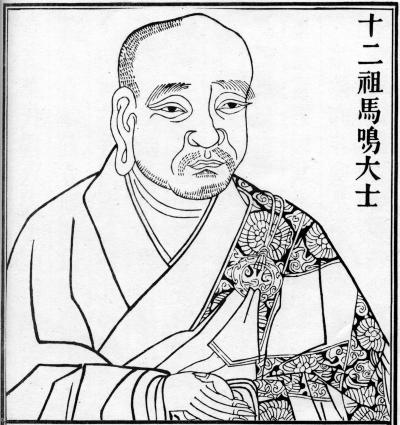
Present in India, but also throughout South Asia, the Dalits are victims of numerous forms of discrimination. In India, the overwhelming majority of Buddhists declare themselves as being Dalits.
As early as the 1st century, the Indian Buddhist philosopher, playwright, poet, musician, and orator Asvaghosa (c. 80 – c. 150 a. DC), vocally condemned this caste system with two kinds of argument. Some are borrowed from the most revered texts of the Brahmins themselves; others are based on the principle of the natural equality of all men.
The author underscores that
« the quality of Brahmin is inherent neither in the principle that lives within us, nor in the body in which this principle resides, and it results neither from birth, nor from science, nor from religious practices, nor from the observance of moral duties, nor from knowledge of the Vedas. Since this quality is neither inherent, nor acquired, it does not exist, or rather all men can possess it ».
A Buddhist allegory clearly rejects and mocks the very idea of the caste system:
« Just as sand doesn’t become food just because a child says so, when young children playing on a main road build sand blocks and give them names, saying ‘This one is milk, this one meat and this one curdled milk’, so it is with the four varnas, as you Brahmins describe them. »
India before Buddhism
The time of the Buddha was that of India’s second urbanization and great social protest. The rise of the sramanas, wandering philosophers who had rejected the authority of the Vedas and Brahmins, was new. Buddha was not alone in exploring ways of achieving liberation (moksha) from the eternal cycle of rebirths (punarjanman).
The realization that Vedic rituals did not lead to eternal liberation led to the search for other means. Primitive Buddhism and yoga but also Jainism, Ajivika, Ajnana, and Carvaka were the most important sramanas. Despite their success in disseminating ideas and concepts that were soon to be accepted by all the religions of India, the orthodox schools of Hindu philosophy (astika) opposed the sramanic schools of thought and refuted their doctrines as « heterodox » (nastika), because they refused to accept the epistemic authority of the Vedas.
For over forty years, the Buddha crisscrossed India on foot to spread his Dharma, a set of precepts and laws governing the behavior of his disciples.
When he died, his body was cremated, as was the custom in India. The Buddha’s ashes were divided, and several reliquaries were buried in large hemispherical mounds known as stupas (dome-shaped funeral temples). By the time of his death, his religion was already widespread throughout central India and in major Indian cities such as Vaishali, Shravasti, and Rajagriha.
The Great Buddhist Councils
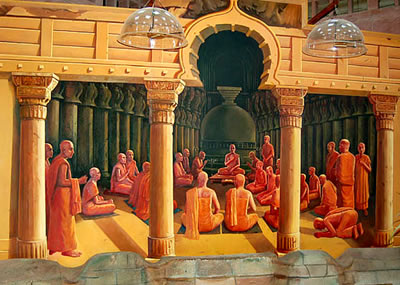
Four great Buddhist councils were organized, at the instigation of various kings seeking to escape the clutches of the Brahmin caste.
In 483 BC, just after the Buddha’s death, the first council was held under the patronage of King Ajatasatru (492-460 BC) of the Haryanka dynasty to preserve the Buddha’s teachings and reach a consensus on how his teachings could be disseminated.
The second Buddhist Council took place in 383 BC, one hundred years after the Buddha’s death, under the reign of King Kalasoka of the Sisunaga dynasty. Differences of interpretation arose on points of discipline as followers drifted further apart. A schism threatened to divide those who wished to preserve the original spirit and those who defended a broader interpretation.
The first group, called Thera (meaning « ancient » in Pâli), is at the origin of Theravada Buddhism. They aimed to preserve the Buddha’s teachings in their original spirit.
The other group was called Mahasanghika (Great Community). They interpreted the Buddha’s teachings more liberally and gave us Mahayana Buddhism.
The participants in the council tried to iron out their differences, with little unity but no animosity either. One of the main difficulties stemmed from the fact that the Buddha’s teachings, before being recorded in texts, had been transmitted only orally for three to four centuries. (*2)
The Arrival of the Greeks

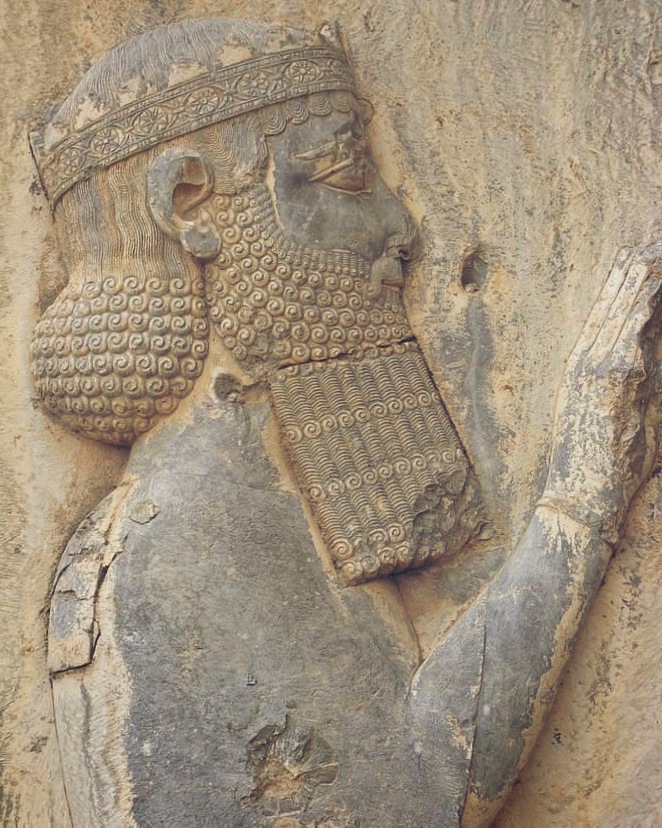
The Greeks began to settle in the north-western part of the Indian subcontinent during the time of the Achaemenid Persian Empire.
Darius the Great (550 – 486 BC) conquered the region, but he and his successors also conquered much of the Greek world, which at the time included the entire peninsula of western Anatolia.
When Greek villages rebelled under the Persian yoke, they were sometimes ethnically cleansed. Their populations were forcibly deported to the other side of the empire.
As a result, numerous Greek communities sprang up in the remotest Indian regions of the Persian Empire.
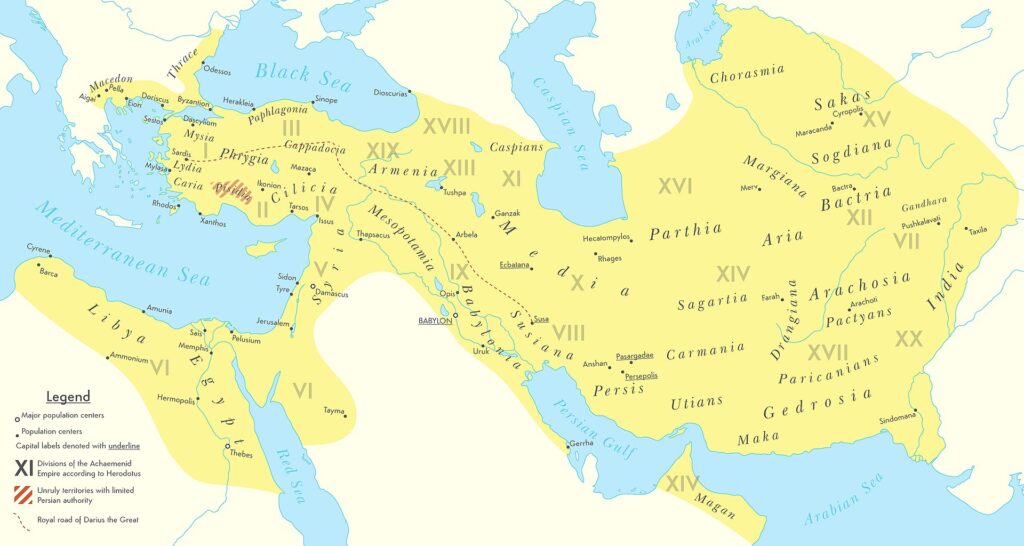
In the 4th century BC, Alexander the Great defeated and conquered the Persian Empire.
By 326 BC, this empire encompassed the north-western part of the Indian subcontinent as far as the River Beas (which the Greeks called the Hyphasis). Alexander established satrapies and established several colonies. He turned south when his troops, aware of the immensity of India, refused to advance further east.
From 180 BC to around 10 AD, more than thirty Hellenistic kings succeeded one another, often in conflict with one another. This period is known in history as the « Indo-Greek Kingdoms ». One of these kingdoms was founded when the Greco-Bactrian king Demetrius invaded India in 180 BC, creating an entity that seceded from the powerful Greco-Bactrian kingdom, Bactria (including northern Afghanistan, part of Uzbekistan, etc.).
During the two centuries of their reign, these Indo-Greek kings integrated Greek and Indian languages and symbols into a single culture, as evidenced by their coins, and blended ancient Greek, Hindu, and Buddhist religious practices, as evidenced by the archaeological remains of their cities and signs of their support for Buddhism.
The Maurya Empire and Ashoka the Great

Around 322 BC, Greeks called Yona (Ionians) or Yavana in Indian sources, took part, along with other populations, in the uprising of Chandragupta Maurya, the founder of the Maurya Empire.
Chandragupta’s reign ushered in an era of economic prosperity, reform, infrastructure expansion, and tolerance. Many religions flourished in his kingdom and the empire of his descendants. Buddhism, Jainism, and Ajivika grew in importance alongside the Vedic and Brahmanic traditions, and minority religions such as Zoroastrianism and the Greek pantheon were respected.
Ashoka the Great

The Maurya Empire reached its apogee under the reign of Chandragupta’s grandson, Ashoka the Great, from 268 to 231 BC. Eight years after taking power, Ashoka led a military campaign to conquer Kalinga, a vast coastal kingdom in east-central India. His victory enabled him to conquer a larger territory than any of his predecessors.
Thanks to Ashoka‘s conquests, the Maurya Empire became a centralized power covering a large part of the Indian subcontinent, stretching from present-day Afghanistan in the west to present-day Bangladesh in the east, with its capital at Pataliputra (present-day Patna in India).
Before this, the Maurya Empire had existed in some disarray until 185 BC. It was Ashoka who transformed the kingdom with the extreme violence that characterized the early part of his reign. Between 100,000 and 300,000 people were killed in the Kalinga conquest alone!
But the weight of such destruction plunged the king into a serious personal crisis. Ashoka was deeply shocked by the number of people slaughtered by his armies.
Ashoka‘s Edict No. 13 reflects the great remorse felt by the king after observing the destruction of Kalinga:
« His Majesty felt remorse because of the conquest of Kalinga, for in the subjugation of a country not previously conquered, there are necessarily massacres, deaths, and captives, and His Majesty feels deep sorrow and regret. »
Ashoka subsequently renounced military displays of force and other forms of violence, including cruelty to animals. Deeply convinced by Buddhism, he devoted himself to spreading his vision of dharma, just and moral conduct. He encouraged the spread of Buddhism throughout India.
According to French archaeologist and scholar François Foucher, even if cases of animal abuse did not disappear overnight, belief in the brotherhood of all living beings still flourished in India more than anywhere else.
In 250 BC, Ashoka convened the third Buddhist council. Theravada sources mention that, in addition to settling internal disputes, the council’s main function was to plan the dispatch of Buddhist missionaries to various countries to spread Buddhism.

These reached as far as the Hellenistic kingdoms to the west, starting with neighboring Bactria. Missionaries were also sent to South India, Sri Lanka, and Southeast Asia (possibly Burma). The fact that these missions were deeply involved in the flourishing of Buddhism in Asia during Ashoka‘s time is well supported by archaeological evidence. Buddhism was not spread by pure chance but as part of a creative, stimulating, and well-planned political operation along the Silk Roads.
According to the « Mahavamsa » (“Great Chronicle” XII, 1st paragraph), relating the history of the Sinhalese and Tamil kings of Ceylon (today Sri Lanka), the Council and Ashoka sent the following Buddhist missionaries:
- Elder Majjhantika led the mission to Kashmir and Gandhara (today’s northwest Pakistan and Afghanistan);
- Elder Mahadeva led the mission in southwest India (Mysore, Karnataka);
Rakkhita led the mission in southeast India (Tamil Nadu); - Elder Yona (Ionian, Greek) Dharmaraksita led the mission in Aparantaka (« the western frontier ») comprising northern Gujarat, Kathiawar, Kutch, and Sindh, which were all parts of India at the time);
- The elder Mahadharmaraksita led the mission to Maharattha (the western peninsular region of India);
- Maharakkhita (Maharaksita Thera) led the mission to the land of the Yona (Ionians), which probably refers to Bactria and possibly to the Seleucid kingdom;
- Majjhima Thera conducted the mission to the Himavat region (northern Nepal, Himalayan foothills);
- Sona Thera and Uttara Thera led missions to Suvarnabhumi (somewhere in Southeast Asia, perhaps Myanmar or Thailand); and
- Mahinda, Ashoka‘s eldest son and therefore Prince of his kingdom, accompanied by his disciples, went to Lankadeepa (Sri Lanka).
Some of these missions were successful, such as those that established Buddhism in Afghanistan, Gandhara, and Sri Lanka.
Gandharan Buddhism, Greco-Buddhism, and Sinhalese Buddhism have for generations been a powerful inspiration for the development of Buddhism in the rest of Asia, particularly China.
While missions to the Hellenistic Mediterranean kingdoms seem to have been less successful, it is possible that Buddhist communities were established for a limited period in Egyptian Alexandria, which may have been the origin of the so-called Therapeutae sect mentioned in some ancient sources such as Philo of Alexandria (c. 20 BC – 50 AD).
The Jewish Essenes and the Therapeutae of Alexandria are said to be communities founded on the model of Buddhist monasticism.
According to French historian André Dupont-Sommer (1900-1983), « India is believed to have been the source of this vast monastic movement, which shone brightly within Judaism itself for around three centuries ». According to him, this influence contributed to the emergence of Christianity.
Ashoka’s Edicts
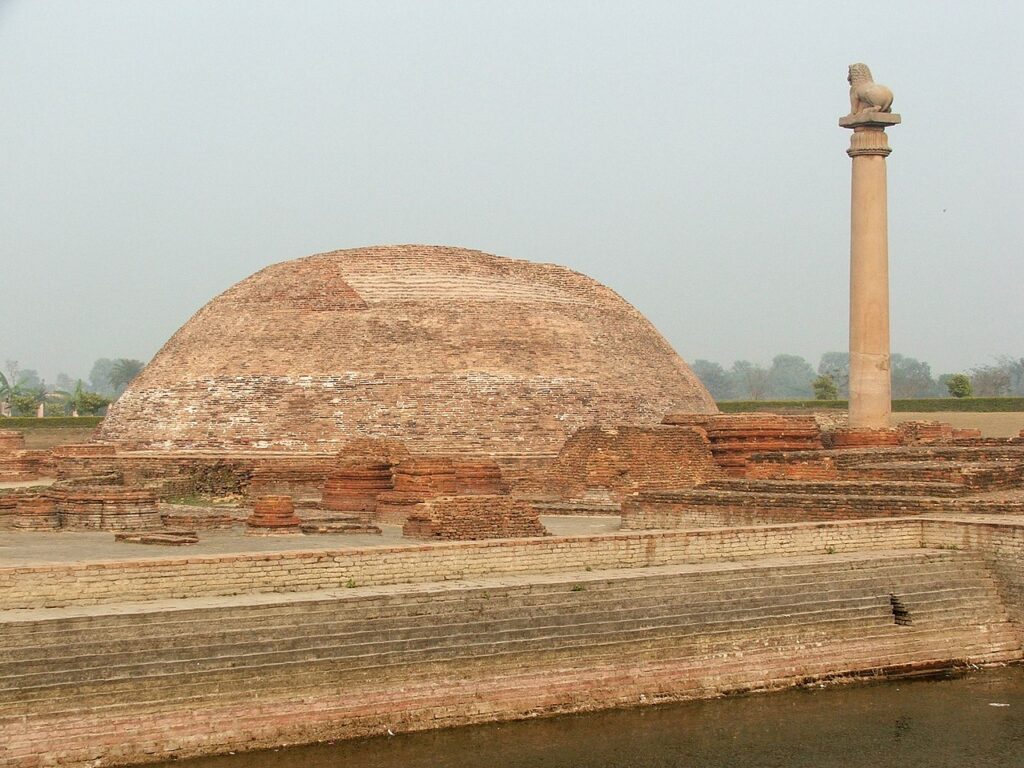
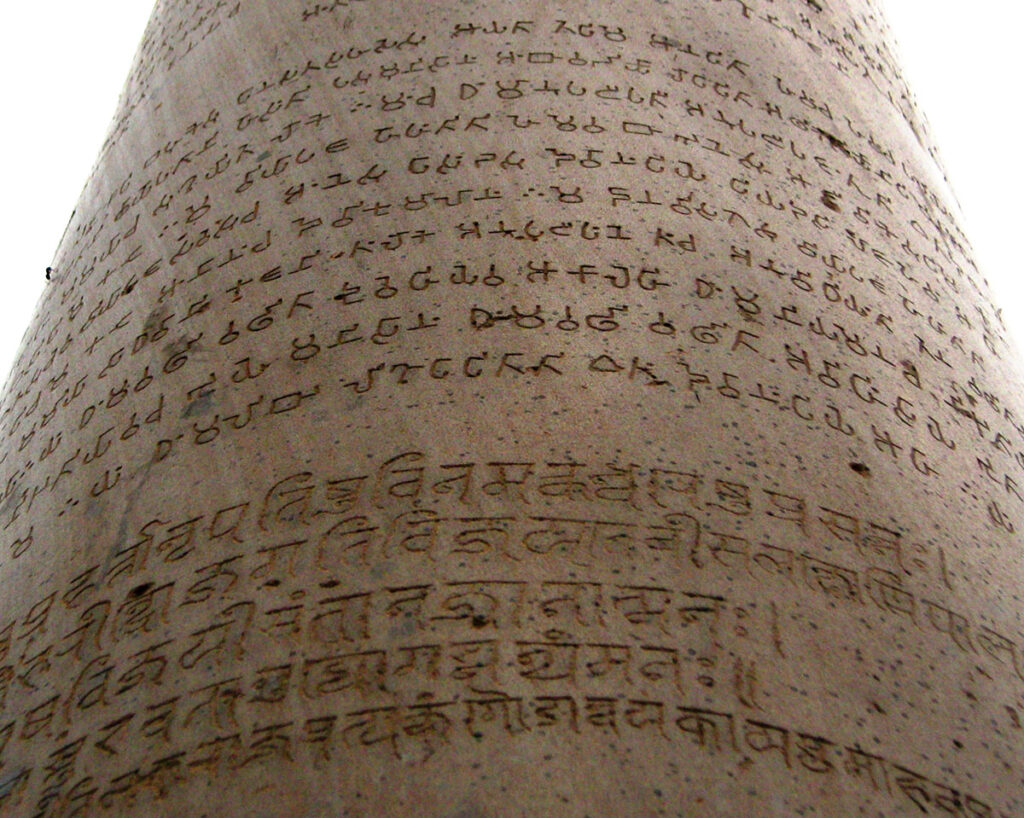
King Ashoka presented his messages through edicts engraved on pillars and rocks in various parts of the kingdom, close to stupas on pilgrimage sites and along busy trade routes.
Some thirty of them have been preserved. They were not written in Sanskrit, but:
- in Greek (the language of the neighboring Greco-Bactrian kingdom and the Greek communities of Ashoka‘s kingdom),
- in Aramaic (the official language of the ancient Achaemenid Empire); and
in various dialects of Prâkrit (*3), including ancient Gândhârî, the language spoken in Gandhara. The edicts were engraved in the language relevant to the region. For example, in Bactria, where the Greeks dominated, an edict near present-day Kandahar was written solely in Greek and Aramaic.
Content of Edicts
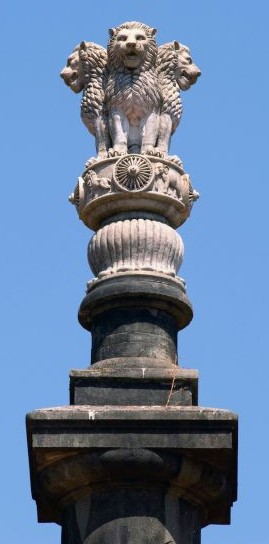
Some edicts reflect Ashoka‘s deep adherence to the precepts of Buddhism and his close relationship with the sangha, the Buddhist monastic order. He also uses the specifically Buddhist term dharma to designate the qualities of the heart that underpin moral action.
In the Minor Rock Edict N° 1, the King declares himself « a lay follower of the Buddha’s teaching for more than two and a half years », but admits that so far, he has « not made much progress ». He adds that « for a little over a year now, I’ve been getting closer to the Order ».
In the Minor Rock Edict N° 3 from Calcutta-Bairat, Ashoka emphasized that « what has been said by the Buddha has been said well » and described the Buddha’s teachings as the true dharma.
Ashoka recognized the close links between the individual, society, the king, and the state. His dharma can be understood as morality, goodness, or virtue, and the imperative to pursue it gave him a sense of duty. The inscriptions explain that dharma includes self-control, purity of thought, liberality, gratitude, firm devotion, truthfulness, protection of speech, and moderation in spending and possessions. Dharma also has a social aspect. It includes obedience to parents, respect for elders, courtesy and liberality towards Brahma worshipers, courtesy towards slaves and servants, and liberality towards friends, acquaintances, and relatives.
Non-violence, which means refraining from harming or killing any living being, was an important aspect of Ashoka‘s dharma. Not killing living beings is described as part of the good (Minor Rock Edict N° 11), as is gentleness towards them (Minor Rock Edict N° 9). The emphasis on non-violence is accompanied by the promotion of a positive attitude of care, gentleness, and compassion.
Ashoka adopts and advocates a policy based on respect and tolerance of other religions. One of his edicts reads as follows:
« All men are my children. To my children, I wish prosperity and happiness in this world and the next; my wishes are the same for all men ».
Far from being sectarian, Ashoka, based on the conviction that all religions share a common, positive essence, encourages tolerance and understanding of other religions:
« The beloved of the gods, King Piyadassi (name Ashoka gave himself after converting to Buddhism), wishes that all sects may dwell in all places, for all seek self-mastery and purity of spirit. (Major Rock Edict N° 7)
And he adds:
« For whoever praises his own sect or blames other sects, – all out of pure devotion to his own sect, i.e. intending to glorify his own sect, – if he does so, he is rather seriously harming his own sect. But concord is meritorious, (i.e.) they must both listen to and obey each other’s morals. » (Major Rock Edict N° 12)
Ashoka had the idea of a political empire and a moral empire, the latter encompassing the former. His conception of his constituency extended beyond his political subjects to include all living beings, human and animal, living within and outside his political domain.
His inscriptions express his fatherlike conception of kingship and describe his welfare measures, including the provision of medical treatment, the planting of herbs, trees, and roots for people and animals, and the digging of wells along roads (Major Rock Edict N° 2).
The emperor had become a sage. He ran a centralized government from the capital of the Maurya empire: Pataliputra.
Guided by the Arthashastra, the Mauryan state became the central land clearing agency with the objective of extending settled agriculture and breaking up the disintegrating remnants of the frontier hill tribes. Members of such tribes cultivated on these newly cleared forest lands. Agriculture developed thanks to irrigation, and good roads were built to link strategic points and political centers. Centuries before our great Duke de Sully in France, Ashoka demanded that these roads be lined with shade trees, wells, and inns. His administration collected taxes. He made his inspectors accountable to him. The king’s dhamma-propagating activities were not limited to his own political domain but extended to the kingdoms of other rulers.
Hence, Ashoka‘s very existence as a historical figure was close to being forgotten! But since the deciphering of sources in Brahmi script in the 19th century, Ashoka has come to be regarded as one of India’s greatest emperors. Today, Ashoka‘s Buddhist wheel is featured on the Indian flag.
As already mentioned, Ashoka and his descendants used their power to build monasteries and spread Buddhist influence in Afghanistan, large parts of Central Asia, Sri Lanka, and beyond to Thailand, Burma, Indonesia, China, Korea, and Japan.
Bronze statues from his time have been unearthed in the jungles of Annam, Borneo, and Sulawesi. Buddhist culture was superimposed on the whole of Southeast Asia, although each region, happily enough, kept some of its own personality, touch and character.
The Kushan Empire

The Maurya Empire, which ruled Bactria and other ancient Greek satrapies, collapsed in 185 BC, hardly five decades after the death of Ashoka, accused of spending too much on infrastructure and Buddhist missions and not enough on national defense. Some academics argue that Pushyamitra Sunga, who assassinated the last Mauryan monarch, Brihadratha, signalled a strong Brahmanical response against Ashoka’s pro-Buddhist policies and Dhamma. Others argue that Ashoka’s ahimsa (non-violence) philosophy was a contributing factor to the decline of the Mauryan Empire. The king’s non-violence also meant that he stopped exercising control over officials, particularly those in the provinces, who had become tyrannical and required control.
These were turbulent times. In the first century AD, the Kushans, one of the five branches of the Chinese Yuezhi confederation, emigrated from northwest China (Xinjiang and Gansu) and, following in the footsteps of the Iranian Saka nomads, seized control of ancient Bactria. They formed the Kushan empire in the Bactrian territories at the beginning of the 1st century. This empire soon extended to include much of what is now Uzbekistan, Afghanistan, Pakistan and northern India, at least as far as Saketa and Sarnath, near Varanasi (Benares).

The founder of the Kushan dynasty, Kujula Kadphises, followed Greek cultural ideas and iconography after the Greco-Bactrian tradition and was a follower of the Shivaite sect of Hinduism. Two later Kushan kings, Vima Kadphises and Vasudeva II, were also patrons of Hinduism and Buddhism.
The homeland of their empire was in Bactria, where Greek was initially the administrative language before being replaced by « Bactrian » a language written in Greek characters until the 8th century, when Islam replaced it with Arabic.

The Kushans also became great patrons of Buddhism, particularly Emperor Kanishka the Great, who played an important role in its spread via the Silk Roads to Central Asia and China, ushering in a 200-year period of relative peace, rightly described as the « Pax Kushana ».
It also seems that, from the very beginning, Buddhism flourished among the merchant class, whose birth barred access to the religious orders of India and the Himalayas.
Buddhist thought and art developed along trade routes between India, the Himalayas, Central Asia, China, Persia, Southeast Asia, and the West. Travelers sought the protection of Buddhist images and made offerings to shrines along the way, collecting portable objects and shrines for personal use.
The term 4th Buddhist Council refers to two different events, one in the Theravada and the other in the Mahayana schools.
- According to Theravada tradition: to prevent the Buddha’s teachings, which had hitherto been transmitted orally, from being lost, five hundred monks led by the Venerable Maharakkhita gathered at Tambapanni, Sri Lanka in 72 AD, under the patronage of King Vattagamani (r. 103 — 77 BC) to write down the “Pâli Canon” on palm leaves. (*4) The work, which is said to have lasted three years, took place in the Aloka Lena cave near present-day Matale;
- However, according to Mahayana tradition, it was 400 years after the Buddha’s extinction that five hundred Sarvastivadin monks gathered in Kashmir in 72 AD to compile and clarify their doctrines under the direction of Vasumitra and the patronage of Emperor Kanishka. They produced the Mahavibhasa (Great Exegesis) in Sanskrit.
According to several sources, the Indian Buddhist monk Asvaghosa considered the first classical Sanskrit playwright whose attacks on the caste system we have presented, served as King Kanishka‘s spiritual adviser during the last years of his life.

Note that the oldest Buddhist manuscripts discovered to date, such as the 27 birch-bark scrolls acquired by the British Library in 1994 and dating from the 1st century, were found not in « India », but buried in the ancient monasteries of Gandhara, the central region of the Maurya and Kushan empire, which includes the Peshawar and Swat valleys (Pakistan), and extends westwards to the Kabul valley in Afghanistan and northwards to the Karakorum range.
Thus, after a first great impetus given by King Ashoka the Great, Gandhara culture was given a second wind under the reign of the Kushan king Kanishka. The cities of Begram, Taxila, Purushapura (now Peshawar), and Surkh Kotal reached new heights of development and prosperity.
The Miracle of Gandhara
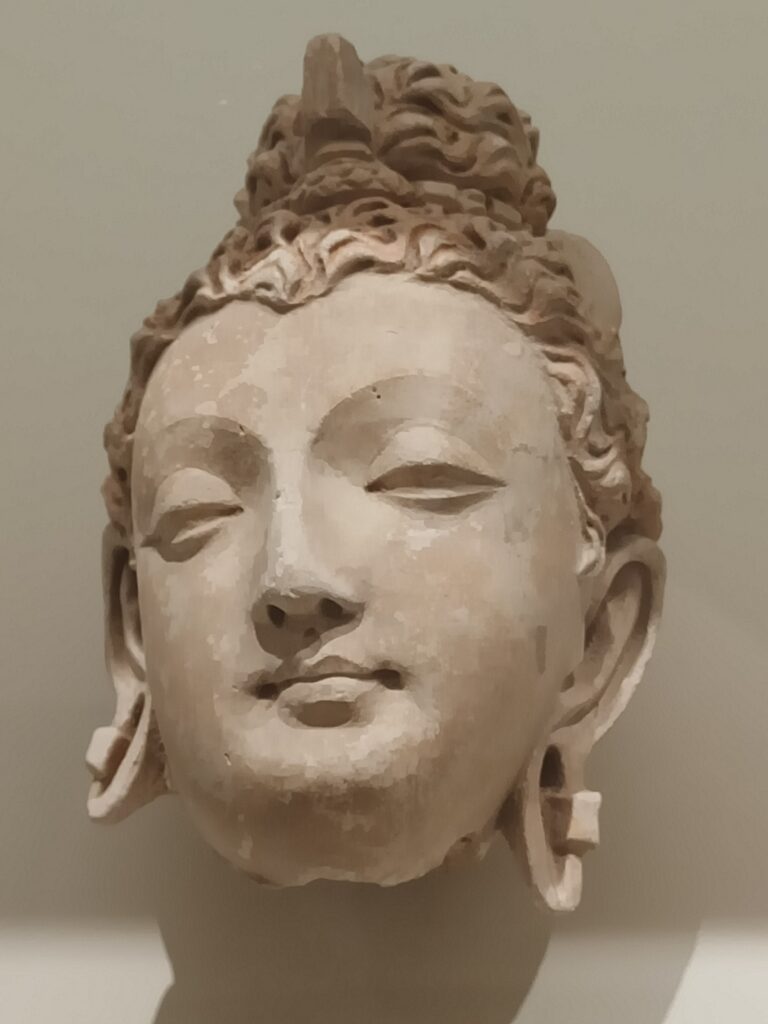
It cannot be overemphasized that Gandhara, especially in the Kushan period, was at the heart of a veritable renaissance of civilization, with an enormous concentration of artistic production and unparalleled inventiveness. While Buddhist art was mainly focused on temples and monasteries, objects for personal devotion were very common.
Thanks to Gandhara’s art, Buddhism became an immense force for beauty, harmony, and peace, and has conquered the world.
Buddhism favored the creation of numerous artistic works that elevate thought and morality by using metaphorical paradoxes. The prevailing mediums and supports were silk paintings, frescoes, illustrated books and engravings, embroidery and other textile arts, sculpture (wood, metal, ivory, stone, jade), and architecture.
Here are a few examples:
A. Poetry
For most Westerners, Buddhism is a « typical » emanation of Asian culture, generally associated with India, Tibet, and Nepal, but also with China and Indonesia. Few of them know that the oldest Buddhist manuscripts known to date (1st century AD) were discovered, not in Asia, but rather in Central Asia, in ancient Buddhist monasteries of Gandhara.
Originally, before their transcription into Sanskrit (for long years the language of the elite), they were written in Gândhârî, an Indo-Aryan language of the Prâkrit group, transcribed with the “kharosthi alphabet” (an ancient Indo-Iranian script).
Gandhârî was the lingua franca of early Buddhist thought. Proof of this is the Buddhist manuscripts written in Gândhârî that traveled as far away as eastern China, where they can be found in the Luoyang and An-yang inscriptions.
To preserve their writings, the Buddhists were at the forefront of adopting Chinese book-making technologies, notably paper and xylography (single-sheet woodcut). This printing technique consists of reproducing the text to be printed on a transparent sheet of paper, which is turned over and engraved on a soft wooden board. The inking of the protruding parts then allows multiple print runs. This explains why the first fully printed book is the Buddhist Diamond Sutra (circa 868), produced using this process.
The Khaggavisana Suttra, literally « The Horn of the Rhinoceros », is a wonderful example of authentic Buddhist religious poetry. Known as the « Rhinoceros Sutra », this poetic work is part of the Pali collection of short texts known as the Kuddhhaka Nikava, the fifth part of the Pitaka Sutta, written in the 1st century CE.
Since tradition grants the Asian rhinoceros a solitary life in the forest – the animal dislikes herds – this sutra (teaching) bears the apt title « On the value of the solitary and wandering life ». The allegory of the rhinoceros helps communicate to devotees the keen sense of individual sovereignty required by the moral commitments prescribed by the Buddha to end suffering by disconnecting from earthly pleasures and pains. Excerpt:

Shunning violence towards all beings,
never harming a single one of them,
compassionately helping with a loving heart,
wander alone like a rhinoceros.
One keeping company nurtures affection,
and from affection suffering arises.
Realizing the danger arising from affection,
wander alone like a rhinoceros.
In sympathizing with friends and companions,
the mind gets fixed on them and loses its way.
Perceiving this danger is familiarity,
wander alone like a rhinoceros.
Concerns that one has for one’s sons and wives,
are like a thick and tangled bamboo tree.
Remaining untangled like a young bamboo,
wander alone like a rhinoceros.
Just like a deer, wandering free in the forest,
goes wherever he wishes as he grazes,
so a wise man, treasuring his freedom,
wanders alone like the rhinoceros.
Leave behind your sons and wives and money,
all your possessions, relatives, and friends.
Abandoning all desires whatsoever,
wander alone like the rhinoceros (…)
B. Literature
Two other masterpieces from the same oeuvre are the famous Jataka, or « Birth stories of the Buddha’s previous lives », and the Milindapanha, or « King Milinda’s questions”.
The Jataka, which features numerous animals, shows how, before the last human incarnation in which he attained nirvana, the Buddha himself was reincarnated countless times as an animal – as various kinds of fish, as a crab, a rooster, a woodpecker, a partridge, a francolin, a quail, a goose, a pigeon, a crow, a zebra, a buffalo, several times as a monkey or an elephant, an antelope, a deer and a horse. One story describes how the Bodhisattva was born as a Great Monkey who dwelled in a beautiful Himalayan forest among a large troop of monkeys. And since it’s Buddha who’s incarnated in the animal, the monkey suddenly speaks words of great wisdom.
But on other occasions, the characters are animals, while our Bodhisattva appears in human form. These tales are often peppered with piquant humor. They are known to have inspired La Fontaine, who must have heard them from Dr. François Bernier, who learned them from him while working as a physician in India for eight years.

The Questions of King Milinda is an imaginative account, a veritable Platonic dialogue between the Greek king of Bactria Milinda (the Greek, Menander), who ruled the Punjab, and the Buddhist sage Bhante Nagasena.
Their lively dialogue, dramatic and witty, eloquent, and inspired, explores the various problems of Buddhist thought and practice from the point of view of a perceptive Greek intellectual, both perplexed and fascinated by the strangely rational religion he discovers on the Indian subcontinent.
Through a series of paradoxes, Nagasena leads the Greek « rationalist » to ascend to the spiritual and therefore transcendental dimension, beyond logic and simple rationality, of nirvana, which, like space, has « no formal cause » and can therefore occur, but « cannot be caused ». So how do we get there?
And to one of his disciples, who once asked him whether the universe was finite or infinite, eternal or not, whether the soul was distinct from the body, what became of man after death, the Buddha replied with a parable:
« Suppose a man is seriously wounded by an arrow, and is taken to a doctor, and the man says: « I will not let this arrow be removed, until I know who wounded me, what caste he is, what village he was born in, what bow he used, what material the arrow was made of, from what direction it was shot. .. » Then this man would surely die before he got the answers. »
C. Urban Planning

One of the great urban and cultural centers and, for a time, the capital of Gandhara, was Taxila or Takshashila (present-day Punjab), founded around 1000 BC on the ruins of a city dating from the Harappan period and located on the eastern bank of the Indus, the junction points between the Indian subcontinent and Central Asia.
Some ruins of Taxila date to the time of the Achaemenid Persian Empire, followed successively by the Mauryan Empire, the Indo-Greek Kingdom, the Indo-Scythians, and the Kushan Empire.

According to some accounts, the University of Ancient Taxila (centuries before the residential bouddhist University of Nalanda founded in 427 AD) can be considered one of the earliest centers of learning in South Asia.
As early as 300 BC, Taxila functioned largely as a “University” offering higher education. Students had to complete their primary and secondary education elsewhere before being admitted to Taxila.
The minimum age requirement was sixteen. Not only Indians but also students from neighboring countries like China, Greece, and Arabia flocked to this city of learning.
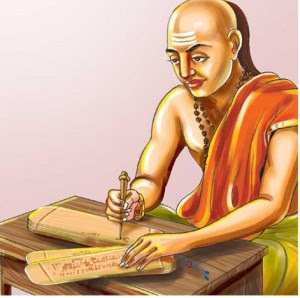
Around 321 BC, it was the great philosopher, teacher, and economist of Gandhara, Chanakya, who helped the first Mauryan emperor, Chandragupta, to seize power.
Under the tutelage of Chanakya, Chandragupta received a comprehensive education at Taxila, encompassing the various arts of the time, including the art of war, for a duration of 7–8 years.
In 303 BC, Taxila fell into their hands, and under Ashoka the Great, the grandson of Chandragupta, the city became a great center of Buddhist learning and art.
Chanakya, whose writings were only rediscovered in the early 20th century and who served as the principal advisor to both emperors Chandragupta and his son Bindusara, is widely considered to have played an important role in establishing the Mauryan Empire.
Also known as Kauṭilya and Vishnugupta, Chanakya is the author of The Arthashastra, a Sanskrit political treatise on statecraft, political science, economic policy, and military strategy. The Arthashastra also addresses the question of collective ethics which ensures the cohesion of a society. He advised the king to launch major public works projects, such as the creation of irrigation routes and the construction of forts around the main production centers and strategic towns in regions devastated by famine, epidemics, and other natural disasters, or by war, and to exempt from taxes those affected by these disasters.

In the 2nd century BC, Taxila was annexed by the Indo-Greek kingdom of Bactria which built a new capital there named Sirkap, where Buddhist temples were contiguous with Hindu and Greek temples, a sign of religious tolerance and syncretism.
Sirkap was built according to the “Hippodamian” grid plan characteristic of Greek cities. (*5)
It is organized around a main avenue and fifteen perpendicular streets, covering an area of approximately 1,200 meters by 400, with a surrounding wall 5 to 7 meters wide and 4.8 kilometers long.
After its construction by the Greeks, the city was rebuilt during the incursions of the Indo-Scythians, then by the Indo-Parthians after an earthquake in the year 30 AD. Gondophares, the first king of the Indo-Parthian kingdom, built parts of the city, including the Buddhist stupa (funerary monument) of the double-headed eagle and the temple of the Sun god. Finally, inscriptions dating from 76 AD demonstrate that the city had already come under Kushan domination. The Kushan ruler Kanishka erected Sirsukh, about 1.5 km northeast of ancient Taxila.
Buddhist sutras from the Gandhara region were studied in China when the Kushan monk Lokaksema (born 147) began translating some of the earliest Buddhist sutras into Chinese. The oldest of these translations show that they were translated from the Gândhârî language.
D. Architecture, the invention of Stupas
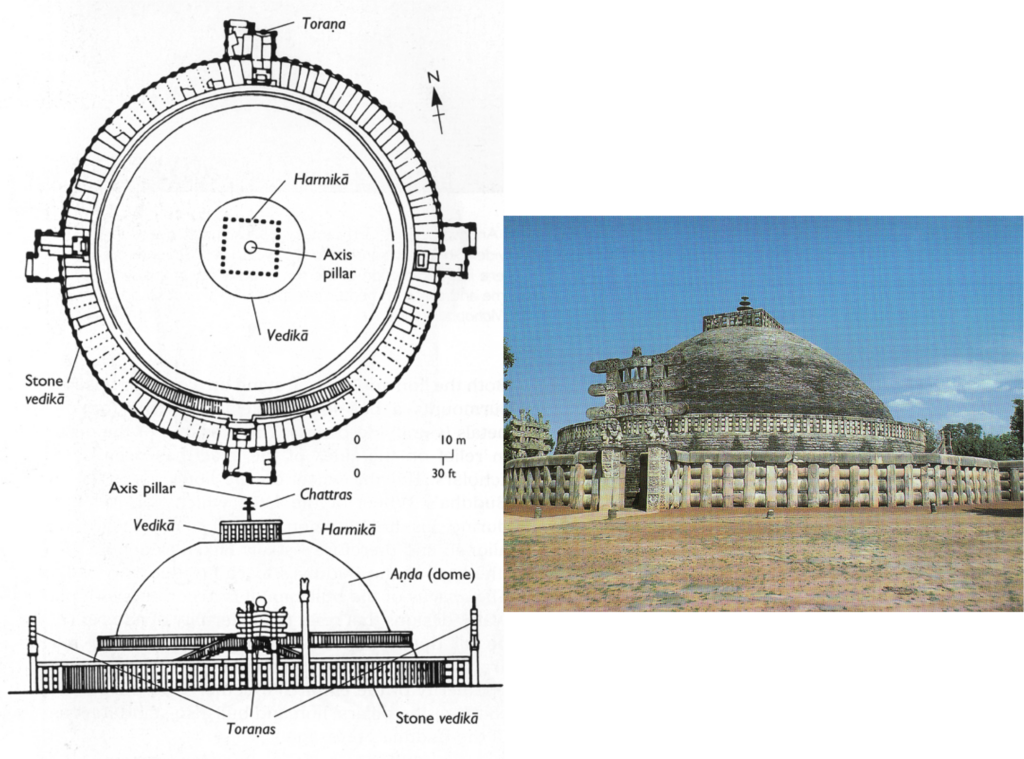
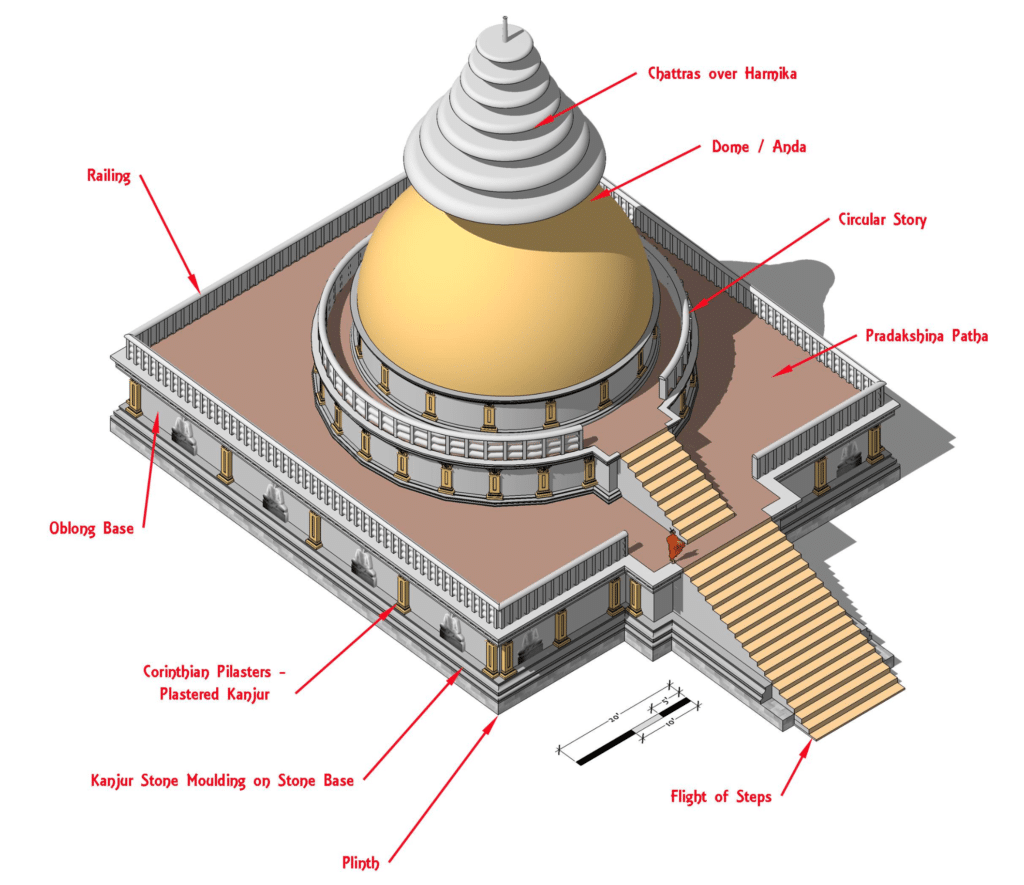
The construction of religious buildings in the form of a Buddhist stupa (reliquary) – a domed monument – began in India as memorials associated with the preservation of the sacred relics of the Buddha.
The stupas are surrounded by a balustrade which serves as a ramp for ritual circumambulation. The sacred area is accessed through doors located at the four cardinal points. Stupas were often built near much older prehistoric burial sites, notably those associated with the Indus Valley Civilization.
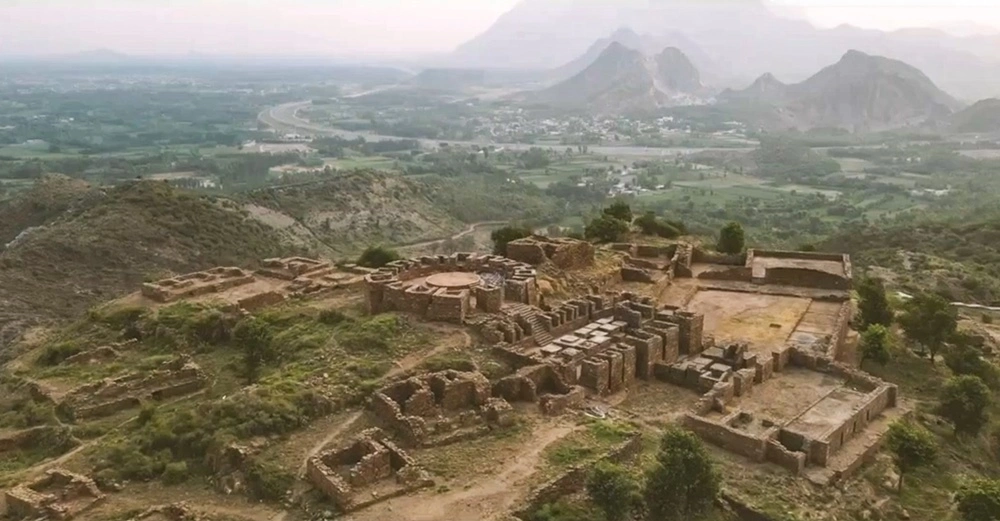
Stone gates and gates covered with sculptures were added to the stupas. The favorite themes are the events of the historical life of the Buddha, as well as his previous lives numbering 550 and described with much irony in the Jatakas. (See B)
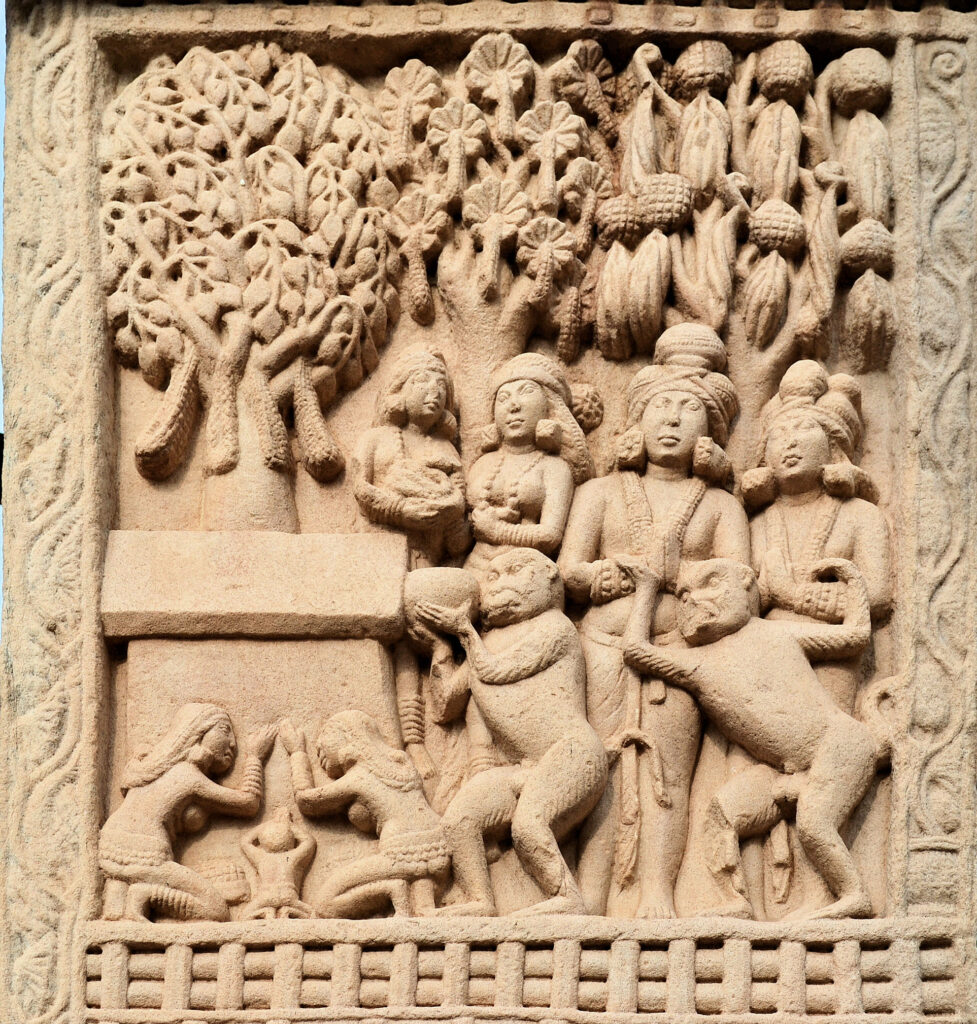
The bas-reliefs of the stupas are like comic strips that tell us about the daily and religious life of Gandhara: wine amphorae, wine goblets (kantaros), bacchanalia, musical instruments, Greek or Indian clothing, ornaments, hairstyles arranged in style. Greek, artisans, their tools, etc. On a vase found inside a stupa, is the inscription of a Greek, Theodore, civil governor of a province in the 1st century BC, explaining in Kharosthi script how the relics were deposited in the stupa.
Many stupas are believed to date from Ashoka‘s time, such as that of Sanchi (Central India) or Kesariya (East India), where he also erected pillars with his edicts and perhaps the stupa of Bharhut (Central India), Amaravati (South-East India) or Dharmarajika (Taxila) in Gandhara (Pakistan). According to Buddhist tradition, Emperor Ashoka recovered the relics of the Buddha in older stupas and erected 84,000 stupas to distribute all these relics throughout Indian territory.
Following in the footsteps of Ashoka, Kanishka ordered the construction of the 400-foot grand stupa at Purushapura (Peshawar), which is among the tallest buildings of the ancient world.
Archaeologists who rediscovered its base in 1908-1909 estimated that this stupa had a diameter of 87 meters. Reports from Chinese pilgrims such as Xuanzang indicate that its height was around 200 meters and that it was covered in precious stones. Also, under the Kushans, huge statues of the Buddha were erected in monasteries and carved into hillsides.
Sculpture: when Buddha became man
ANICONIC PERIOD
It is important to know that in early times Buddha was never depicted in human form. For more than four centuries, his presence is simply indicated by symbolic elements such as a pair of footprints, a lotus (indicating the purity of his birth), an empty throne, an unoccupied space under a parasol, a horse without a rider or the Bodhi fig tree under which he reached nirvana. Scholars do not agree on whether these symbols represent the Buddha himself or whether they simply allude to anecdotes from his life.
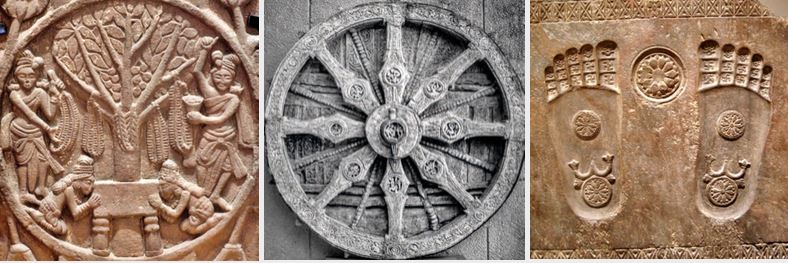
END OF ANICONISM
What led Buddhists to abandon aniconic representations remains a vast mystery. Such a development is quite unique in the history of religions. Imagine Muslims suddenly promoting statues of the prophet Mohammed!
The explanations put forward so far leave us wanting more.
For some, the Buddhists wanted to appeal to a Greek clientele, but both the Greek population and Buddhism were in Gandhara long before the iconographic revolution in question. The timing doesn’t fit.
For others, practitioners, in the absence of Buddha himself, would have been desperate to find a visual focal point, be it a statue, a painting or even a few hairs… But for that purpose, the symbols they adopted (wheel, fig tree, empty chair, footprint, etc.), were sufficient.
“The Jataka of Kalingabodhi (a key script on the multiple lives of Buddha) relates the frustration of the inhabitants of Sravasti who, one day, discover that they have no one to worship when they go to the Jetavana and find the Buddha gone away on a trip. To remedy this situation, upon his return, the Buddha allowed (his disciple) Ananda to plant a bodhi fig tree in front of the (monastery of) Jetavana […] which serves as a substitute center for people’s devotions, each time that the Buddha is not in residence,”
(John Strong, Relics of the Buddha.)
Buddha, it is reported, refused to be represented in any way, fearing that idolatry would flourish.
But over time, Buddhism evolved. In Gandhara, Mahayana Buddhism flourished.
While for the old school, Siddhartha Gautama was only an enlightened man setting an example, for the new school of Mahayana Buddhism, Buddha was a (successful) attempt to personify (the omnipresent spiritual force, the ultimate and supreme principle of life) in the conception of the first Buddha of all. In short, a kind of Jesus. Consequently, just like Christ from the 5th century on, Buddha could be represented in human form and express elevated states of the soul, such as tenderness and compassion. Added to this is the fact that for Mahayana Buddhism, the objective of helping all living beings to attain nirvana and liberate them from suffering has priority over reaching nirvana on a purely personal level.
Unlike many Christian artists in the West, who, following the doxa, represented Christ suffering on the Cross (the founding event of the Christian faith and Church), the artists of Gandhara present the Buddha as a being totally detached from human pain, looking with compassion to all of humanity.
More importantly, the goal is the elimination of suffering in all humans, compassion is not a passive notion for Buddhists. It is not just empathy but rather an empathetic altruism that actively strives to free others from suffering, an act of kindness imbued with both wisdom and love.
DIFFERENCES IN FORM, DIFFERENCES IN CONTENT

Before discussing their differences, let’s simply distinguish four types of Buddha representations, among many others:
- The « Greco-Buddhist » Gandhara school, produced in the region between Hadda (Afghanistan) and Taxila (Punjab), via Peshawar (Pakistan);
- The « Indo-Buddhist » school of Mathura;
- The Andra Pradesh school in southern India;
- The school of the Gupta period (3rd to 5th centuries).
1. Greco-Buddhist in Gandhara
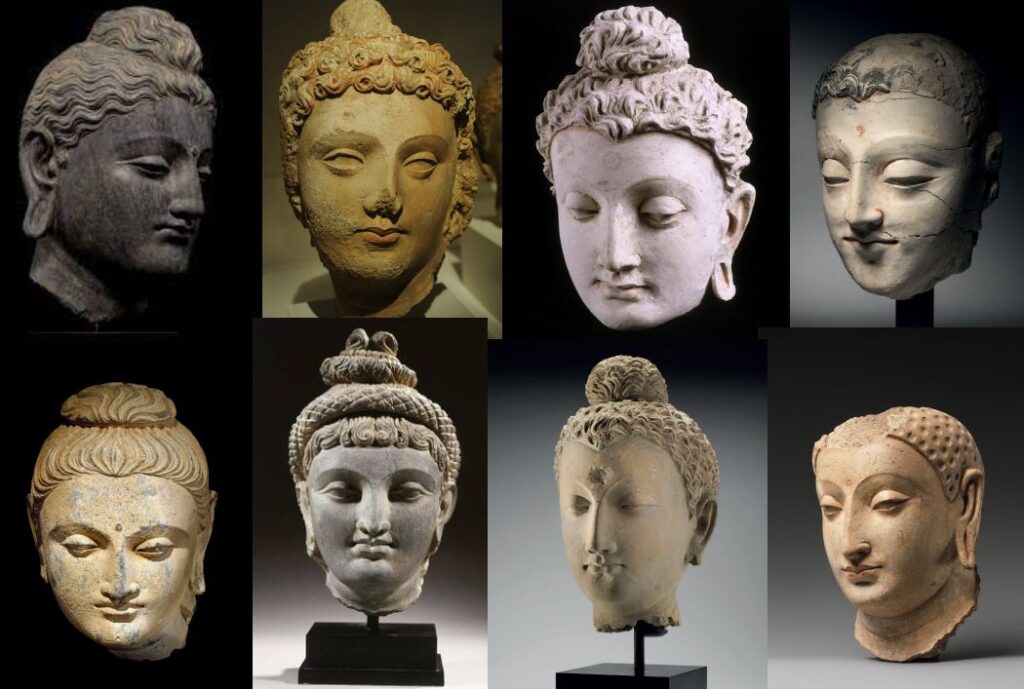
The term « Greco-Buddhist » refers to archaeologist Alfred Foucher’s (1865-1952) 1905 Sorbonne thesis on Gandhara art.
As André Malraux (1901-1976) wrote in Les Voix du silence in 1951, Greco-Buddhist art is the encounter between Hellenism and Buddhism. Instead of saying that art from Greece had metamorphosed into Buddhist art, as Malraux put it, I think that in Gandhara, it was Buddhist art that appropriated the best of Indian, Greek and steppe aesthetics.
However, Foucher was right to insist, against his English friends, that the influence was Hellenic and not Roman. For their part, with India emancipating itself from the British Empire, Indian scholars tried to validate the thesis of an indigenous creation of the Buddha image, contrasting the Gandhara style, which Foucher wanted to be Greco-Buddhist, with the style of Mathura, in the Delhi region, also part of the Kushan empire, and seen by some as contemporary, even if it is far less prolix than Gandhara art.
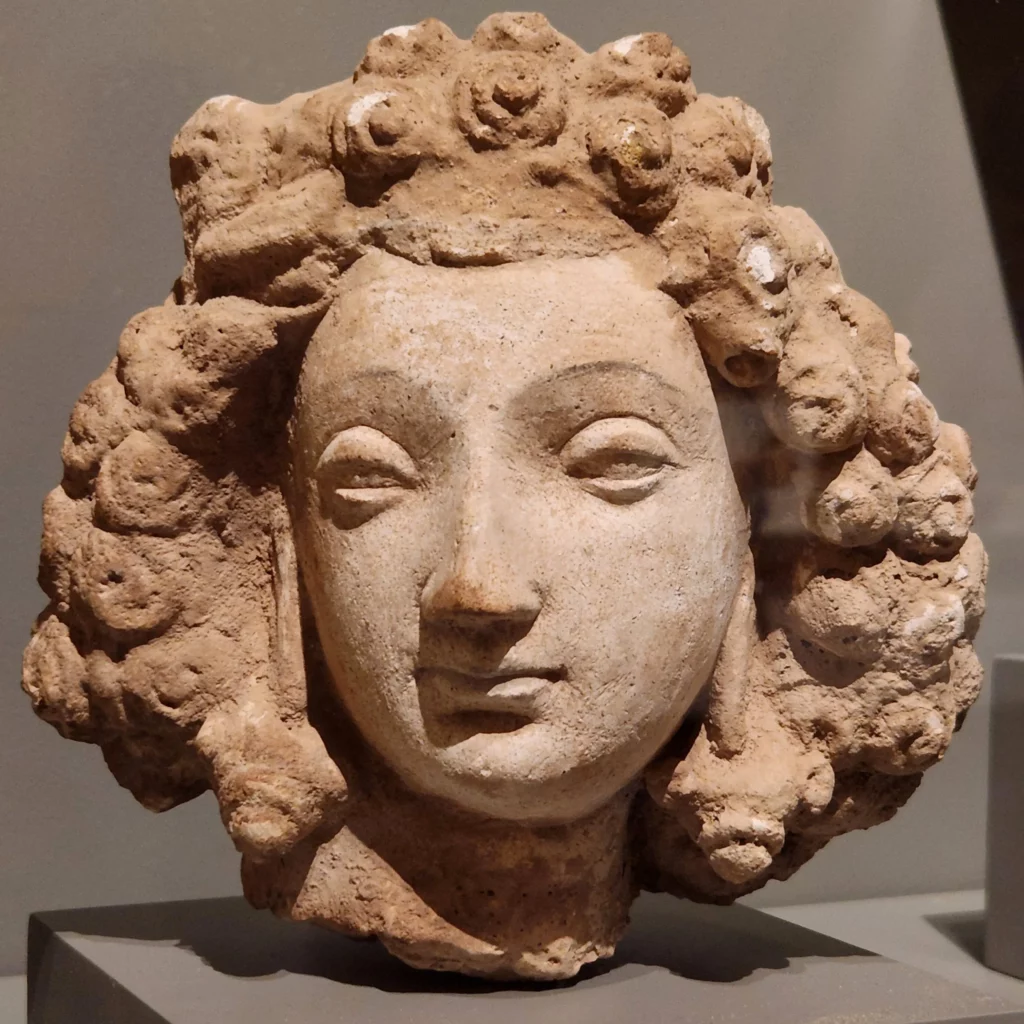
Gandhara art really took off during the Kushan period, particularly under the reign of King Kanishka.
Thousands of images were produced and spread throughout the region, from portable Buddhas to monumental statues in sacred places of worship.
In Gandhara, Buddha is depicted very realistically as a beautiful person, often a young man or even a woman. The spiritual charge is such that gender is no longer essential. We don’t know whether these are beautiful portraits taken from life, or pure figments of the artist’s imagination.
Buddha is often shown in meditative posture to evoke the moment when he reaches nirvana.


Crowned with a halo, his face serious or smiling, his eyes half-closed, he radiates light. Full of serenity, he embodies detachment, concentration, wisdom and benevolence.
His hair in a bun (the ushnisha) at the top of his head indicates that he is gifted with supramundane knowledge. The black dot between his eyes symbolizes the third eye, the eye of enlightenment.
In some sculptures, this cavity contains a crystal pearl, symbolizing radiant light. The earlobes are elongated to accommodate the heavy jewelry once worn by the young prince Siddhartha during his princely youth.
The positioning of the hands, as in the rest of Indian art, responds to codes. These include the « abhayamudra », the gesture of reassurance, with the palm facing outwards; the « varamudra », symbolizing giving, with the hand hanging open and the arm half-bent; or the « vitarkamudra », symbolizing argumentation, with the hand raised to chest height, half-closed, palm forward, index finger curved towards the thumb.
At Gandhara, Buddha is dressed in a monastic cloak covering both shoulders. The fabric is neither cut nor sewn, but simply draped in a Greek style around the body. The barely stylized folds follow natural volumes.
2. The School of Mathura
King Kanishka, while supporting all religions he found worthy, did not hide his preference for Buddhism. In practice, he encouraged both the Gandhara school of Greco-Buddhist art (in Taxila and Hadda) and the Indo-Buddhist school (in Mathura, closer to South Asia).
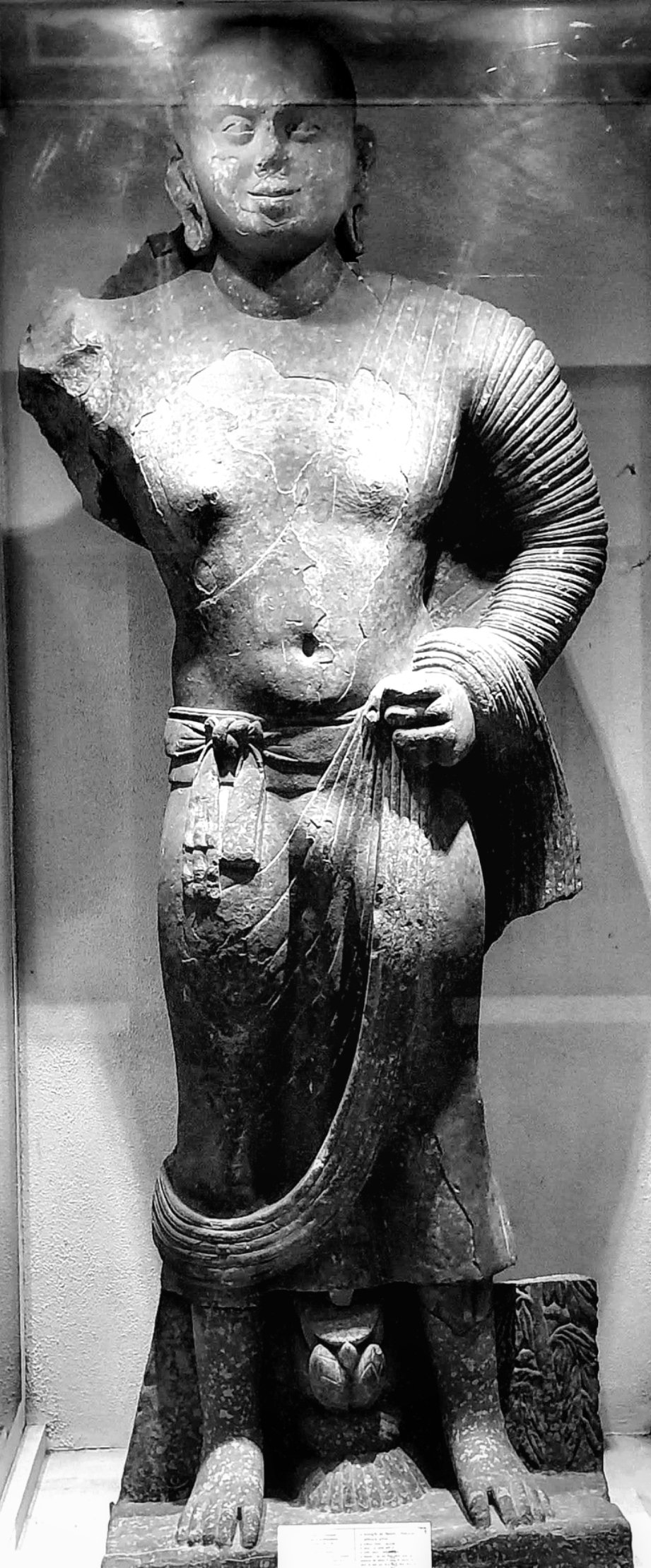

As one can see, in Mathura, local artists produced a very different type of Buddha. His body is dilated by the sacred breath (prana) and his monastic robe is draped in the Indian style in a way that bares the right shoulder.
Mathura artists used the image of statues of the pre-Buddhist yaksha cults of nature as models for their productions. The body position is often more static and without contrapposto. Clothing can be so thin that the lower parts of the anatomy make a showing and detract the viewers’ concentration on Buddha’s spiritual nature.
3. School of Andhra Pradesh

A third type of influential Buddha type developed in Andhra Pradesh in southern India, where images of large proportions, with serious, unsmiling faces, are dressed in robes that also reveal the left shoulder. These southern sites served as artistic inspiration for the Buddhist land of Sri Lanka, at the southern tip of India, and Sri Lankan monks visited them regularly. Many statues in this style spread from there throughout Southeast Asia.
4. The Gupta period
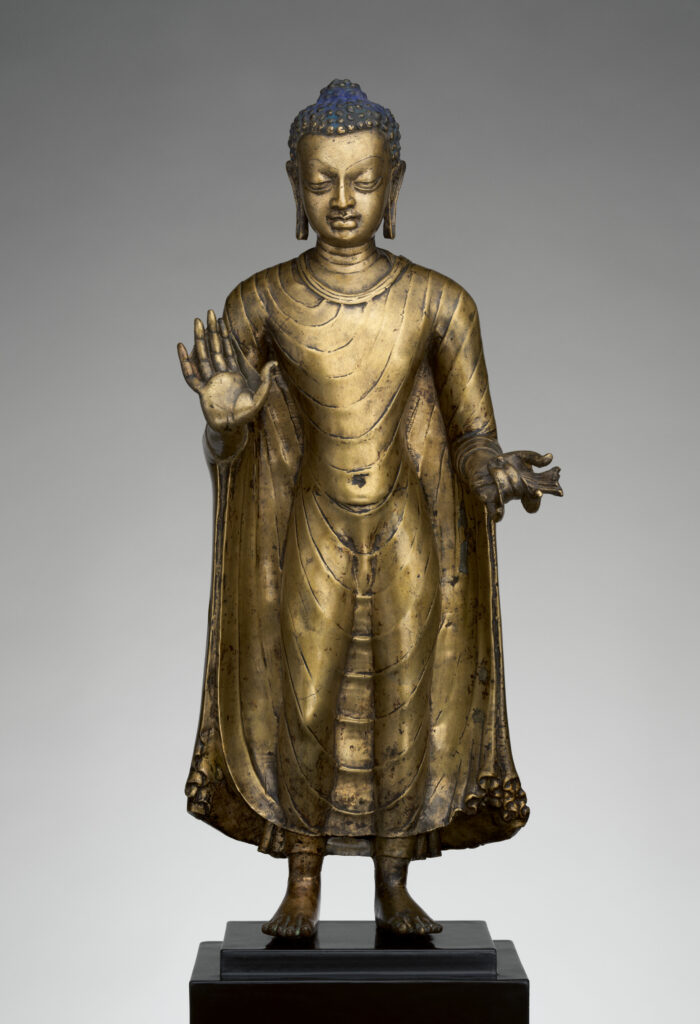
The Gupta period, from the 4th to 6th centuries AD, in northern India, often referred to as the Golden Age, is believed to have synthesized the three schools. In seeking an “ideal” image for mass production, mannerism took over.
The Gupta Buddhas have their hair arranged in small individual curls, and the robes have a network of strings to suggest the folds of the draperies (as at Mathura).
With their downward gaze and spiritual aura, the Gupta Buddhas became the model for future generations of artists, whether in post-Gupta and Pala India or Nepal, Thailand, and Indonesia.
Metal Gupta statues of the Buddha were also carried by pilgrims along the Silk Road to China and Korea where Confucius literati sometimes felt threatened by the rise of Buddhism.
But the Buddhas of Gandhara are very special and truly unique. They are distinct examples escaping any codification and standards. They were made by artists with a high spirituality, exploring new frontiers of beauty, movement, and freedom, and not objects produced to satisfy an emerging market.
As early as the first century BC, local artists, who had worked with perishable materials such as brick, wood, thatch, and bamboo, adopted stone on a very large scale. The new material used was mainly a light to dark colour gray shale stone (in the Kabul River valley and Peshawar region). Later periods are characterized by the use of stucco and clay (a specialty of Hadda).
The origin of Buddha’s beautiful image is a subject Pakistanis, Indians, Afghans, and Europeans like to wrangle about today. All claim to have been the main sponsors and authors of the « Miracle of Gandhara », but few ask how it came about. The techniques used for the sculptures and coins of Gandhara are very close to those of Greece. Questions about whether they were created by traveling Greek sculptors or by the local artists they trained are up for discussion. Who did what and when remains an open question, but does it really matter?
When Asia meets Greece
Let’s take a look at some of the artistic expressions that testify to the beautiful encounter between Hellenic culture and Central Asian and Indian local cultures.
A. Kushan Coins

A gold coin dating from 120 AD shows the king dressed in a heavy Kushan cloak and long boots, with flames emanating from the shoulders, holding a standard in his left hand and making a sacrifice on an altar with the legend in Greek characters: “King of kings, Kanishka the Kushan”.
The reverse of the same coin represents a standing Buddha, in Greek costume, making the “fear nothing” (abhaya mudra) gesture with his right hand and holding a fold of his robe in his left hand. The legend in Greek characters now reads ΒΟΔΔΟ (Boddo), for the Buddha.
B. Bimaran Reliquary
A truly classical theme in the repertoire of any artist of the time consists of showing Buddha surrounded, welcomed, and protected by the deities of other beliefs and more ancient religions.
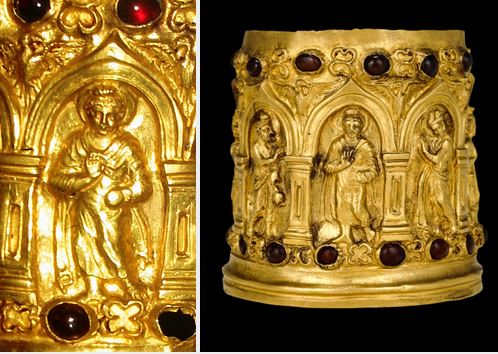
The oldest such representation known to date appears on a reliquary found in the Bimaran stupa in northwestern Gandhara. On this small gold urn, known as the Bimaran casket, generally dated 50-60 AD, there appears, inside vaulted niches of Greco-Roman architecture, a “Hellenistic” representation of the Buddha (hairstyle, contrapposto, prestigeous wrap, etc.), surrounded by the Indian deities Brahma and Shakra.
Just like Ashoka, the almost secular Kanishka, did not intend to reign against but with all and “above” all religions.
Thus, on occasion, the Greek deities, represented on coins (Zeus, Apollo, Heracles, Athena…), rub shoulders with the deities of Vedism, Zoroastrianism, and Buddhism.
Another example of this form of inclusiveness, is the cave and the temple carved into the rock in Ellora, in central India, with representatives of the three religions (Buddhism, Hinduism, and Jainism) rubbing shoulders in the center.
C. The Hadda Triad


Another exquisite example of this Gandharan art is a sculptural group known as the Triad of Hadda, excavated at Tapa Shotor, a large Sarvastivadin monastery near Hadda in Afghanistan, dating from the 2nd century AD.

To give an idea of its vast artistic production, it is worthy of note that some 23,000 Greco-Buddhist sculptures, in clay and plaster, were unearthed in Hadda alone between the 1930s and 1970s.
The site, heavily damaged during recent wars, had beautiful statues, including a seated Buddha (image above), dressed in a Greek chlamys (white coat), with curly hair, accompanied by Heracles and Tyche (Greek goddess of fortune and of prosperity), dressed in a chiton (Greek dress), holding a cornucopia.
Here, the only adaptation to local traditions of Greek iconography is the fact that Heracles no longer holds in his hand his usual club but the thunderbolt of Vajrapani (from the Sanskrit word which means “thunderbolt” (vajra) and « in the hand » (pani), one of the first three protective deities surrounding the Buddha.

Another statue recalls the portrait of Alexander the Great. Unfortunately, only photographs remain of this sculptural ensemble, .
According to Afghan archaeologist Zemaryalai Tarzi, the Tapa Shotor Monastery, with its clay sculptures dating back to the 2nd century AD, represents the « missing link » between the Hellenistic art of Bactria and the later stucco sculptures found at Hadda, generally dating back to between the 3rd – 4th century AD. Traditionally, the influx of master artists of Hellenistic art has been attributed to the migration of Greek populations from the Greco-Bactrian cities of Ai-Khanoum and Takht-I-Sangin (Northern Afghanistan).

Tarzi suggests that Greek populations settled in the plains of Jalalabad, which included Hadda, around the Hellenistic city of Dionysopolis (Nagara), and were responsible for the Buddhist creations of Tapa Shotor in the 2nd century AD.
The Greek colonists who remained in Gandhara (the “Yavanas” or Ionians) after the departure of Alexander, either by choice or as populations condemned to exile by Athens, greatly embellished the artistic expressions of their new spirituality.
Offering freshness, poetry, and a spectacularly modern sense of movement, the first Buddhist artists of Gandhara, capturing instants of « motion-change » allowing the human mind to apprehend a potential leap towards perfection, are an invaluable contribution to all human culture. Isn’t it high time that this magnificent work be recognized?
D. Take the Earth as your Witness

A magnificent sculpture, now on exhibition at the Cleveland Museum, depicts one of the narratives of the Buddha’s struggle to achieve nirvana. The bodhi fig tree under which the Buddha achieved enlightenment is at the center of the composition. It has been revered since ancient times by local villagers, as it is known to be the residence of a deity of nature. The altar itself is covered with kusha grass used as part of sacrificial offerings.
After sitting in meditation for seven days under his tree, approximately 2,500 years ago, the Buddha was challenged by nightmarish demons (Maras) who questioned the authenticity of his accomplishment.
Mara, who stands on the right in an arrogant swaying position among his beautiful daughters, tries everything to prevent Buddha from succeeding. He threatens him and encourages his daughters to seduce him. Innocently, he asks Buddha if he is sure he can find someone to testify that he has truly reached nirvana. In response to the challenge launched by Mara, the Buddha then touches the earth and calls it to witness.
According to mythology, when he touched the ground, the young Earth Goddess rose out of the ground and started to wring the cool waters of detachment out of her hair to drown Mara. On the sculpture, one can see the Earth goddess, very small, at the base of the altar, kneeling before Buddha in reverence. She also took a human form when rising from the ground. The old religions intervened here to defend and protect the new one, that of Buddha.
The Indians who converted to Buddhism also seem to have missed the old gods and goddesses of their pantheon; hence, they too include their deities above the head of Buddha or next to it, such as the Vedic god Indra, for example.
E. All Bodhisattvas?
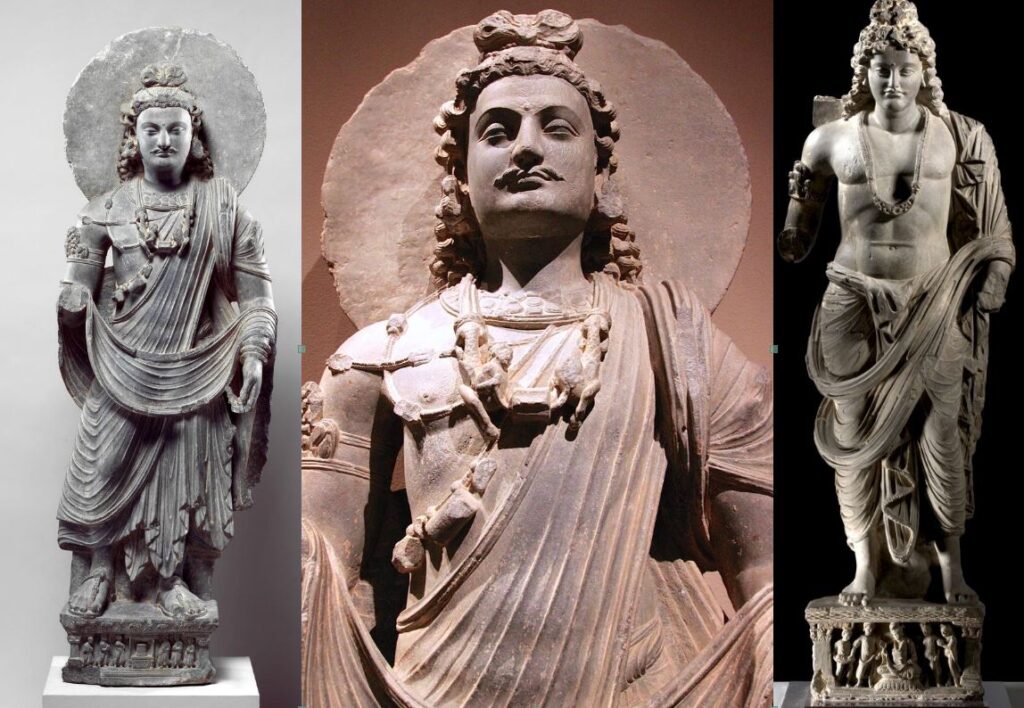

Finally, to conclude this section on sculpture, a few words about the bodhisattva, a very interesting figure that has emerged from the Buddhist imagination to make Buddhist spirituality accessible to ordinary people.
Animated by altruism and obeying the disciplines intended for bodhisattvas, a bodhisattva must compassionately first help all other sentient beings to awaken, even by delaying his own nirwana!
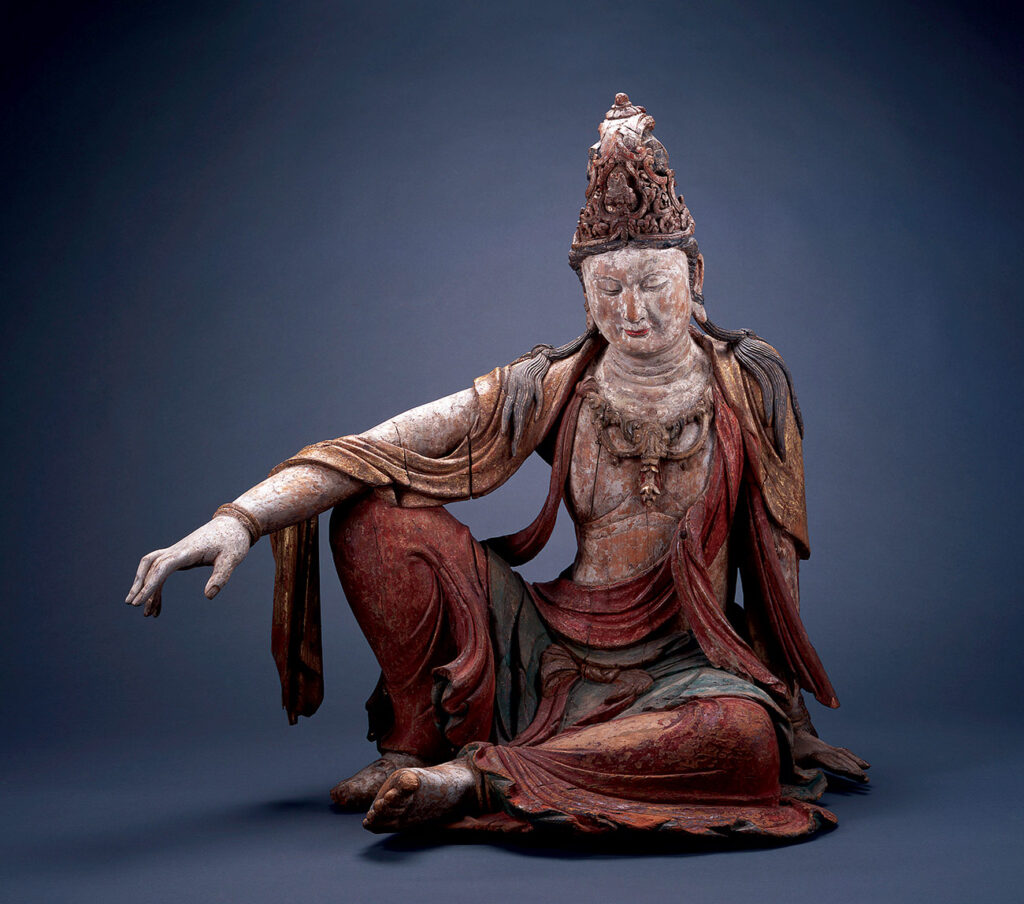
Bodhisattvas are distinguished by great spiritual qualities such as the « four divine abodes »:
- loving-kindness (Maitri);
- compassion (karuna);
- empathic joy (mudita);
- equanimity (upekṣa).
The other various perfections (paramitas) of the Bodhisattva include prajnaparamita (« transcendent knowledge » or the « perfection of wisdom ») and skillful means (upaya).
Spiritually advanced Bodhisattva such as Avalokiteshvara, Maitreya, and Manjushri were widely revered in the Mahayana Buddhist world and are believed to possess great power which they use to help all living beings.
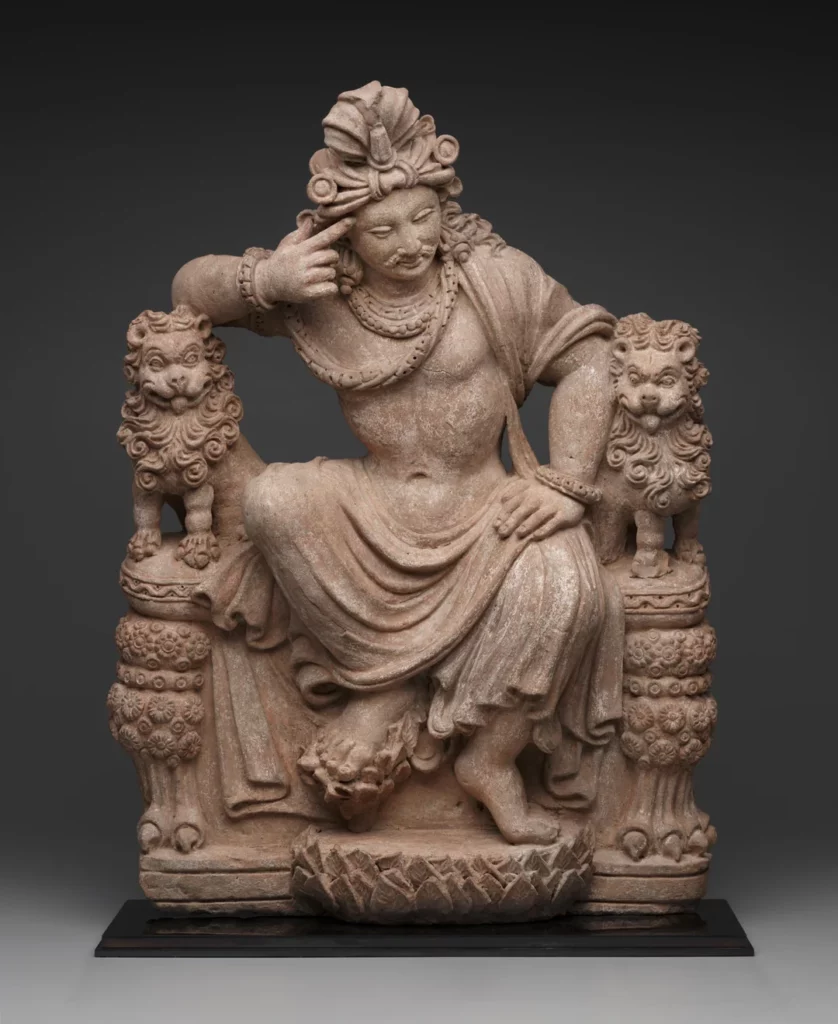
A wonderful example of the Bodhisattva concept can be seen at the Dallas Museum of Art (above). This terracotta sculpture represents a “thinking Bodhisattva” from the Hadda region in Afghanistan and is a typical production from Gandhara.
With very few visual elements, the artist produces here a huge effect.
The pillars of his large Bodhisattva chair are lions with slightly outlandish eyes, an allegorical representation of those passions that make us suffer and which are kept under sagacious control by the highly reflective effort of the heroic Bodhisattva on the chair at the center of the piece.
Buddhism today

Paradoxically, since the 12th century AD Buddhism, as a religion, has almost ceased to exist in its own birthplace of India.
A fine example of the incessant struggle of the best Indian minds for emancipation was in 1956 when nearly half a million « untouchables » converted to Buddhism under the leadership of the political leader who headed the committee responsible for drafting the Constitution of India, the social reformer B. R. Ambedkar (1891-1956), and the Indian Prime Minister and leader of the Congress Party Jawaharlal Nehru (1889-1964), himself from a Brahmin family.
In June of the same year, the UNESCO Courier dedicated its edition to “25 centuries of Buddhist art and culture”.
In India, the two statesmen orchestrated a year-long celebration honoring “2,500 years of Buddhism« , not to resurrect an ancient faith per se, but to claim status as the birthplace of Buddhism: this ancient religion that restores to the world an image advocating non-violence and pacifism.

Later, on November 9, 1961, during his state visit to the White House, Indian Prime Minister Nehru presented a Buddhist sculpture to President John F. Kennedy.
The West’s gaping ignorance about the real nature of Buddhism and Nehru’s “non-alignment” would eventually turn decolonization into bloody conflicts, such as in Vietnam, where close to 80 percent of the population was Buddhist, but where 80 percent of the land was owned by Catholic interests considered more robust to resist communist expansionism.
Mahatma Gandhi, like many Hindus, listened to Buddha’s message. For Hindus, Buddhism was just “another form of Hinduism”, and its justified social criticism, therefore, came “from within Hinduism”.
A point of view that Indian Prime Minister Jawaharlal Nehru did not share. Deeply troubled by certain intrinsic features of Hinduism, such as ritualism and the caste system, Nehru could not place Buddhism, which abhorred these institutions, in the same category. Nehru was profoundly influenced by Buddhism. He even named his daughter Indira Priyadashini (the future Prime Minister Indira Gandhi), because « Priyadarshi » was the name adopted by the great emperor Ashoka after he became a Buddhist prince of peace!

Nehru was instrumental in making the Ashoka Chakra (the Buddhist wheel incorporated into the national flag) the symbol of India. Every time he visited Sri Lanka, he visited the Buddha statue at Anuradhapura.
Nehru, who continually urged superstitious and ritualistic Indians to cultivate a « scientific temperament » and bring India into the era of the atomic age, was naturally attracted to the rationalism advocated by the Buddha.
Nehru argued:
“Buddha did not ask anyone to believe in anything other than what could be proven by experience and test. All he wanted was for men to seek the truth and not accept anything on the faith of another man, even if it was the Buddha himself. It seems to me that this is the essence of his message” … adding, “Buddha dared to accept the truth and not to accept anything on the faith of another (…) Buddha had the courage to condemn popular religion, from superstition, ritual and priesthood, to all interests connected with them. He also condemned metaphysical and theological perspectives, miracles, revelations, and relationships with the supernatural. It appeals to logic, reason, and experience; he emphasizes ethics (…) His whole approach is like the breath of fresh mountain air after the stale air of metaphysical speculation (…) Buddha did not condemn castes directly, but in his own order, he did not recognize them, and there is no doubt that his whole attitude and activity weakened the caste system.”
The influence of the Buddha was manifested in Nehru’s foreign policy. This policy was motivated by a desire for peace, international harmony, and mutual respect. It aimed to resolve conflicts by peaceful methods.
On November 28, 1956, Nehru stated:
“It is mainly because of the Buddha’s message that we can view our problems in the right perspective and move away from conflicts and competition in the field of strife, violence and hatred « .
Visibly inspired by Buddhist precepts, the concepts of « non-alignment » and Nehru’s « Treaty of Panchsheel », commonly referred to as the « Treaty of the Five Principles of Peaceful Coexistence », were formally enunciated for the first time in the agreement on trade and relations between the Tibetan region of China and India, signed on 29th April 1954.
This agreement stipulated, in its preamble, that the two governments,
“…have decided to conclude this Agreement based on the following principles: Mutual respect for each other’s territorial integrity and sovereignty, Mutual non-aggression, mutual non-interference, equality and mutual benefit, and peaceful coexistence”.
Nehru, at the International Buddhist Cultural Conference held on 29th November 1952, in Sanchi, the very city where Kanishka had started building the highest stupa of antiquity, specified:
“The message that Buddha conveyed 2,500 years ago enlightened not only India and Asia but the whole world. The question that inevitably arises is: To what extent can the Buddha’s great message be applied to today’s world? Maybe yes, maybe no, but I know that if we follow the principles set forth by the Buddha, we will gain peace and tranquility for the world.”
On 3rd October 1960, Nehru addressed the United Nations General Assembly when he said,
“In the distant past, a great son of India, the Buddha, said that the only true victory was when all were equally victorious, and no one was defeated. In today’s world, this is the only concrete victory; any other path leads to disaster.”
Nehru tried his best to apply the teachings of the Buddha in managing India’s internal affairs. His belief is that social change can only be achieved through the broadest social consensus that stems from the influence of the Buddha, Ashoka, and Gandhi.
In his speech of 15th August 15, 1956, on the occasion of Independence Day, Nehru sets out the challenges to be met: “We are proud that the soil on which we were born has produced great souls like Gautama Buddha and Gandhi. Let us refresh our memory once again and pay homage to Gautama Buddha and Gandhi, and to the great souls who, like them, shaped this country. Let us follow the path they showed us with strength, determination, and cooperation.”
Science and religion, Albert Einstein and Buddha
To conclude, here are some quotes of Albert Einstein discussing the relation between science and religion where he underlines the importance of Buddha:

Cosmic religious feeling
« There is a third state of religious experience…which I will call cosmic religious feeling. It is very difficult to elucidate this feeling to anyone who is entirely without it, especially as there is no anthropomorphic conception of God corresponding to it. The individual feels the nothingness of human desires and aims and the sublimity and marvellous order which reveal themselves both in nature and in the world of thought. He looks upon individual existence as a sort of prison and wants to experience the universe as a single significant whole.
The beginnings of cosmic religious feeling already appear at an early stage of development—e.g., in many of the Psalms of David and in some of the Prophets.
Buddhism, as we have learnt from the wonderful writings of Schopenhauer especially, contains a much stronger element of it. The religious geniuses of all ages have been distinguished by this kind of religious feeling, which knows no dogma and no God conceived in man’s image; so that there can be no Church whose central teachings are based on it.
Hence it is precisely among the heretics of every age that we find men who were filled with the highest kind of religious feeling and were in many cases regarded by their contemporaries as Atheists, sometimes also as saints. Looked at in this light, men like Democritus, Francis of Assisi, and Spinoza are closely akin to one another. How can cosmic religious feeling be communicated from one person to another, if it can give rise to no definite notion of a God and no theology? In my view, it is the most important function of art and science to awaken this feeling and keep it alive in those who are capable of it. »
—Einstein, Albert. The World As I See It. (Secaucus, NJ: Carol Publishing Group, 1999). p. 26.
Liberated from the the fetters of selfish desires
« A person who is religiously enlightened appears to me to be one who has, to the best of his ability, liberated himself from the fetters of his selfish desires and is preoccupied with thoughts, feelings, and aspirations to which he clings because of their super-personal value. It seems to me that what is important is the force of this super-personal content and the depth of the conviction concerning its overpowering meaningfulness, regardless of whether any attempt is made to unite this content with a divine Being, for otherwise it would not be possible to count Buddha and Spinoza as religious personalities.
Accordingly, a religious person is devout in the sense that he has no doubt of the significance and loftiness of those super-personal objects and goals which neither require nor are capable of rational foundation. They exist with the same necessity and matter-of-factness as he himself. In this sense religion is the age-old endeavor of mankind to become clearly and completely conscious of these values and goals and constantly to strengthen and extend their effect. »
—Einstein, Albert. Einstein, Science, Philosophy and Religion, A Symposium, published by the Conference on Science, Philosophy and Religion in Their Relation to the Democratic Way of Life, Inc., New York, 1941.
Buddha, Moses and Jesus
« What humanity owes to personalities like Buddha, Moses, and Jesus ranks for me higher than all the achievements of the enquiring and constructive mind. What these blessed men have given us we must guard and try to keep alive with all our strength if humanity is not to lose its dignity, the security of its existence, and its joy in living. »
—Einstein, Albert. Written statement (September 1937), p. 70
We must begin with the heart of man
« If we want to improve the world we cannot do it with scientific knowledge but with ideals. Confucius, Buddha, Jesus and Gandhi have done more for humanity than science has done. We must begin with the heart of man—with his conscience—and the values of conscience can only be manifested by selfless service to mankind. »
—Einstein, Albert. Einstein and the Poet (1983), p. 92
Optical delusion of consciousness
One of the most poignant exchanges in his role as a philosopher came when he was 70 and living in Princeton. An ordained rabbi had written ex plaining that he had sought in vain to comfort his 19‐year‐old daughter over the death of her sister, “a sinless, beautiful, 16‐year‐old child.”
“A human being,” wrote Einstein in reply, “is a part of the whole, called by us “Universe,’ a part limited in time and space. He experiences himself, his thoughts and feelings as something separated from the rest — a kind of optical delusion of his consciousness. This delusion is a kind of prison for us, restricting us to our personal desires and to affection for a few persons near est to us. Our task must be to free ourselves from this prison by widening our circle of compassion to embrace all living creatures and the whole nature in its beauty. Nobody is able to achieve this completely, but the striving for such achievement is in itself a part of the liberation and a foundation for inner security.”
— Walter Sullivan, “The Einstein Papers: A Man of Many Parts,” New York Times Archives, March 29, 1972.
NOTES:
(*1) Indo-Aryan languages. There are over 200 known Indo-Aryan languages spoken by about 1 billion people. Modern Indo-Aryan languages descend from Old Indo-Aryan languages such as early Vedic Sanskrit, through Middle Indo-Aryan languages (or Prakrits). The largest such languages in terms of first-speakers are Hindi–Urdu (c. 330 million), Bengali (242 million), Punjabi (about 120 million), Marathi (112 million), Gujarati (60 million), Rajasthani (58 million), Bhojpuri (51 million), Odia (35 million), Maithili (about 34 million), Sindhi (25 million), Nepali (16 million), Assamese (15 million), Chhattisgarhi (18 million), Sinhala (17 million), and Romani (c. 3.5 million). Southern India has Dravidian languages (Telugu, Tamil, Kannada and Malayalam). In Europe, the main Indo-European languages are English, French, Portuguese, Russian, Dutch and Spanish.
(*2) Discords. As early as the 3rd century BC, no fewer than eighteen distinct Buddhist schools were at work in India, but all recognized each other as followers of the Buddha’s philosophy. Finally, Diamond Vehicle Buddhism, known as Vajrayana, whose complex texts and rituals were developed in the universities of northeast India around the 7th and 8th centuries.
(*3) Prakrit is a term that designates an Indo-Aryan language derived from classical Sanskrit. The word itself has a fairly flexible definition, because it sometimes has the meaning of “original, natural, without artifice, normal, ordinary, usual, or even local”, thus contrasting with the literary and religious form of Sanskrit; but sometimes, we can also understand Prakrit as meaning “derived from an original language”, that is to say, derived from Sanskrit. We can therefore say that Prakrit, like any vulgar and vernacular language of India, comes from Sanskrit. In a way, we can compare Prakrits to vulgar Latin, while Sanskrit would be classical Latin. The oldest known use of prâkrit is formed by the set of inscriptions of the Indian emperor Ashoka (3rd century BC). One of the most famous Prakrits is Pali, which achieved the status of a literary and intellectual language by becoming that of the texts of Theravada Buddhism.
(*4) Pâli is an Indo-European language of the Indo-Aryan family. It is a Middle Indian Prakrit close to Sanskrit and probably dates back to the 3rd century BC. Pâḷi is used as a Buddhist liturgical language in Sri Lanka, Burma, Laos, Thailand, and Cambodia. Its status as a liturgical language has made it, like Sanskrit, fixed and standardized.
(*5) Hippodamos of Miletus (born 498 BC – died 408 BC) was a surveyor and engineer from the 5th century BC. BC was also an urban architect, physicist, mathematician, meteorologist, and Pythagorean philosopher. Tradition has remembered his great works of urban planning. Although these works are characterized by the systematic use of the checkerboard plan, he is not its inventor, very ancient Greek colonies already providing us with examples of this urban structure.
Le « miracle » du Gandhara : quand Bouddha s’est fait homme
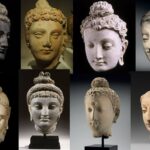

C’est lors de mon voyage en Afghanistan, en novembre 2023, que j’ai réalisé à quel point j’ignorais tout de cette partie du monde. Si aujourd’hui l’islam prévaut en Afghanistan et au Pakistan, on oublie souvent qu’une région commune à ces deux pays, historiquement connue sous le nom de Gandhara, a joué, du Ier au IIIe siècle de notre ère, un rôle majeur dans l’épopée du bouddhisme, une spiritualité qui, en refusant toute idée de caste, va bousculer l’ordre du monde.
Carrefour obligé sur les Routes de la soie reliant l’Europe à l’Inde et à la Chine, c’est au Gandhara, qu’a eu lieu un véritable dialogue entre les cultures eurasiatiques, perses, turques, grecques, chinoises et indiennes.
Bouddha. C’est par le volontarisme de deux grands rois d’Asie centrale (Ashoka et Kanishka) que le bouddhisme, né au Népal, trouvera l’énergie et la détermination pour gagner les esprits et les cœurs du monde.
Enfin, c’est au Gandhara que l’art bouddhique, en rupture avec les consignes du maître, va s’approprier les plus belles formes de diverses cultures artistiques grecques, indiennes, perses et autres, pour présenter bouddha sous une forme humaine aux fidèles, un homme éclairé, plein de sagesse et animé de compassion.
En offrant fraîcheur, poésie et un sens du mouvement spectaculairement moderne, les premiers artistes bouddhistes du Gandhara nous invitent à identifier en nous-mêmes, un saut vers l’auto-perfectionnement. A ce titre, ils sont les précurseurs de l’humanisme classique et de bien des Renaissances.
N’est-il pas temps de reconnaître la juste place que mérite leur contribution à la civilisation universelle ?
Enfin, vu la situation actuelle du monde, je tiens à citer le Premier Ministre indien Nehru, qui, le 3 octobre 1960 s’adressait à l’Assemblée générale des Nations unies avec des paroles qui n’ont cessé de gagner en pertinence : « Dans un passé lointain, un grand fils de l’Inde, le Bouddha, a dit que la seule vraie victoire était celle où tous étaient également victorieux et où personne n’était vaincu. Dans le monde d’aujourd’hui, c’est la seule victoire concrète ; toute autre voie mène au désastre. »
- Introduction
- Bouddha, bio-express
- Les quatre vérités et l’octuple sentier
- Réincarnation
- Les Aryens et le védisme
- Les Brahmanes et le système des castes
- L’Inde avant le Bouddhisme
- Les grands conciles bouddhistes
- L’arrivée des Grecs
- L’Empire Maurya
- Le règne d’Ashoka le Grand
- Edits d’Ashoka
- Contenu des édits
- L’Empire Kouchan
- Le miracle de Gandhara
a) La poésie
b) La littérature
c) L’urbanisme
d) L’architecture, l’invention des stupa
e) Sculpture
–Aniconisme
–Fin de l’aniconisme
–Différence de forme, différence de contenu
1) Ecole greco-bouddhique de Gandhara
2) Ecole de Mathura
3) Ecole d’Andrah Pradesh
4) Ecole de la période Gupta. - Lorsque l’Asie rencontre la Grèce
a) Pièces de monnaies kouchanes
b) Reliquaire bimaran
c) Triade de Harra
d) Prendre la terre à témoin
e) Tous Bodhisattva - Le Bouddhisme aujourd’hui, l’exemple de Nehru
- Science et religion, Albert Einstein et Buddha.
Introduction
Les Ve et IVe siècles avant J.-C. furent une période d’effervescence intellectuelle mondiale. C’est l’époque des grands penseurs, tels que Socrate, Platon et Confucius, mais aussi Panini et Bouddha.
Dans le nord de l’Inde, c’est l’âge du Bouddha, après la mort duquel émerge une foi non théiste (Bouddha n’est qu’un homme…), qui se répand bien au-delà de sa région d’origine. Avec entre 500 millions et un milliard de croyants, le bouddhisme constitue aujourd’hui l’une des principales croyances religieuses et philosophiques du monde et sans doute une force potentielle redoutable pour la paix.
Bouddha, bio-express

« Le bouddha » (l’éveillé) est le nom donné à un homme appelé Siddhartha Gautama Shakyamuni (le muni ou sage du clan des Shakya). Il aurait atteint l’âge d’environ quatre-vingts an. Craignant l’idolâtrie, il refuse toute représentation de sa personne sous forme d’image.
Les traditions divergent sur les dates exactes de sa vie que la recherche moderne tend à situer de plus en plus tard : vers 623-543 av. J.-C. selon la tradition theravâda, vers 563-483 av. J.-C. selon la majorité des spécialistes du début du XXe siècle, tandis que d’autres le situent aujourd’hui entre 420 et 380 av. J.-C. (sa vie n’aurait pas dépassé les 40 ans).


Selon la tradition, Siddhartha Gautama est né à Lumbini (dans l’actuel Népal) en tant que prince de la famille royale de la ville de Kapilavastu, un petit royaume situé dans les contreforts de l’Himalaya, dans l’actuel Népal.
Un astrologue aurait mis en garde le père du garçon, le roi Suddhodana : lorsque l’enfant grandirait, il deviendrait soit un brillant souverain, soit un moine influent, en fonction de sa lecture du monde. Farouchement déterminé à en faire son successeur, le père de Siddhartha ne le laissa donc jamais voir le monde en dehors des murs du palais. Tout en lui offrant tous les plaisirs et distractions possibles, il en fait un prisonnier virtuel jusqu’à l’âge de 29 ans.
Lorsque le jeune homme s’échappe de sa cage dorée, il découvre l’existence de personnes affectées par leur grand âge, la maladie et la mort. Bouleversé par la souffrance des gens ordinaires qu’il rencontre, Siddhartha abandonne les plaisirs éphémères du palais pour rechercher un but plus élevé dans la vie. Il se soumet d’abord à un ascétisme draconien, qu’il abandonne six ans plus tard, estimant qu’il s’agissait d’un exercice futile.
Il s’assoit alors sous un grand figuier pour méditer et y fait l’expérience du nirvana (la bodhi : libération ou, en sanskrit, extinction). On le désigne désormais sous le nom de « Bouddha » (l’éveillé ou l’éclairé).
Les « quatre vérités » et « l’octuple sentier »
Avant d’en esquisser le développement politique, quelques mots sur la philosophie sous-jacente au bouddhisme.
A ses jeunes disciples, Bouddha enseigne la « Voie du milieu », entre les deux extrêmes de la mortification et de la satisfaction des désirs.
Et il énonce les Quatre nobles vérités :
- La noble vérité de la souffrance.
- La noble vérité de l’origine de la souffrance.
- La noble vérité de la cessation de la souffrance.
- La noble vérité de la voie menant à la cessation de la souffrance, celle du Noble Chemin octuple.
Ainsi que le feront Augustin et plus encore les Frères de la Vie commune dans le monde chrétien, le bouddhisme insiste sur le fait que notre attachement à l’existence terrestre implique la souffrance.
Chez les chrétiens, c’est ce qui conduirait au « péché », notion inexistante dans le bouddhisme, pour qui l’errance vient de l’ignorance du bon chemin.
Pour Bouddha, il faut combattre, voire éteindre tout sens démesuré du moi (on dirait ego aujourd’hui). Il est possible de mettre fin à notre souffrance en transcendant ce fort sentiment de « moi », afin d’entrer dans une plus grande harmonie avec les choses en général. Les moyens d’y parvenir sont résumés dans le Noble Chemin octuple, parfois représenté par les huit rayons d’une Roue de la Loi (dharmachakra) que Bouddha mettra en marche, la Loi signifiant ici le dharma, un ensemble de préceptes moraux et philosophiques.
Ces huit points du Noble Chemin octuple sont :
- la vue juste
- la pensée juste
- la parole juste
- l’action juste
- les moyens d’existence justes
- l’effort juste
- la pleine conscience
- la concentration juste
– La vision juste est importante dès le départ, car sans cela, on ne peut pas voir la vérité des quatre nobles vérités.
– La pensée juste en découle naturellement. Le terme « juste » signifie ici « en accord avec les faits », c’est-à-dire avec la façon dont les choses sont (qui peut être différente de la façon dont je voudrais qu’elles soient).
– La pensée juste, la parole juste, l’action juste et les moyens d’existence justes impliquent une retenue morale – s’abstenir de mentir, de voler, de commettre des actes violents et gagner sa vie d’une manière qui ne soit pas préjudiciable aux autres. La retenue morale ne contribue pas seulement à l’harmonie sociale générale, elle nous aide aussi à contrôler et à diminuer le sentiment démesuré du « moi ». Comme un enfant gâté, le « moi » grandit et devient indiscipliné à mesure que nous le laissons agir à sa guise.
– Ensuite, l’effort juste est important parce que le « moi » prospère dans l’oisiveté et le mauvais effort ; certains des plus grands criminels sont les personnes les plus énergiques, donc l’effort doit être approprié à la diminution du « moi » (son ego, dirait-on aujourd’hui). Dans tous les cas, si nous ne sommes pas prêts à faire des efforts, nous ne pouvons pas espérer obtenir quoi que ce soit, ni dans le sens spirituel ni dans la vie. Les deux dernières étapes de la voie, la pleine conscience et la concentration ou absorption, représentent la première étape permettant de nous libérer de la souffrance.
Les ascètes qui avaient écouté le premier discours du Bouddha devinrent le noyau d’un sangha (communauté, mouvement) d’hommes (les femmes devaient entrer plus tard) qui suivaient la voie décrite par le Bouddha dans sa Quatrième noble vérité, celle précisant le Noble Chemin octuple.
Pour rendre le nirvana bouddhiste accessible au citoyen ordinaire, l’imagination bouddhiste a inventé le concept très intéressant de bodhisattva, mot dont le sens varie selon le contexte. Il peut aussi bien désigner l’état dans lequel se trouvait Bouddha lui-même avant son « éveil », qu’un homme ordinaire ayant pris la résolution de devenir un bouddha et ayant reçu d’un bouddha vivant la confirmation ou la prédiction qu’il en serait ainsi.
Dans le bouddhisme theravâda (l’école ancienne), seules quelques personnes choisies peuvent devenir des bodhisattvas, comme Maitreya, présenté comme le « Bouddha à venir ».
Mais dans le bouddhisme mahâyâna (Grand Véhicule), un bodhisattva désigne toute personne qui a généré la bodhicitta, un souhait spontané et un esprit compatissant visant à atteindre l’état de bouddha pour le bien de « tous les êtres sensibles », hommes aussi bien qu’animaux. Etant donné qu’une personne peut, dans une vie future, se réincarner dans un animal, le respect des animaux s’impose.
Réincarnation
Tout en voulant construire sa propre vision sur certains fondements de l’hindouisme, l’une des plus anciennes religions du monde, Siddhartha introduisit néanmoins des changements révolutionnaires aux implications politiques importantes.
Dans la plupart des croyances impliquant la réincarnation (hindouisme, jaïnisme, sikhisme), l’âme humaine est immortelle et ne se disperse pas après la disparition du corps physique. Après la mort, l’âme transmigre simplement (métempsychose) dans un nouveau-né ou un animal pour poursuivre son immortalité. La croyance en la renaissance de l’âme a été exprimée par les penseurs grecs anciens, à commencer par Pythagore, Socrate et Platon.
Le but du bouddhisme est d’apporter un bonheur durable et inconditionnel. Celui de l’hindouisme est de se libérer du cycle de naissance et de renaissance (samsara) pour atteindre, finalement, le moksha, qui en est la libération.

Le bouddhisme et l’hindouisme s’accordent sur le karma, le dharma, le moksha et la réincarnation. Mais ils diffèrent politiquement dans la mesure où le bouddhisme se concentre sur l’effort personnel de chacun et accorde par conséquent une moindre importance aux prêtres et aux rituels formels que l’hindouisme. Enfin, le bouddhisme ne reconnaît pas la notion de caste et prône donc une société plus égalitaire.
Alors que l’hindouisme soutient que l’on ne peut atteindre le nirvana que dans une vie ultérieure, le bouddhisme, plus volontariste et optimiste, soutient qu’une fois qu’on a réalisé que la vie est souffrance, on peut mettre un terme à cette souffrance dans sa vie présente.
Les bouddhistes décrivent leur renaissance comme une bougie vacillante qui vient en allumer une autre, plutôt que comme une âme immortelle ou un « moi » passant d’un corps à un autre, ainsi que le croient les hindous. Pour les bouddhistes, il s’agit d’une renaissance sans « soi », et ils considèrent la réalisation du non-soi ou du vide comme le nirvana (extinction), alors que pour les hindous, l’âme, une fois libérée du cycle des renaissances, ne s’éteint pas, mais s’unit à l’Être suprême et entre dans un éternel état de félicité divine.
Les Aryens et le védisme
L’une des grandes traditions ayant façonné l’hindouisme est la religion védique (védisme), qui s’est épanouie chez les peuples indo-aryens du nord-ouest du sous-continent indien (Pendjab et plaine occidentale du Gange) au cours de la période védique (1500-500 av. J.-C.).
Au cours de cette période, des peuples nomades venus du Caucase et se désignant eux-mêmes comme « Aryens » (« noble », « civilisé » et « honorable ») pénétrèrent en Inde par la frontière nord-ouest.

Le terme « aryen » a une très mauvaise connotation historique, en particulier depuis le XIXe siècle, lorsque plusieurs antisémites virulents, tels qu’Arthur de Gobineau, Richard Wagner et Houston Chamberlain, ont commencé à promouvoir le mythe d’une « race aryenne », soutenant l’idéologie suprémaciste blanche de l’aryanisme qui dépeint la race aryenne comme une « race des seigneurs », les non-aryens étant considérés non seulement comme génétiquement inférieurs (Untermensch, ou sous-homme) mais surtout comme une menace existentielle à exterminer.

D’un point de vue purement scientifique, dans son livre The Arctic Home (1903), le patriote indien Bal Gangadhar Tilak (1856-1920), s’appuyant sur son analyse des observations astronomiques contenues dans les hymnes védiques, émet l’hypothèse selon laquelle le pôle Nord aurait été le lieu de vie originel des Aryens pendant la période préglaciaire, région qu’ils auraient quittée vers 8000 avant J.-C. à cause de changements climatiques, migrant vers les parties septentrionales de l’Europe et de l’Asie. Gandhi disait de Tilak, l’un des pères du mouvement de l’indépendance du pays, qu’il était « l’artisan de l’Inde moderne ».
Les Aryens arrivant du Nord étaient probablement moins barbares qu’on ne l’a suggéré jusqu’à présent. Grâce à leur supériorité militaire et culturelle, ils conquirent toute la plaine du Gange, avant d’étendre leur domination sur les plateaux du Deccan.
Cette conquête a laissé des traces jusqu’à nos jours, puisque les régions occupées par ces envahisseurs parlent des langues indo-européennes issues du sanskrit. (*1)

En réalité, la culture védique est profondément enracinée dans la culture eurasienne des steppes Sintashta (2200-1800 avant notre ère) du sud de l’Oural, dans la culture Andronovo d’Asie centrale (2000-900 avant notre ère), qui s’étend du sud de l’Oural au cours supérieur de l’Ienisseï en Sibérie centrale, et enfin dans la Civilisation de la vallée de l’Indus (Harappa) (4000-1500 avant notre ère).
Cette culture védique se fonde sur les fameux Védas (savoirs), quatre textes religieux consignant la liturgie des rituels et des sacrifices et les plus anciennes écritures de l’hindouisme. La partie la plus ancienne du Rig-Veda a été composée oralement dans le nord-ouest de l’Inde (Pendjab) entre 1500 et 1200 av. JC., c’est-à-dire peu après l’effondrement de la Civilisation de la vallée de l’Indus.
Le philologue, grammairien et érudit sanskrit Panini, qu’on croit être un contemporain de Bouddha, est connu pour son traité de grammaire sanskrite en forme de sutra, qui a suscité de nombreux commentaires de la part d’érudits d’autres religions indiennes, notamment bouddhistes.
Les Brahmanes et le système des castes
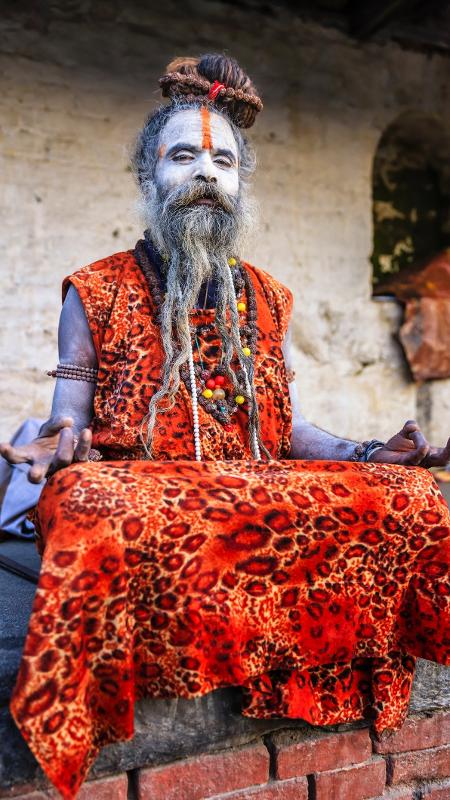
Cependant, avec l’émergence de cette culture aryenne apparut ce que l’on appelle le « brahmanisme », c’est-à-dire la naissance d’une caste toute puissante de grands prêtres.
« De nombreuses études linguistiques et historiques font état de troubles socioculturels résultant de cette migration et de la pénétration de la culture brahmanique dans diverses régions, de l’ouest de l’Asie du Sud vers l’Inde du Nord, l’Inde du Sud et l’Asie du Sud-Est », constate aujourd’hui Gajendran Ayyathurai, un anthropologue indien de l’Université de Göttingen en Allemagne.
Le brahman, littéralement « supérieur », est un membre de la caste sacerdotale la plus élevée (à ne pas confondre avec les adorateurs du dieu hindou Brahma). Bien que le terme apparaisse dans les Védas, les chercheurs modernes tempèrent ce fait et soulignent qu’il « n’existe aucune preuve dans le Rig-Veda d’un système de castes élaboré, très subdivisé et très important ».
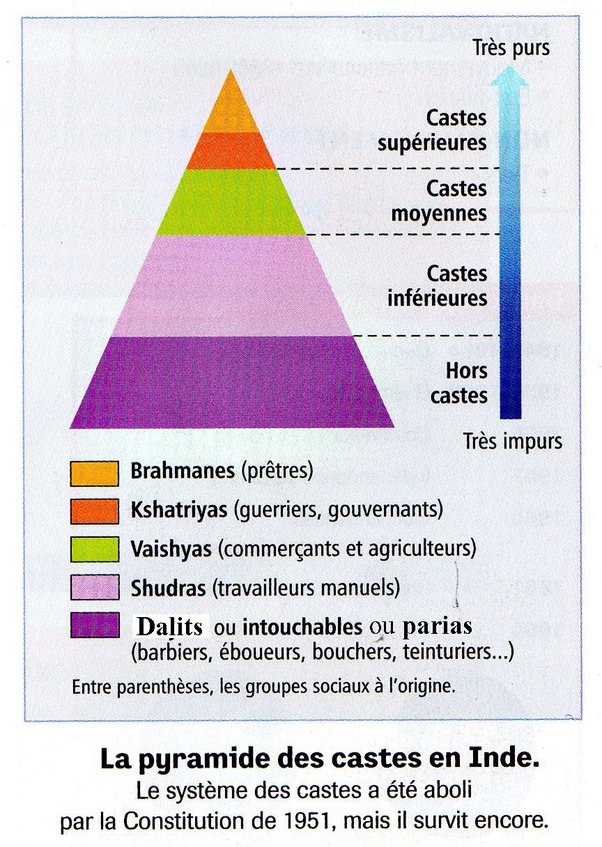
Mais avec l’émergence d’une classe dirigeante de brahmanes, devenus banquiers et propriétaires terriens, notamment sous la période Gupta (de 319 à 515 après J.-C.), un redoutable système de castes se met graduellement en place. La classe dirigeante féodale, ainsi que les prêtres, vivant des recettes des sacrifices, mettront l’accent sur des dieux locaux qu’ils intégreront progressivement au brahmanisme afin de séduire les masses. Même parmi les souverains, le choix des divinités indiquait des positions divergentes : une partie de la dynastie Gupta soutenait traditionnellement le dieu Vishnou, tandis qu’une autre soutenait le dieu Shiva.
Ce système déshumanisant des castes fut ensuite amplifié et utilisé à outrance par la Compagnie britannique des Indes orientales, une entreprise et une armée privée à la tête de l’Empire britannique, pour imposer son pouvoir aristocratique et colonial sur les Indes, une politique qui perdure encore aujourd’hui, surtout dans les esprits.
Le système hindou des castes s’articule autour de deux concepts clés permettant de catégoriser les membres de la société : le varṇa et la jati. Le varna (littéralement « couleur ») divise la société en une hiérarchie de quatre grandes classes sociales :
- Brahmanes (la classe sacerdotale)
- Kshatriyas (guerriers et dirigeants)
- Vaishyas (marchands)
- Shudras (travailleurs manuels)
En outre, la jati fait référence à plus de 3000 classifications hiérarchiques, à l’intérieur des quatre varnas, entre les groupes sociaux en fonction de la profession, du statut social, de l’ascendance commune et de la localité…
La justification de cette stratification sociale est intimement liée à la vision hindouiste du karma. Car la naissance de chacun est directement liée au karma, véritable bilan de sa vie précédente. Ainsi, la naissance dans le varna brahmanique est le résultat d’un bon karma…
« Ceux qui ont eu une bonne conduite ici auront rapidement une bonne naissance – naissance en tant que brahmane, kshatriya ou vaishya. Mais ceux dont la conduite ici a été mauvaise obtiendront rapidement une mauvaise naissance – naissance en tant que chien, porc ou chandala (bandit). »
(Chandogya Upanishad 5.10.7)
Selon cette théorie, le karma détermine la naissance de l’individu dans une classe, ce qui définit son statut social et religieux, qui fixe à son tour ses devoirs et obligations au regard de ce statut spécifique.
En 2021, une enquête a révélé que trois Indiens sur dix (30 %) s’identifient comme membres des quatre varnas et seulement 4,3 % des Indiens (60,5 millions) comme des brahmanes.
Certains d’entre eux sont prêtres, d’autres exercent des professions telles qu’éducateurs, législateurs, érudits, médecins, écrivains, poètes, propriétaires terriens et politiciens. Au fur et à mesure de l’évolution de ce système de castes, les brahmanes ont acquis une forte influence en Inde et ont exercé une discrimination à l’encontre des autres castes « inférieures ».

L’immense partie restante des Indiens (70 %), y compris parmi les hindous, déclare faire partie des dalits, encore appelés intouchables, des individus considérés, du point de vue du système des castes, comme hors castes et affectés à des fonctions ou métiers jugés impurs. Présents en Inde, mais également dans toute l’Asie du Sud, les dalits sont victimes de fortes discriminations. En Inde, une écrasante majorité de bouddhistes se déclarent dalits.
Dès le Ier siècle, le philosophe bouddhiste, dramaturge, poète, musicien et orateur indien Asvaghosa (v. 80 – v. 150 ap. J.-C.) a élevé la voix pour condamner ce système des castes, avec des arguments empruntés pour certains aux textes les plus vénérés des brahmanes eux-mêmes, et pour d’autres, fondés sur le principe de l’égalité naturelle entre tous les hommes.
Selon Asvaghosa,
« la qualité de brahmane n’est inhérente ni au principe qui vit en nous, ni au corps dans lequel réside ce principe, et elle ne résulte ni de la naissance, ni de la science, ni des pratiques religieuses, ni de l’observation des devoirs moraux, ni de la connaissance des Védas. Puisque cette qualité n’est ni inhérente ni acquise, elle n’existe pas, ou plutôt tous les hommes peuvent la posséder. »
Une allégorie bouddhiste rejette clairement et se moque de l’idée même du système de castes:
« De même que le sable ne devient pas de la nourriture simplement parce qu’un enfant le dit, lorsque de jeunes enfants jouant sur une route principale construisent des pâtés de sable et leur donnent des noms, en disant ‘Celui-ci est du lait, celui-ci de la viande et celui-ci du lait caillé’, il en va de même pour les quatre varnas, tels que vous, les brahmanes, les décrivez. »
L’Inde avant le bouddhisme
L’époque du Bouddha est celle de la deuxième urbanisation de l’Inde et d’une grande contestation sociale.
L’essor des shramaṇas, des philosophes ou moines errants ayant rejeté l’autorité des Védas et des brahmanes, était nouveau. Bouddha n’était pas le seul à explorer les moyens d’obtenir la libération (moksha) du cycle éternel des renaissances (saṃsara).
Le constat que les rituels védiques ne menaient pas à une libération éternelle conduisit à la recherche d’autres moyens. Le bouddhisme primitif, le yoga et des courants similaires de l’hindouisme, jaïnisme, ajivika, ajnana et chârvaka, étaient les shramanas les plus importants.
Malgré le succès obtenu en diffusant des idées et des concepts qui allaient bientôt être acceptés par toutes les religions de l’Inde, les écoles orthodoxes de philosophie hindoue (astika) s’opposaient aux écoles de pensée shramaṇiques et réfutèrent leurs doctrines en les qualifiant d’hétérodoxes (nastika), parce qu’elles refusaient d’accepter l’autorité épistémique des Védas.
Pendant plus de quarante ans, le Bouddha sillonna l’Inde à pied pour diffuser son dharma, un ensemble de préceptes et de lois sur le comportement de ses disciples. À sa mort, son corps fut incinéré, comme c’était la coutume en Inde, et ses cendres furent réparties dans plusieurs reliquaires, enterrés dans de grands monticules hémisphériques connus sous le nom de stupas. Alors déjà, sa religion était répandue dans tout le centre de l’Inde et dans de grandes villes indiennes comme Vaishali, Shravasti et Rajagriha.
Les grands conciles bouddhistes

Quatre grands conciles bouddhistes furent organisés, à l’instigation de différents rois qui cherchaient en réalité à briser l’omnipuissante caste des brahmanes.
Le premier eut lieu en 483 avant J.-C., juste après la mort du Bouddha, sous le patronage du roi Ajatasatru (492-460 av. J.-C.) du Royaume du Magadha, le plus grand des seize royaumes de l’Inde ancienne, afin de préserver les enseignements du Bouddha et de parvenir à un consensus sur la manière de les diffuser.
Le deuxième intervint en 383 avant J.-C., soit cent ans après la mort du Bouddha, sous le règne du roi Kalashoka. Des divergences d’interprétation s’installant sur des points de discipline au fur et à mesure que les adeptes s’éloignaient les uns des autres, un schisme menaçait de diviser ceux qui voulaient préserver l’esprit originel et ceux qui défendaient une interprétation plus large.
Le premier groupe, appelé Thera (signifiant « ancien » en pâli), est à l’origine du bouddhisme theravâda, engagé à préserver les enseignements du Bouddha dans l’esprit originel.
L’autre groupe était appelé Mahasanghika (Grande Communauté). Ils interprétaient les enseignements du Bouddha de manière plus libérale et nous ont donné le bouddhisme Mahâyâna.
Les participants au concile tentèrent d’aplanir leurs divergences, sans grande unité mais sans animosité non plus. L’une des principales difficultés venait du fait qu’avant d’être consignés dans des textes, les enseignements du Bouddha n’avaient été transmis qu’oralement pendant trois à quatre siècles. (*2)
L’arrivée des Grecs

Ainsi que nous l’avons documenté par ailleurs, l’Asie centrale, et l’Afghanistan en particulier, furent le lieu de rencontre entre les civilisations perses, chinoises, grecques et indiennes.
C’est au Gandhara, région à cheval entre le Pakistan et l’Afghanistan, au cœur des Routes de la soie, que le bouddhisme prendra à deux reprises un envol majeur, donnant naissance à un art dit « gréco-bouddhiste », qui parviendra à faire la synthèse entre plusieurs cultures à travers des œuvres d’une beauté incomparable.

Les premiers Grecs commencèrent à s’installer dans la partie nord-ouest du sous-continent indien à l’époque de l’Empire perse achéménide. Après avoir conquis la région, le roi perse Darius le Grand (521 – 486 av. J.-C.) colonisa également une grande partie du monde grec, qui comprenait à l’époque toute la péninsule anatolienne occidentale.
Lorsque des villages grecs se rebellaient sous le joug perse, ils faisaient parfois l’objet d’un nettoyage ethnique et leurs populations étaient déportées à l’autre bout de l’empire.
C’est ainsi que de nombreuses communautés grecques virent le jour dans les régions indiennes les plus reculées de l’empire perse.
Au IVe siècle avant J.-C., Alexandre le Grand (356 – 323 av. J.-C.) vainquit et conquit l’empire perse. En 326 avant J.-C., cet empire comprenait la partie nord-ouest du sous-continent indien jusqu’à la rivière Beas (que les Grecs nommaient l’Hyphase). Alexandre établit des satrapies et fonde plusieurs colonies. Il se tourne vers le sud lorsque ses troupes, conscientes de l’immensité de l’Inde, refusent de pousser plus loin encore vers l’est.
Après sa mort, son empire se délite. De 180 av. J.-C. à environ l’an 10 de notre ère, plus de trente rois hellénistiques se succèdent, souvent en conflit entre eux. Cette époque est connue dans l’histoire sous le nom des « Royaumes indo-grecs ».
L’un d’eux a été fondé lorsque le roi gréco-bactrien Démétrius envahit l’Inde en 180 avant notre ère, créant ainsi une entité faisant sécession avec le puissant royaume gréco-bactrien, la Bactriane (comprenant notamment le nord de l’Afghanistan, une partie de l’Ouzbékistan, etc.).
Pendant les deux siècles de leur règne, ces rois indo-grecs intégrèrent dans une seule culture des langues et des symboles grecs et indiens, comme en témoignent leurs pièces de monnaie, et mêlèrent les anciennes pratiques religieuses grecques, hindoues et bouddhistes, comme le montrent les vestiges archéologiques de leurs villes et les signes de leur soutien au bouddhisme.
L’Empire Maurya

Vers 322 avant J.-C., les Grecs appelés Yona (Ioniens) ou Yavana dans les sources indiennes, participent, avec d’autres populations, au soulèvement de Chandragupta Maurya (né v. -340 et mort v. – 297), le fondateur de l’Empire maurya.
Le règne de Chandragupta ouvre une ère de prospérité économique, de réformes, d’expansion des infrastructures et de tolérance. De nombreuses religions ont ainsi prospéré dans son royaume et dans l’empire de ses descendants. Bouddhisme, jaïnisme et ajivika prennent de l’importance aux côtés des traditions védiques et brahmaniques, tout en respectant les religions minoritaires telles que le zoroastrisme et le panthéon grec.
Le règne d’Ashoka le Grand
(de 268 à 231 av. JC)

L’Empire Maurya atteint son apogée sous le règne du petit-fils de Chandragupta, Ashoka le Grand, de 268 à 231 av. J.-C. (parfois écrit Asoka).
Huit ans après sa prise de pouvoir, Ashoka mène une campagne militaire pour conquérir le Kalinga, un vaste royaume côtier du centre-est de l’Inde. Sa victoire lui permet de conquérir un territoire plus vaste que celui de tous ses prédécesseurs. Grâce aux conquêtes d’Ashoka, l’Empire Maurya devient une puissance centralisée couvrant une grande partie du sous-continent indien, s’étendant de l’actuel Afghanistan à l’ouest à l’actuel Bangladesh à l’est, avec sa capitale à Pataliputra (proche de l’actuelle Patna en Inde).
Alors que l’Empire Maurya avait existé dans un certain désordre jusqu’en 185 av. J.-C., Ashoka va transformer le royaume en recourant à une violence extrême qui caractérise le début de son règne. On parle de 100 000 à 300 000 morts, rien que lors de la conquête du Kalinga !
Mais le poids d’un tel carnage plonge le roi dans une grave crise personnelle. Ashoka est gravement choqué par la multitude de vies arrachées par ses armées. L’édit N° 13 d’Ashoka reflète le profond remords ressenti par le roi après avoir observé la destruction de Kalinga :
« Sa Majesté a éprouvé des remords à cause de la conquête de Kalinga car, lors de l’assujettissement d’un pays non conquis auparavant, il y a nécessairement des massacres, des morts et des captifs, et Sa Majesté en éprouve une profonde tristesse et un grand regret. »
Ashoka renonce alors aux démonstrations de force militaires et autres formes de violence, y compris la cruauté envers les animaux. Conquis par le bouddhisme, il se consacre alors à répandre sa vision du dharma, une conduite juste et morale. Il va encourager la diffusion du bouddhisme dans toute l’Inde. Selon l’archéologue et érudit français François Foucher, même si les cas de mauvais traitements envers les animaux ne disparurent pas du jour au lendemain, la croyance en la fraternité de tous les êtres vivants est plus florissante en Inde que partout ailleurs.
En 250 avant J.-C., Ashoka convoque le troisième concile bouddhique. Les sources theravâda mentionnent qu’en plus de régler les différends intérieurs, la principale fonction du concile était de planifier l’envoi de missionnaires bouddhistes dans différents pays afin d’y répandre la doctrine.

Ces missionnaires allèrent jusqu’aux royaumes hellénistiques de l’ouest, en commençant par la Bactriane voisine. Des missionnaires furent également envoyés en Inde du sud, au Sri Lanka et en Asie du Sud-Est (peut-être en Birmanie).
La forte implication de ces missions dans l’éclosion du bouddhisme en Asie à l’époque d’Ashoka est solidement étayée par des preuves archéologiques. Le bouddhisme ne s’est pas répandu par pur hasard, mais dans le cadre d’une opération politique créative, stimulante et bien planifiée, tout au long des Routes de la soie.
Le Mahavamsa ou Grande chronique (XII, 1er paragraphe), relatant l’histoire des rois cinghalais et tamouls de Ceylan (aujourd’hui Sri Lanka), donne la liste des missionnaires bouddhistes envoyés par le Concile et Ashoka :
- Le vieux Majjhantika prit la tête de la mission au Cachemire et au Gandhara (aujourd’hui le nord-ouest du Pakistan et l’Afghanistan) ;
- L’aîné Mahadeva dirigea la mission dans le sud-ouest de l’Inde (Mysore, Karnataka) ;
- Rakkhita, celle du sud-est de l’Inde (Tamil Nadu) ;
- Le vieux Yona (Ionien, Grec) Dharmaraksita partit vers Aparantaka (« frontière occidentale », comprenant le nord du Gujarat, le Kathiawar, le Kachch et le Sindh, toutes des parties de l’Inde à l’époque) ;
- L’aîné Mahadharmaraksita dirigea la mission de Maharattha (région péninsulaire occidentale de l’Inde) ;
- Maharakkhita (Maharaksita Thera) fut envoyé au pays des Yona (Ioniens), probablement la Bactriane et peut-être le royaume séleucide ;
- Majjhima Thera conduisit la mission dans la région d’Himavant (nord du Népal, contreforts de l’Himalaya) ;
- Sona Thera et Uttara Thera, celles de Suvannabhumi (quelque part en Asie du Sud-Est, peut-être au Myanmar ou en Thaïlande) ;
- Enfin, Mahinda, fils aîné d’Ashoka et donc le Prince de son royaume, accompagné de ses disciples Utthiya, Ittiya, Sambala et Bhaddasala, se rendit à Lankadipa (Sri Lanka).
Certaines de ces missions furent couronnées de succès, permettant d’implanter le bouddhisme en Afghanistan, au Gandhara et au Sri Lanka, par exemple.
Le bouddhisme gandharien, le gréco-bouddhisme et le bouddhisme cinghalais ont puissamment inspiré le développement du bouddhisme dans le reste de l’Asie, notamment en Chine, et ceci pendant des générations.
Si les missions dans les royaumes hellénistiques méditerranéens semblent avoir été moins fructueuses, il est possible que des communautés bouddhistes se soient établies pendant une période limitée dans l’Alexandrie égyptienne, ce qui pourrait être à l’origine de la secte dite des Therapeutae, mentionnée dans certaines sources anciennes comme Philon d’Alexandrie (v. 20 av. J.-C. – 50 apr. J.-C.).
Le courant juif des Esséniens et les Thérapeutes d’Alexandrie seraient des communautés fondées sur le modèle du monachisme bouddhique. « C’est l’Inde qui serait, selon nous, au départ de ce vaste courant monastique qui brilla d’un vif éclat durant environ trois siècles dans le judaïsme même », affirme l’historien français André Dupont-Sommer, et cette influence aurait même contribué, selon lui, à l’émergence du christianisme.
Edits d’Ashoka


Ashoka transmettait ses messages par le biais d’édits gravés sur des piliers et des rochers en divers lieux du royaume, proches des stupas, sur des lieux de pèlerinage et le long de routes commerciales très fréquentées.
Une trentaine d’entre eux ont été conservés. Ils sont souvent rédigés non pas en sanskrit, mais en grec (la langue du royaume gréco-bactrien voisin et des communautés grecques du royaume d’Ashoka), en araméen (langue officielle de l’ancien empire achéménide) ou en divers dialectes du prâkrit (une langue indo-aryenne moyenne), y compris le gândhârî ancien, langue parlée au Gandhara. (*3)
Ces édits utilisaient la langue pertinente pour la région. Par exemple, en Bactriane, ou les Grecs dominaient, on trouve près de l’actuelle Kandahar un édit rédigé uniquement en grec et en araméen.
Contenu des édits

Certains d’entre eux reflètent l’adhésion profonde d’Ashoka aux préceptes du bouddhisme et ses relations étroites avec le Sangha, l’ordre monastique bouddhiste. Il utilise également le terme spécifiquement bouddhiste de dharma pour désigner les qualités du cœur qui sous-tendent l’action morale.
Dans son édit mineur sur rocher N° 1, le roi se déclare « adepte laïc de l’enseignement du Bouddha depuis plus de deux ans et demi », mais avoue que jusqu’ici, il n’a « pas fait grand progrès ». « Depuis un peu plus d’un an, je me suis rapproché de l’Ordre », ajoute-t-il.
Dans l’édit mineur sur rocher N° 3 de Calcutta-Bairat, il affirme : « Tout ce qui a été dit par le Bouddha a été bien dit », décrivant les enseignements du Bouddha comme le véritable dharma.
Ashoka a reconnu les liens étroits entre l’individu, la société, le roi et l’État. Son dharma peut être compris comme la moralité, la bonté ou la vertu, et l’impératif de le poursuivre lui a donné le sens du devoir. Les inscriptions expliquent que le dharma intègre la maîtrise de soi, la pureté de la pensée, la libéralité, la gratitude, la dévotion ferme, la véracité, la protection de la parole et la modération dans les dépenses et les possessions.
Le dharma a également un aspect social. Il comprend l’obéissance aux parents, le respect des aînés, la courtoisie et la libéralité envers les adorateurs de Brahma, la courtoisie envers les esclaves et les serviteurs, et la libéralité envers les amis, les connaissances et les parents.
La non-violence, qui consiste à s’abstenir de blesser ou de tuer tout être vivant, était un aspect important du dharma d’Ashoka. Ne tuer aucun être vivant est décrit comme faisant partie du bien (Édit mineur sur rocher N° 11), de même que la douceur à leur égard (Édit mineur sur rocher N° 9). L’accent mis sur la non-violence s’accompagne de l’incitation à une attitude positive d’attention, de douceur et de compassion.
Ashoka adopte et préconise une politique fondée sur le respect et la tolérance des autres religions. L’un de ses édits préconise :
« Tous les hommes sont mes enfants. A mes enfants, je souhaite prospérité et bonheur dans ce monde et dans l’autre ; mes vœux sont les mêmes pour tous les hommes. »
Loin d’être sectaire, Ashoka, s’appuyant sur la conviction que toutes les religions partagent une essence commune et positive, encourage la tolérance et la compréhension des autres religions :
« Le bien-aimé des dieux, le roi Piyadassi (c’est-à-dire Ashoka), souhaite que toutes les sectes puissent habiter en tous lieux, car toutes recherchent la maîtrise de soi et la pureté de l’esprit. » (Édit majeur sur rocher N° 7)
Et il précise :
« Car quiconque loue sa propre secte ou blâme les autres sectes, –par pure dévotion à sa propre secte, dans le simple but de la glorifier, – en agissant ainsi, il porte au contraire gravement préjudice à sa propre secte. Mais la concorde est méritoire, (c’est-à-dire) que tous doivent écouter et obéir à la morale de l’autre. » (Édit majeur sur rocher N° 12)
Ashoka avait l’idée d’un empire politique et d’un empire moral, le second englobant le premier. Sa conception de sa circonscription s’étendait au-delà de ses sujets politiques pour inclure tous les êtres vivants, humains et animaux, vivant à l’intérieur comme à l’extérieur de son domaine politique. Ses inscriptions expriment sa conception paternelle de la royauté et décrivent ses mesures d’aide sociale, notamment la fourniture de traitements médicaux, la plantation d’herbes, d’arbres et de racines pour les hommes et les animaux, et le creusement de puits le long des routes (Edit majeur sur rocher N°2). Les efforts du roi pour propager son dharma ne se limitaient pas à son propre domaine politique, mais s’étendaient aux royaumes des autres souverains.
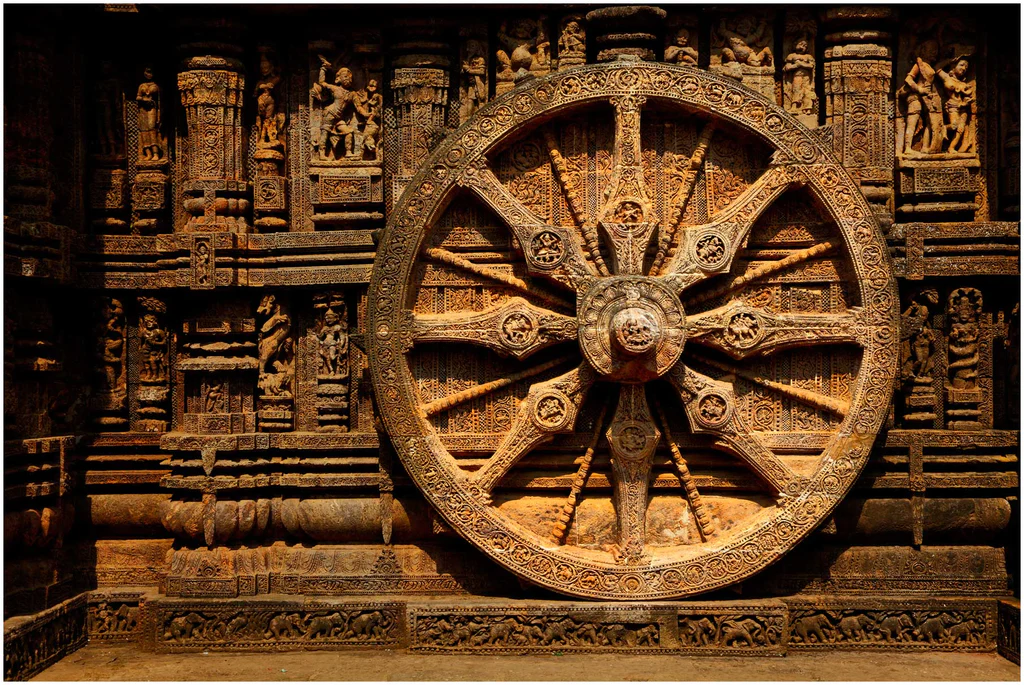
L’empereur est devenu un sage. Il dirige un gouvernement centralisé depuis Pataliputra, capitale de l’Empire Maurya. Son administration perçoit des impôts et il demande à ses inspecteurs de lui rendre des comptes. L’agriculture se développe grâce à des canaux d’irrigation. Il fait construire des routes de qualité pour relier les points stratégiques et les centres politiques, exigeant, des siècles avant notre grand Sully en France, qu’elles soient bordées d’arbres d’ombrage, de puits et d’auberges.
Si l’existence même d’Ashoka en tant que personnage historique a été quasiment oubliée, depuis le déchiffrement de sources écrites en brahmi au XIXe siècle, il est désormais considéré comme l’un des plus grands empereurs indiens. La roue bouddhiste d’Ashoka figure d’ailleurs sur le drapeau indien.
Comme nous l’avons déjà dit, Ashoka et ses descendants ont utilisé leur pouvoir pour construire des monastères et répandre l’influence bouddhiste en Afghanistan, dans de vastes régions de l’Asie centrale, au Sri Lanka et, au-delà, en Thaïlande, Birmanie, Indonésie, puis en Chine, en Corée et au Japon.
Des statues en bronze de son époque ont été déterrées dans les jungles d’Annam, de Bornéo et des Célèbes. La culture bouddhiste s’est implantée dans l’ensemble de l’Asie du Sud-Est, même si chaque région a su conserver une partie de sa personnalité et de son caractère propres.
L’Empire Kouchan
(du Ier siècle av. JC au IIIe siècle)

L’Empire Maurya, qui régnait sur la Bactriane et d’autres anciennes satrapies grecques, s’effondra en 185 avant J.-C., à peine cinq décennies après la mort d’Ashoka, accusé d’avoir trop dépensé pour les temples et les missions bouddhistes. Les mafias brahmaniques, qui avaient abhorré son règne, revinrent immédiatement au pouvoir.
Mais la période est turbulente. Au premier siècle avant J.C., les Kouchans, l’une des cinq branches de la confédération nomade chinoise Yuezhi, émigrent du nord-ouest de la Chine (Xinjiang et Gansu) et s’emparent, après les nomades iraniens Saka, de l’ancienne Bactriane.
Ils forment l’Empire kouchan dans les territoires de la Bactriane. Cet empire s’étend assez vite à une grande partie de ce qui est aujourd’hui l’Ouzbékistan, l’Afghanistan, le Pakistan et le nord de l’Inde, au moins jusqu’à Saketa et Sarnath, près de la ville de Varanasi (Bénarès).

Le fondateur de la dynastie kouchane, Kujula Kadphisès, qui suit les idées culturelles et l’iconographie grecques après la tradition gréco-bactrienne, est un adepte de la secte shivaïte de l’hindouisme. Deux rois kouchans ultérieurs, Vima Kadphisès et Vasudeva II, furent également des mécènes de l’hindouisme et du bouddhisme. La patrie de leur empire se trouvait en Bactriane, où le grec était initialement la langue administrative, avant d’être remplacé par le bactrien écrit en caractères grecs jusqu’au VIIIe siècle, lorsque l’islam le remplace par l’arabe.

Les Kouchans devinrent également de grands mécènes du bouddhisme, en particulier l’empereur Kanishka le Grand (78-144 après J.-C.), qui joua un rôle important dans sa diffusion, via les Routes de la soie, vers l’Asie centrale et la Chine, inaugurant une période de paix relative de 200 ans, parfois décrite comme la « Pax Kouchana ».
Il semble également que dès ses débuts, le bouddhisme ait prospéré dans la classe des marchands, à qui la naissance interdisait l’accès aux ordres religieux de l’Inde et de l’Himalaya. La pensée et l’art bouddhistes se développèrent grâce aux routes commerciales entre l’Inde, l’Himalaya, l’Asie centrale, la Chine, la Perse, l’Asie du Sud-Est et l’Occident. Les voyageurs recherchaient la protection des images bouddhistes et faisaient des offrandes aux sanctuaires le long de la route, ramassant des objets et des sanctuaires portables pour leur usage personnel.
Le terme quatrième concile bouddhiste désigne deux évènements différents selon les écoles theravâda et mahâyâna.
1) La tradition theravâda : afin d’éviter que ne se perde l’enseignement du Bouddha, qui se serait jusqu’alors transmis oralement, cinq cents moines menés par le Vénérable Maharakkhita se réunirent à Tambapanni (Sri Lanka), sous le patronage du roi Vattagamani (r. 103 – 77 av. J.-C.) afin de coucher par écrit sur des feuilles de palme le Canon pâli. (*4)
Le travail, qui aurait duré trois ans, se serait déroulé dans la grotte Aloka lena, près de l’actuel Matale.
2) Selon la tradition mahâyâna, c’est 400 ans après l’extinction du Bouddha que cinq cents moines sarvastivadin se réunirent en 72 après J.-C. au Cachemire pour compiler et clarifier leurs doctrines sous la direction de Vasumitra et sous le patronage personnel de l’empereur Kanishka. Ils auraient ainsi produit le Mahavibhasa (Grande exégèse) en sanskrit.
Selon plusieurs sources, le moine bouddhiste indien Asvaghosa, considéré comme le premier dramaturge classique sanskrit et dont nous avons évoqué plus haut les attaques contre le système des castes, était le conseiller spirituel du roi Kanishka dans les dernières années de sa vie.

A noter que les plus anciens manuscrits bouddhiques découverts à ce jour, tels que les vingt-sept rouleaux d’écorce de bouleau acquis par la British Library en 1994 et datant du Ier siècle, ont été trouvés, non pas en Inde, mais enterrés dans les anciens monastères du Gandhara, la région centrale de l’empire maurya et kouchan, qui comprend les vallées de Peshawar et de Swat (Pakistan) et s’étend vers l’ouest jusqu’à la vallée de Kaboul en Afghanistan et vers le nord jusqu’à la chaîne du Karakoram
Ainsi, après le grand élan donné par le roi Ashoka le Grand, la culture du Gandhara connaîtra un second souffle sous le règne du roi kouchan Kanishka Ier.
Les villes de Begram, Taxila, Purushapura (aujourd’hui Peshawar) et Surkh Kotal atteignent alors des sommets de développement et de prospérité.
Le miracle de Gandhara

C’est peu dire que le Gandhara, surtout à l’époque kouchane, fut au cœur d’une véritable renaissance de la civilisation, avec une incroyable concentration de productions artistiques et une inventivité sans pareil. Si l’art bouddhiste était principalement centré sur les temples et les monastères, les objets de dévotion personnelle étaient très courants.
Grâce à l’art du Gandhara, le bouddhisme se mua en une grande force de beauté, d’harmonie et de paix, conquérant le monde.
Il favorisa alors une création artistique qui élève la pensée et la moralité en faisant appel à des paradoxes métaphoriques.
Les médiums et supports qui prévalent sont la peinture sur soie, les fresques, les livres illustrés et gravures, la broderie et autres arts du tissu, la sculpture (bois, métal, ivoire, pierre, jade) et l’architecture. Quelques exemples :
A. La poésie

Pour la plupart des Occidentaux, le bouddhisme est une émanation typique de la culture asiatique, généralement associée à l’Inde, au Tibet, au Népal, mais aussi à la Chine et à l’Indonésie.
Peu de gens savent que les plus anciens manuscrits bouddhistes connus à ce jour (Ier siècle de notre ère) ont été découverts, non pas en Asie, mais en Asie centrale, dans d’anciens monastères bouddhistes du Gandhara.
A l’origine, avant leur transcription en sanskrit (pendant longtemps la langue des élites), ils étaient écrits en gândhârî, une langue indo-aryenne du groupe prâkrit, transcrit avec l’alphabet kharosthi (une ancienne écriture indo-iranienne). Le gândhârî était la lingua franca de la pensée bouddhiste à ses débuts. Preuve en est, les manuscrits bouddhistes écrits en gândhârî qui ont voyagé jusqu’en Chine orientale pour se retrouver dans les inscriptions de Luoyang et d’Anyang.

Afin de préserver leurs écrits, les bouddhistes étaient à l’avant-garde de l’adoption des technologies chinoises liées à la fabrication de livres, notamment le papier et la xylographie. Cette technique d’impression consiste à reproduire le texte à imprimer sur une feuille de papier transparente qui est retournée et gravée sur une planche de bois tendre. L’encrage des parties saillantes permet ensuite des tirages multiples. C’est ce qui explique que le premier livre entièrement imprimé est le Sutra du diamant bouddhique (vers 868) réalisé par ce procédé
Le Khaggavisana Sutta, littéralement « la corne du rhinocéros », est une expression authentique de la poésie religieuse bouddhiste originale. Connu sous le nom de Sutra du rhinocéros, cette œuvre poétique fait partie du recueil pâli de textes courts Kuddhhaka Nikava, la cinquième partie du Sutta Pitaka, écrit au Ier siècle de notre ère.
Parce que la tradition accorde au rhinocéros asiatique une vie solitaire dans la forêt, l’animal n’aime pas les troupeaux, ce sutra (enseignement) porte le titre approprié d’essai « sur la valeur de la vie solitaire et errante ». L’allégorie du rhinocéros permet de communiquer aux dévots un sens aigu de la souveraineté individuelle que requièrent les engagements moraux prescrits par le Bouddha pour mettre fin à la souffrance en se déconnectant des plaisirs et des douleurs terrestres.

Extrait :
Refuser la violence à l’égard de tous les êtres,
ne jamais faire de mal à un seul d’entre eux,
aider avec compassion et un cœur aimant ;
erre seul comme un rhinocéros.
Celui qui tient compagnie nourrit l’affection
et de l’affection naît la souffrance.
Réalisant le danger qui découle de l’affection,
erre seul comme un rhinocéros.
En sympathisant avec les amis et les compagnons,
l’esprit se fixe sur eux et perd son chemin.
Percevoir ce danger, c’est la familiarité,
erre seul comme un rhinocéros.
Les préoccupations que l’on a pour ses fils et ses femmes
sont comme une pensée et un bambou enchevêtré.
Reste démêlé comme un jeune bambou,
erre seul comme un rhinocéros.
Comme un cerf qui erre librement dans la forêt,
va où il veut en broutant,
un homme sage, qui chérit sa liberté,
erre seul comme le rhinocéros.
Laissez derrière vous vos fils, vos femmes et votre argent,
tous vos biens, vos parents et vos amis.
Abandonnez tous vos désirs, quels qu’ils soient,
erre seul comme le rhinocéros. (…)
B. La littérature
Deux autres chefs-d’œuvre tirés du même recueil sont d’une part les célèbres Jataka (Récits des vies antérieures du Bouddha), et d’autre part, le Milindapanha (Les questions du roi Milinda).
Les Jataka, qui mettent en scène de nombreux animaux, montrent comment, avant la dernière incarnation humaine au cours de laquelle il atteignit le nirvana, le Bouddha lui-même s’était réincarné d’innombrables fois en animal (en diverses sortes de poissons, en crabe, coq, pivert, perdrix, francolin, caille, oie, pigeon, corbeau, zèbre, buffle, plusieurs fois en singe ou en éléphant, en antilope, cerf et cheval).
Et puisque c’est Bouddha qui est incarné dans cet animal, celui-ci a soudainement des propos d’une grande sagesse.
Mais en d’autres occasions, ce sont des personnages qui sont des animaux alors que notre Bodhisattva apparaît sous forme humaine. Ces contes sont souvent pimentés d’un humour piquant. On sait d’ailleurs qu’elles ont inspiré La Fontaine, qui a dû les entendre du docteur François Bernier, qui les avait lui-même apprises alors qu’il était médecin en Inde pendant huit ans.

Les questions du roi Milinda est un compte-rendu imagé, véritable dialogue platonicien entre le roi grec de Bactriane, Milinda (le Grec, Ménandre), qui régnait au Pendjab, et le sage bouddhiste Bhante Nagasena. Leur dialogue animé, dramatique et spirituel, éloquent et inspiré, explore les divers problèmes de la pensée et de la pratique bouddhistes du point de vue d’un intellectuel grec perspicace, à la fois perplexe et fasciné par la religion étrangement rationnelle qu’il découvre sur le sous-continent indien.
Par le biais de paradoxes, Nagasena amène le « rationaliste » grec à s’élever jusqu’à la dimension spirituelle, au-delà de la logique et de la simple rationalité. Car le nirvana, tout comme l’espace, n’a « pas de cause » formelle et, bien qu’il peut se produire, « ne peut pas être causé ». Mince, comment faire alors pour y aboutir ?
Et à l’un de ses disciples qui un jour lui posa la question de savoir si l’univers était fini ou infini, éternel ou non, si l’âme était distincte du corps, ce que devenait l’homme après la mort, le Bouddha répondit par une parabole :
« Supposons qu’un homme soit gravement atteint d’une flèche, que l’on l’amène chez un médecin, et que l’homme dise : “Je ne laisserai pas retirer cette flèche, avant de savoir qui m’a blessé, de quel caste il est, de quel village il est né, de quel arc il s’est servi, de quelle matière a été faite la flèche, de quelle direction elle a été tirée…” Alors cet homme mourrait certainement avant d’avoir les réponses. »
C. Urbanisme

Taxila ou Takshashila (aujourd’hui au Pendjab), l’un des grands centres urbains et, pendant un certain temps, la capitale du Gandhara, fut fondée vers 1000 avant J.-C. sur les ruines d’une cité datant de la période Harappa et située sur la rive orientale de l’Indus, point de jonction entre le sous-continent indien et l’Asie centrale.
Certaines ruines de Taxila datent de l’époque de l’empire perse achéménide, suivi successivement par l’Empire Maurya, le royaume indo-grec, les Indo-Scythes et l’empire kouchan.
D’après certains témoignages, l’université de l’ancienne Taxila (des siècles avant l’université bouddhiste résidentielle de Nalanda fondée en 427 après J.-C.) peut être considérée comme l’un des premiers centres d’enseignement d’Asie du Sud. Dès 800 av. J.-C., la ville fonctionnait en grande partie comme une université, offrant des études supérieures. Avant d’y être admis, les étudiants devaient avoir terminé ailleurs leurs études primaires et secondaires. L’âge minimum requis était de seize ans. Non seulement les Indiens, mais aussi les étudiants de contrées voisines comme la Chine, la Grèce et l’Arabie affluaient dans cette ville d’apprentissage.

Vers 321 avant J.-C., c’est le grand philosophe, enseignant et économiste du Gandhara, Chanakya (375 à 283 av. J.-C.) qui aida le premier empereur maurya, Chandragupta, à accéder au pouvoir.
Sous la tutelle de Chanakya, Chandragupta avait reçu une éducation complète à Taxila, englobant les différents arts de l’époque, y compris l’art de la guerre, pendant sept à huit ans.
En 303 avant J.-C., Taxila tomba entre leurs mains et sous Ashoka le Grand, le petit-fils de Chandragupta, la ville devint un grand centre de l’enseignement et de l’art bouddhiste.
Chanakya, dont les écrits n’ont été redécouverts qu’au début du XXe siècle et qui fut le principal conseiller des deux empereurs Chandragupta et de son fils Bindusara, est considéré comme ayant joué un rôle majeur dans l’établissement de l’Empire Maurya.
Également connu sous les noms de Kauṭilya et Vishnugupta, Chanakya est l’auteur de l’Arthashastra, un traité politique sanskrit sur l’art de gouverner, la science politique, la politique économique et la stratégie militaire. L’Arthashastra aborde également la question d’une éthique collective assurant la cohésion de la société.
Il conseille au roi de lancer de grands projets de travaux publics dans les régions dévastées par la famine, les épidémies et autres catastrophes naturelles, ou par la guerre, tels que la création de voies d’irrigation et la construction de forts autour des principaux centres de production et villes stratégiques, et d’exonérer d’impôts les personnes touchées par ces catastrophes.

Au IIe siècle avant notre ère, Taxila fut annexée par le royaume indo-grec de Bactriane qui y érigea une nouvelle capitale nommée Sirkap, où des temples bouddhistes côtoyaient des temples hindous et grecs, signe de tolérance religieuse et de syncrétisme. Sirkap fut construite selon le plan quadrillé hippodamien (*5) caractéristique des villes grecques
Elle s’organise autour d’une avenue principale et de quinze rues perpendiculaires, couvrant une surface d’environ 1200 mètres sur 400, avec un mur d’enceinte de 5 à 7 mètres de large et de 4,8 kilomètres de long.
Après sa construction par les Grecs, la ville fut reconstruite lors des incursions des Indo-Scythes, puis par les Indo-Parthiens, après un tremblement de terre en l’an 30 de notre ère.
Certaines parties de la ville, notamment le stupa (reliquaire) bouddhiste de l’aigle bicéphale et le temple du dieu Soleil, furent construites par Gondophares, le premier roi du royaume indo-parthien. Enfin, des inscriptions datant de l’an 76 de notre ère démontrent que la ville était déjà passée sous la domination des Kouchans. Le souverain kouchan Kanishka érigera Sirsukh, à environ 1,5 km au nord-est de l’ancienne Taxila.
Des sutras bouddhistes de la région du Gandhara sont étudiés en Chine dès 147 de notre ère, lorsque le moine kouchan Lokakṣema (né en 147) commença à traduire en chinois certains des premiers sutras bouddhistes. Les plus anciennes de ces traductions montrent qu’elles ont été faites à partir de la langue
D. Architecture, l’invention des stupas

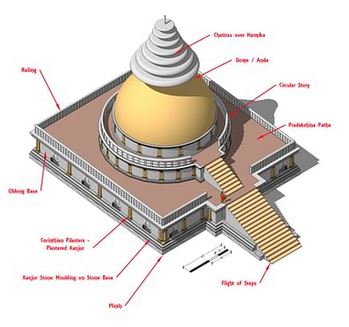
A l’origine, les édifices religieux sous forme de stupa (reliquaire) ont été érigés en Inde comme monuments commémoratifs associés à la conservation des reliques sacrées du Bouddha.
Construits en forme de dôme, ils sont entourés d’une balustrade qui sert de rampe pour la circumambulation rituelle. On accède à la zone sacrée par des portes situées aux quatre points cardinaux. Les stupas se situent souvent à proximité de sites funéraires préhistoriques beaucoup plus anciens, associés notamment à la Civilisation de la vallée de l’Indus.

Des grilles et des portails en pierre, recouverts de sculptures, leur ont été ajoutés. Les thèmes favoris sont les événements de la vie historique du Bouddha, ainsi que de ses vies antérieures, au nombre de 550, décrites avec beaucoup d’ironie dans les Jatakas. (Voir B)

Les bas-reliefs des stupas sont comme des bandes dessinées qui nous racontent la vie quotidienne et religieuse du Gandhara : amphores, coupes à vin (kantaros), bacchanales, instruments de musique, vêtements grecs ou indiens, ornements, coiffures arrangées à la grecque, artisans, leurs outils, etc.
Sur un vase trouvé à l’intérieur d’un stupa, on trouve l’inscription d’un Grec, Théodore, gouverneur civil d’une province au Ier siècle avant J.-C., expliquant en alphabet kharosthi comment les reliques ont été déposées dans le stupa.
On pense que de nombreux stupas datent de l’époque d’Ashoka, comme celui de Sanchi (Inde centrale) ou de Kesariya (Inde de l’Est), où il a également érigé des piliers avec ses édits, et peut-être ceux de Bharhut (Inde centrale), Amaravati (sud-est de l’Inde) ou Dharmarajika (Taxila) dans le Gandhara (Pakistan).
Selon la tradition bouddhiste, l’empereur Ashoka aurait récupéré les reliques du Bouddha dans des stupas plus anciens et en aurait fait ériger 84 000 pour répartir l’ensemble de ces reliques sur tout le territoire indien.
Marchant dans les pas d’Ashoka, Kanishka ordonna la construction à Purushapura (Peshawar) du grand stupa de 400 pieds qui figure parmi les plus hauts édifices du monde antique.
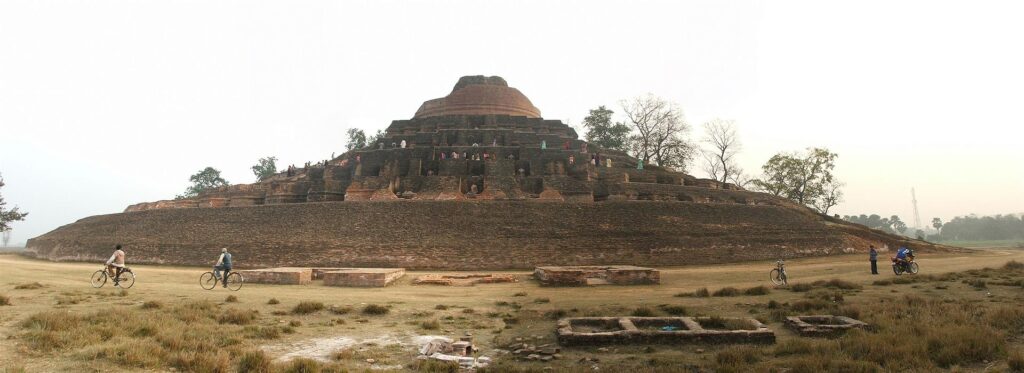
Les archéologues qui en ont redécouvert la base en 1908-1909 ont estimé que ce stupa avait un diamètre de 87 mètres. Selon les rapports de pèlerins chinois tels que Xuanzang, il faisait environ 200 mètres de haut et était recouvert de pierres précieuses. Sous les Kouchans également, d’immenses statues du Bouddha furent érigées dans les monastères ou sculptées à flanc de colline.
E. Sculpture
—PERIODE ANICONIQUE
Il est important de rappeler que dans les premiers temps, Bouddha n’était jamais représenté sous forme humaine.

Pendant plus de quatre siècles, sa présence est simplement suggérée par des éléments symboliques tel qu’une empreinte de pieds, une fleur de lotus (indiquant la pureté de sa naissance), une roue à huit rayons (symbolisant la dharma), un trône vide, un espace inoccupé sous un parasol, un cheval sans cavalier ou encore le figuier sous lequel il a atteint le nirvana.
–FIN DE L’ANICONISME
Ce qui a conduit les bouddhistes à renoncer aux représentations aniconiques reste un vaste mystère. Un tel développement est assez unique dans l’histoire des religions. Imaginons soudainement les musulmans promouvant des statues du prophète Mohammed !
Les explications avancées jusqu’ici nous laissent sur la faim.
Pour les uns, les bouddhistes auraient voulu séduire une clientèle grecque, mais aussi bien les populations grecques que le bouddhisme était au Gandhara bien avant la révolution iconographique en question.
Pour les autres, les pratiquants, en l’absence de Bouddha lui-même, auraient cherché désespérément un centre d’intérêt visuel, soit une statue, une peinture ou mêmes quelques cheveux… Ces représentations symboliques, on l’a vu, répondaient à cette demande.
« Le Jataka de Kalingabodhi (écrit majeur sur les vies multiples de Bouddha) relate la frustration des habitants de Sravasti, en découvrant un jour qu’ils n’ont personne à vénérer lorsqu’ils se rendent au Jetavana et trouvent le Bouddha ‘absent’, parti en voyage. Pour remédier à cette situation, à son retour, le Bouddha permet à [son disciple] Ananda de planter un figuier Bodhi devant le [monastère de] Jetavana (…) qui sert de centre de substitution pour les dévotions des gens, chaque fois que le Bouddha n’est pas en résidence », écrit John Strong, dans Reliques du Bouddha.
Bouddha, rapporte-t-on, aurait refusé qu’il soit représenté d’aucune façon, craignant de voir prospérer l’idolâtrie.
Avec le temps, le bouddhisme va évoluer. Au Gandhara, c’est le bouddhisme mahâyâna (Grand Véhicule) qui s’épanouit. Pour ce courant, l’objectif ne se limite plus à atteindre le nirvana à titre personnel mais de libérer toute l’humanité de la souffrance.
Si pour le bouddhisme theravâda, Siddhartha Gautama n’était qu’un homme éclairé donnant l’exemple, pour le bouddhisme mahâyâna, il s’agit indubitablement, avec Bouddha, d’une tentative (réussie) de personnifier le dharma (la force spirituelle omniprésente, le principe ultime et suprême de la vie) dans la conception du premier de tous les bouddhas. Une sorte de Jésus, un dieu devenu homme pour ainsi dire…
Comme plus tard Jésus dans le christianisme à partir du Ve siècle, Bouddha pouvait dès lors être représenté sous une forme humaine.
Certains bouddhas du Gandhara représentent également des états d’âme spécifiques, tels que la sagesse, la tendresse et la compassion.
Contrairement à de nombreux artistes chrétiens chez nous, qui, conformément à la doxa, ont représenté le Christ souffrant sur la Croix (événement fondamental de la foi chrétienne), les artistes du Gandhara présentent Bouddha comme un être totalement détaché de la douleur humaine, regardant avec compassion l’humanité tout entière.
Le but étant d’éliminer la souffrance chez tous les hommes, la compassion n’est pas une notion passive chez les bouddhistes. Ce n’est pas seulement de l’empathie, mais plutôt un altruisme empathique qui s’efforce activement de libérer les autres de la souffrance, un acte de bienveillance empreinte à la fois de sagesse et d’amour.
DIFFERENCES DE FORME, DIFFERENCE DE CONTENU

Avant de discuter de leurs différences, pour faire simple, distinguons ici, parmi tant d’autres, quatre types de représentations de bouddha:
- L’école dite « greco-bouddhique » de Gandhara produite dans la région qui va de Hadda (Afghanistan) à Taxila (Pundjab) en passant par Peshawar (Pakistan);
- L’école dite « indo-bouddhique » de Mathura;
- L’école d’Andra Pradesh, au sud de l’Inde;
- L’école de la période Gupta (3e au 5e siècle).
1. Greco-Bouddhique au Gandhara

Le terme « greco-bouddhique », renvoie à la thèse de l’archéologue Alfred Foucher (1865-1952) soutenue à la Sorbonne en 1905 sur l’art du Gandhara.
Comme l’écrivait André Malraux (1901-1976) dans les « Voix du silence », en 1951, l’art gréco-bouddhique est cette rencontre entre hellénisme et bouddhisme. Au lieu de dire que l’art venu de Grèce s’était métamorphosé en art bouddhique comme le disait Malraux, je pense plutot qu’au Gandhara, c’est l’art bouddhique qui s’est approprié le meilleur de l’esthétique indienne, grecque et des steppes.
Cependant, Foucher avait raison d’insister, contre ses amis anglais, qu’il s’agit bien d’une influence hellénique et non pas romaine. De leur coté, avec l’Inde s’émancipant de l’Empire britannique, les savants indiens ont tenté de valider la thèse d’une création autochtone de l’image de Buddha, opposant au style du Gandhara, que Foucher voulait gréco-bouddhique, le style de Mathura, dans la région de Delhi, lui aussi englobé dans l’empire des Kouchans, et vu par certains comme contemporain, même s’il est beaucoup moins prolixe que l’art du Gandhara.

L’art du Gandhara prit véritablement son essor à l’époque kouchane, et plus particulièrement sous le règne du roi Kanishka.
Des milliers d’images furent produites et répandues dans tous les coins de la région, depuis les bouddhas portatifs jusqu’aux statues monumentales des lieux de culte sacrés.
Au Gandhara, pour figurer Bouddha, on représente d’une façon très réaliste une belle personne, souvent un jeune homme, voire une femme. La charge spirituelle est telle que le genre n’est plus essentiel. On ne sait pas s’il s’agit de beaux portraits pris sur le vif, ou de purs fruits de l’imagination des artistes.


Bouddha y est souvent montré en posture méditative afin d’évoquer le moment où il atteint le nirvana.
Couronné d’une auréole, le visage grave ou souriant, les yeux mi-clos, il irradie la lumière. Plein de sérénité, il incarne le détachement, la concentration, la sagesse et la bienveillance.
Ses cheveux en chignon (l’ushnisha) au sommet du crâne indiquent qu’il est doué d’une connaissance supramondaine. Le point noire entre les deux yeux symbolise le troisième œil, celui de l’éveil.
Dans certaines sculptures, cette cavité contient une perle de cristal, symbole de lumière irradiante. Les lobes d’oreilles sont allongés et servent à accueillir les lourds bijoux que portait autrefois le jeune prince Siddhartha, durant sa jeunesse princière.
Le positionnement des mains, comme dans le reste de l’art indien, répond à des codes. Il peut s’agir de « l’abhayamudra », le geste qui rassure, la paume de la main tournée vers l’extérieur ; de la « varamudra », qui symbolise le don, la main pendante et ouverte avec le bras à demi plié, ou encore de la « vitarkamudra », qui symbolise l’argumentation, la main levée à hauteur de la poitrine, à demi fermée, paume en avant, l’index recourbé vers le pouce.
Au Gandhara, Bouddha est vêtu d’un manteau monastique qui lui couvre les deux épaules. L’étoffe n’est ni taillée, ni cousue, mais simplement drapée à la grecque autour du corps. Les plis à peine stylisés suivent les volumes naturels.
Le roi Kanitscha encouragea à la fois l’école d’art gréco-bouddhique du Gandhara (à Taxila, Peshawar et Hadda) et l’école indo-bouddhique (à Mathura, plus proche de l’Inde).
2. Ecole de Mathura
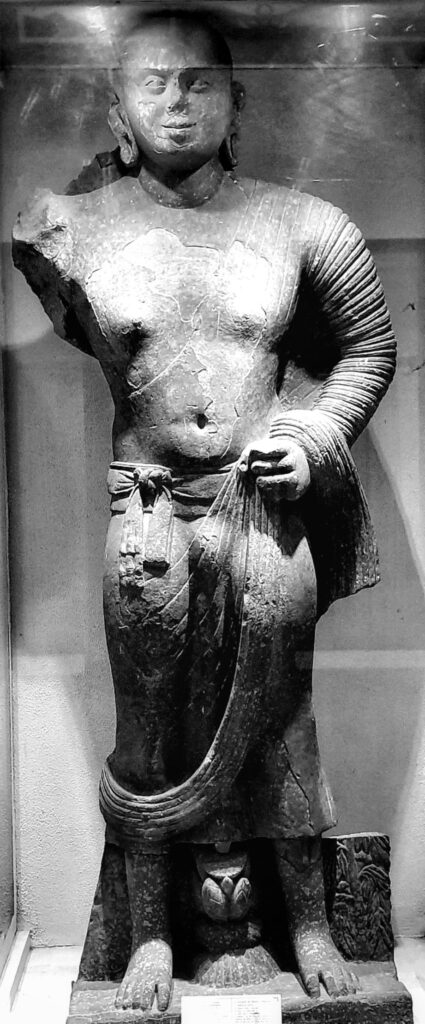

A Mathura, les artistes ont produit un Bouddha très différent. Son corps est dilaté par le souffle sacré (prana) et sa robe monastique est drapée à l’indienne de manière à laisser l’épaule droite dénudée.
On pense que les artistes, pour plaire à un public local, se sont inspirés des statues de yaksha, des esprits de la nature.
Dans les mythologies hindoue, jaïne et bouddhiste, le yakṣha a une double personnalité.
D’un côté, ce peut être une fée de nature inoffensive, associée aux forêts et aux montagnes ; mais il existe une version beaucoup plus sombre du yakṣa, qui est une sorte d’ogre, de fantôme ou de démon anthropophage qui harcèle et dévore les voyageurs.
3. Ecole d’Andrah Pradesh

Un troisième type de bouddha influent s’est développé dans l’Andhra Pradesh, au sud de l’Inde, où des représentations aux proportions imposantes, au visage grave, sans sourire, sont vêtues de robes qui laissent également apparaître l’épaule droite.
Ces sites méridionaux ont servi d’inspiration artistique à la terre bouddhiste du Sri Lanka, à la pointe sud de l’Inde, et les moines sri-lankais s’y rendaient régulièrement. Un certain nombre de statues de ce style se sont également répandues dans toute l’Asie du Sud-Est.
4. Ecole Gupta

La période Gupta, du IVe au VIe siècle de notre ère, dans le nord de l’Inde, souvent qualifiée d’âge d’or, est supposée avoir synthétisé les deux courants. En réalité, en cherchant une image idéale, elle a sombré dans le maniérisme. Les bouddhas gupta ont les cheveux disposés en petites boucles individuelles et leur tunique arbore un réseau de cordelettes suggérant les plis des draperies (comme à Mathura).
Avec leurs yeux baissés et leur aura spirituelle, les bouddhas gupta deviendront le modèle des futures générations d’artistes, que ce soit dans l’Inde post-Gupta et Pala ou au Népal, en Thaïlande et en Indonésie.
Des statues métalliques gupta du Bouddha, emportées par les pèlerins, ont également été disséminées le long de la Route de la soie jusqu’en Chine.
Mais les Bouddhas du Gandhara sont uniques et vraiment à part. Ce sont de véritables individualités échappant à toute codification et aux normes. Ils ont été fabriqués par des artistes habités d’une spiritualité élevée, explorant de nouvelles frontières de la beauté, du mouvement et de la liberté, et non produisant des objets pour satisfaire un marché émergent.
Aujourd’hui, Pakistanais, Indiens, Afghans et Européens aiment à se quereller. Tous prétendent avoir été les principaux parrains et auteurs du « miracle de Gandhara », mais peu se demandent comment il s’est produit.
Dès le Ier siècle avant J.-C., les artistes locaux délaissent les matériaux périssables avec lesquels ils travaillaient, comme la brique, le bois, le chaume et le bambou, pour adopter la pierre. Le nouveau matériau utilisé était principalement une pierre de schiste allant du gris clair au gris foncé (dans la vallée de la rivière Kaboul et la région de Peshawar). Les périodes ultérieures se caractérisent par l’utilisation du stuc et de l’argile (spécialité de Hadda).
Les techniques utilisées pour les sculptures et les pièces de monnaie du Gandhara sont très proches de celles de la Grèce. Ont-elles été créées par des sculpteurs grecs itinérants ou par des artistes locaux qu’ils ont formés ? Rien n’a été prouvé, mais est-ce vraiment important ?
Lorsque l’Asie rencontre la Grèce
Examinons maintenant des expressions artistiques attestant la belle rencontre entre la culture hellénique et les cultures indiennes et locales.
A. Pièces de monnaie kouchanes

Tout en soutenant toutes les religions qu’il jugeait dignes, Kanishka ne cachait pas sa préférence pour le bouddhisme.
Une pièce d’or datant de 120 après J.-C. montre le roi vêtu d’un lourd manteau kouchan et de longues bottes, des flammes sortant de ses épaules, un étendard dans la main gauche et faisant un sacrifice sur un autel, avec cette légende en caractères grecs : « Roi des rois, Kanishka le Kouchan. » Le revers de la même pièce représente un bouddha debout, en costume grec, faisant de la main droite le geste « ne craignez rien » (abhaya mudra) et tenant un pli de sa robe dans la main gauche. La légende en caractères grecs se lit désormais ΒΟΔΔΟ (Boddo), pour Bouddha.
B. Reliquaire bimaran

Un véritable thème classique du répertoire de tout artiste de l’époque consiste à montrer Bouddha entouré, accueilli et protégé des divinités d’autres croyances et de religions plus anciennes. La plus ancienne représentation de ce type connue à ce jour figure sur un reliquaire trouvé dans le stupa de Bimaran, au nord-ouest du Gandhara.
Sur cette petite urne en or, généralement datée de 50-60 après J.-C., figure, à l’intérieur de niches voûtées d’architecture gréco-romaine, une représentation hellénistique du Bouddha (coiffure, contrapposto, himation d’élite, etc.), entourée des divinités indiennes Brahma et Sakra.
Tout comme Ashoka, Kanishka, presque laïque, entendait régner, non pas contre mais avec, et surtout au-dessus de toutes les religions. Ainsi, à l’occasion, les divinités grecques, représentées sur les pièces de monnaie (Zeus, Apollon, Héraclès, Athéna, etc.), côtoient les divinités du védisme, du zoroastrisme et du bouddhisme.
Autre exemple, à Ellora, au centre de l’Inde, la grotte et le temple taillés dans le roc où se côtoient les représentants des trois religions (bouddhisme, hindouisme et jaïnisme).
C. Triade de Hadda


Un autre exemple exquis de cet art gandharien est un groupe sculptural connu sous le nom de Triade de Hadda, excavé à Tapa Shotor, un grand monastère sarvastivadin près de Hadda en Afghanistan, datant du IIe siècle après J.-C.
Pour donner une idée de son activité, ce sont quelque 23 000 sculptures gréco-bouddhiques, en argile et en plâtre, qui ont été mises au jour rien qu’à Hadda, entre les années 1930 et 1970.
Le site, fortement endommagé lors des dernières guerres, possédait de belles statues, notamment un bouddha assis, vêtu d’une chlamyde grecque (manteau blanc), les cheveux bouclés, accompagné d’Héraclès et de Tyché (déesse grecque de la fortune et de la prospérité), vêtue d’un chiton (robe à la grecque) et tenant une corne d’abondance.

Seule adaptation aux traditions locales de l’iconographie grecque, Héraclès tient en main, non plus son habituelle massue, mais la foudre de Vajrapani (du sanskrit vajra, signifiant « foudre », et pani « en main »), l’une des trois premières divinités protectrices entourant le Bouddha.
C’est un bodhisattva. Il apparaît dès le IIe siècle dans l’iconographie mahāyāna comme doué d’une grande force et comme protecteur du Bouddha. Dans l’art gréco-bouddhique il ressemble à Héraclès ou Zeus, tenant en main une courte massue en forme de vajra, un foudre stylisé. On l’identifie au protecteur, « puissant comme un éléphant », qui aurait veillé sur Bouddha à sa naissance.
Une autre statue rappelle le portrait d’Alexandre le Grand.

De cet ensemble sculptural, il ne reste malheureusement que des photographies.
Selon l’archéologue afghan Zemaryalai Tarzi, le monastère de Tapa Shotor, avec ses sculptures en argile datées du IIe siècle de notre ère, représente le « chaînon manquant » entre l’art hellénistique de Bactriane et les sculptures en stuc plus tardives trouvées à Hadda, généralement datées du IIIe-IVe siècle de notre ère.
Traditionnellement, l’afflux d’artistes, maître de l’art hellénistique, a été attribué à la migration des populations grecques des villes gréco-bactriennes d’Aî-Khanoum et de Takht-I-Sangin (Nord de l’Afghanistan).

Tarzi suggère que les populations grecques se sont établies dans les plaines de Jalalabad, qui comprennent Hadda, autour de la ville hellénistique de Dionysopolis, et qu’elles sont à l’origine des créations bouddhistes de Tapa Shotor, au IIe siècle de notre ère.
Les colons grecs restés au Gandhara (les Yavanas) après le départ d’Alexandre, soit par choix, soit en tant que populations condamnées à l’exil par Athènes, ont grandement embelli les expressions artistiques de leur nouvelle spiritualité.
Offrant fraîcheur, poésie et un sens du mouvement spectaculairement moderne, les premiers artistes bouddhistes du Gandhara, saisissant des instants de « mouvement-changement » permettant à l’esprit humain d’appréhender un saut vers la perfection, sont une contribution inestimable à la culture de l’humanité tout entière. N’est-il pas temps de reconnaître ce magnifique travail ?
D. Prendre la terre à témoin

Parmi les autres types productions artistiques de Gandhara, ce magnifique bas-relief, aujourd’hui conservée au musée de Cleveland, illustre la lutte du Bouddha pour atteindre le nirvana.
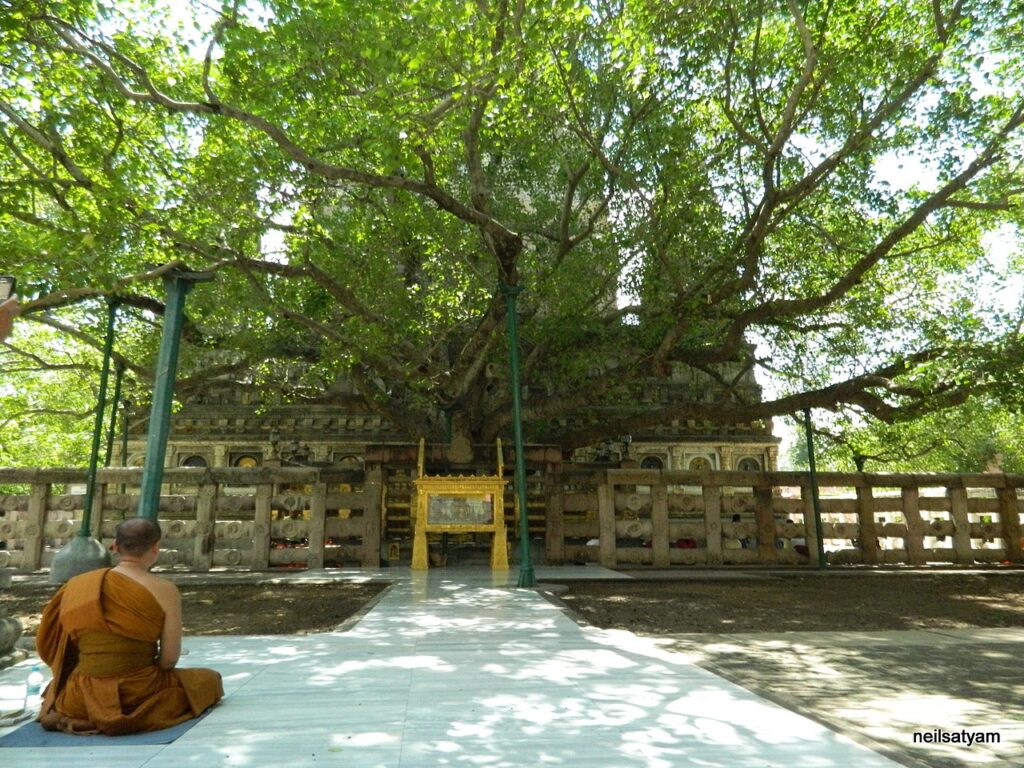
Au centre de la composition se trouve l’arbre de la Bodhi, sous lequel le Bouddha atteignit l’illumination. Ce figuier sacré est vénéré depuis des temps ancestraux par les villageois locaux, car il passe pour être la résidence d’une divinité de la nature. L’autel lui-même est recouvert de kusha, herbe utilisée pour des offrandes sacrificielles.
Il y a environ 2500 ans, après être resté en méditation pendant 49 jours, assis sous cet arbre, le Bouddha est défié par des démons cauchemardesques qui remettent en cause l’authenticité de son illumination.
Leur chef Mara (littéralement, la mort), qui se tient à droite dans une posture arrogante, entouré de ses filles, fait tout pour empêcher Bouddha d’atteindre le nirvana (l’éveil).
Il le menace et encourage ses propres filles à le séduire. Innocemment, il lui demande s’il est sûr de pouvoir trouver quelqu’un pour témoigner qu’il a véritablement atteint le nirvana. En réponse à ce défi, le Bouddha touche alors la terre et la prend à témoin.
Selon la mythologie, la jeune déesse de la Terre surgit alors du sol et commença à essorer les eaux déferlant de ses cheveux pour noyer Mara. Sur la sculpture, on peut la voir, toute petite, au pied de l’autel, agenouillée devant Bouddha en signe de révérence. Elle a également pris forme humaine en sortant de terre. Les anciennes religions interviennent ici pour défendre et protéger la nouvelle, celle de Bouddha.
Semblant, eux aussi, regretter les anciens dieux et déesses de leur panthéon, les Indiens convertis au bouddhisme les ajoutent au-dessus de la tête de Bouddha ou à côté, comme, par exemple, le dieu védique Indra.
E. Tous bodhisattva ?

Enfin, pour conlure cette section sur la sculpture, deux mots sur le bodhisattva, figure très intéressante sortie de l’imaginaire bouddhiste pour rendre la spiritualité bouddhiste accessible au citoyen ordinaire.
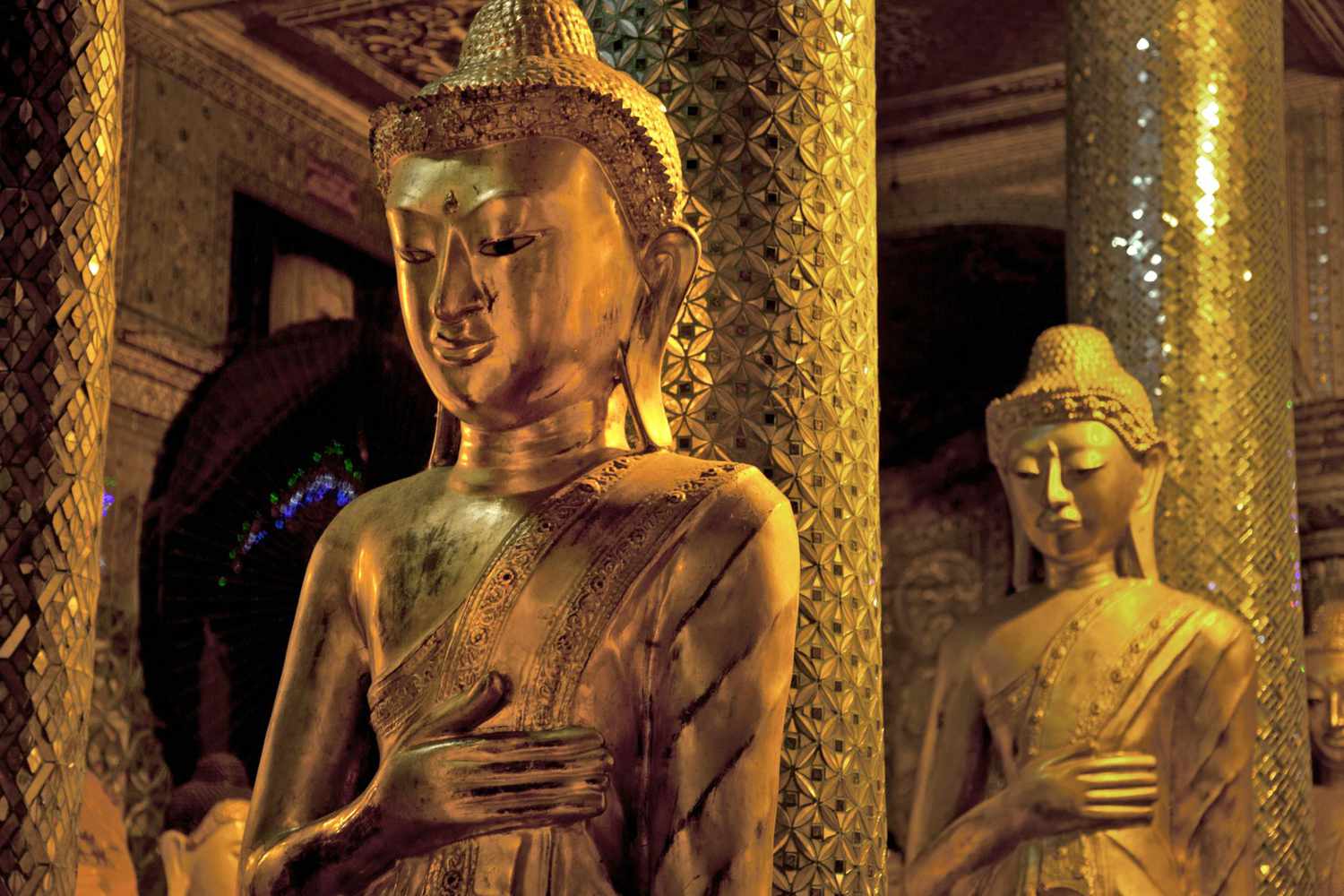
Il peut s’agir soit d’une représentation de Bouddha en personnage princier orné de bijoux, avant son renoncement à la vie de palais, soit d’un humain ordinaire, déjà conscient qu’il est sur la voie de l’illumination et qu’il est devenu un outil au service du bien.
Animé d’altruisme et obéissant les disciplines destinées aux bodhisattvas, il doit aider par compassion d’abord les autres êtres sensibles à s’éveiller, y compris en retardant sa propre libération !
Les bodhisattvas se distinguent par de grandes qualités spirituelles telles que les « quatre demeures divines » que sont:
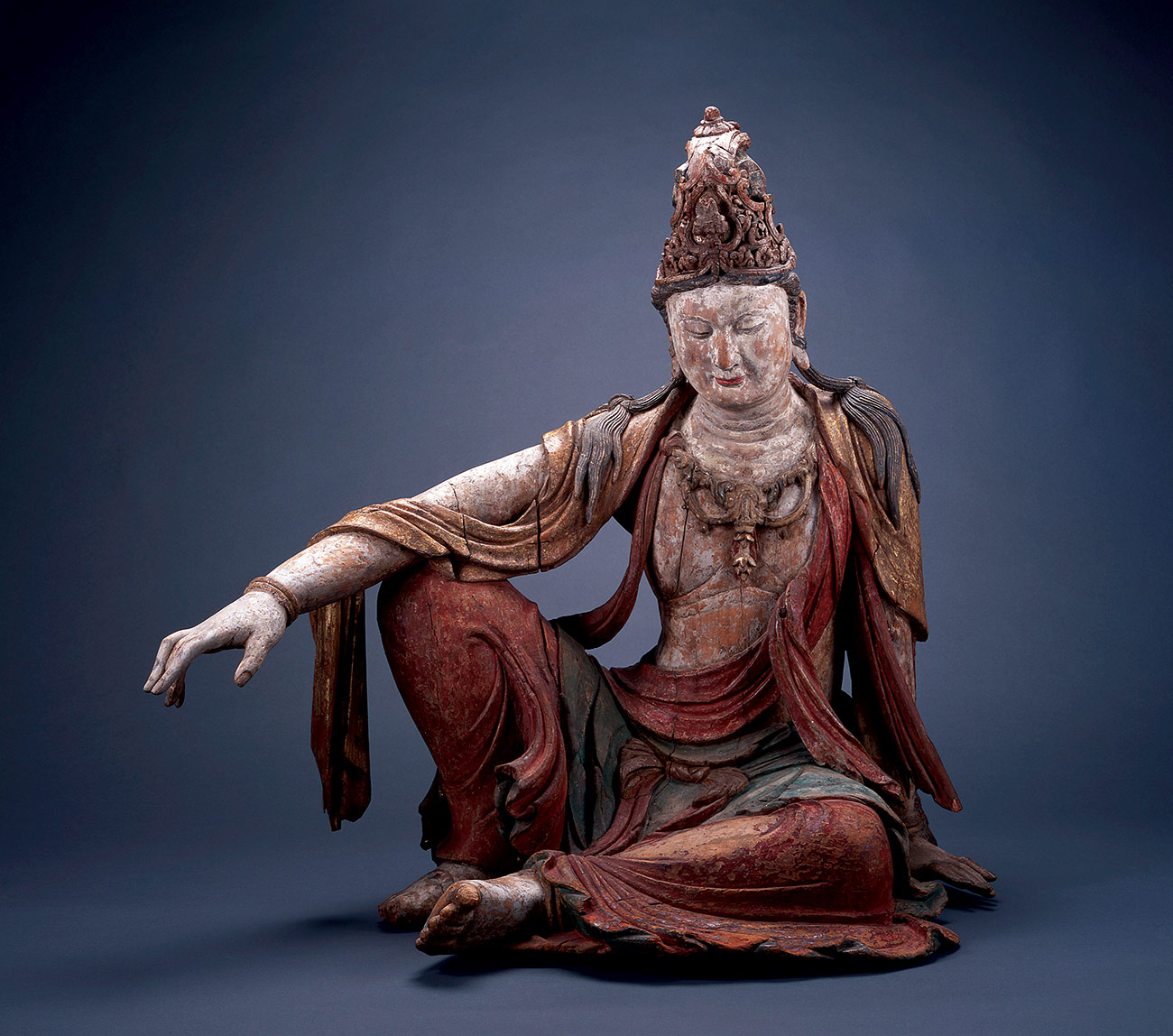
- l’amour bienveillant (maitri),
- la compassion (karuna),
- la joie empathique (mudita) et
- l’équanimité (upekṣa),
ainsi que les diverses perfections (paramitas), qui comprennent la prajnaparamita (« connaissance transcendante » ou « perfection de la sagesse ») et les moyens habiles (upaya).
Des bodhisattvas spirituellement avancés tels qu’Avalokiteshvara (ci-dessus), Maitreya et Manjushri, largement vénérés dans le monde bouddhiste mahâyâna, sont censés posséder un grand pouvoir, qu’ils utilisent pour aider tous les êtres vivants.
Pour certains courants bouddhistes, seul Maitreya mérite le titre de « Bouddha du futur ». Dans l’art on le représente à la fois comme un bouddha vêtu d’une robe monastique et comme un bodhisattva princier avant l’illumination.
Un magnifique bodhisattva de Gandhara peut être admiré au Dallas Museum of Art (ci-dessous).
Cette sculpture en terre cuite représente un « Bodhisattva pensant » de la région de Hadda en Afghanistan, une production typique du Gandhara.

Avec très peu d’éléments visuels, l’artiste réussit un travail gigantesque. Les piliers de sa large chaise sont des lions au regard un peu fou, représentation allégorique de ces passions qui nous font souffrir et qui sont maintenues sous un sage contrôle par l’effort hautement réflexif du Bodhisattva héroïque au centre de l’œuvre.
Le bouddhisme aujourd’hui, l’exemple de Nehru

Paradoxalement, le bouddhisme, en tant que religion, a presque cessé d’exister dans son propre berceau, l’Inde, depuis le XIIe siècle de notre ère.
Bel exemple de la lutte incessante des meilleurs esprits indiens pour l’émancipation, en 1956, près d’un demi-million « d’intouchables » se sont convertis au bouddhisme sous l’impulsion du dirigeant politique à la tête du comité chargé de rédiger la Constitution de l’Inde, le réformateur social B. R. Ambedkar (1891-1956), et du Premier ministre indien et chef du Parti du Congrès Jawaharlal Nehru (1889-1964), lui-même issu d’une famille de brahmanes.
En juin de la même année, le Courrier de l’UNESCO consacrait son édition à « 25 siècles d’art et de culture bouddhistes ».
En Inde, les deux hommes d’État ont orchestré une année de célébration en l’honneur de « 2500 ans de bouddhisme », non pas pour ressusciter une ancienne religion en soi, mais pour s’approprier le statut de berceau de cette vieille religion et renvoyer au monde une image de champion de la non-violence et du pacifisme.

Quelques années plus tard, lors de sa visite d’État à la Maison Blanche, le 9 novembre 1961, le Premier ministre indien Nehru offrit une sculpture bouddhiste au président John F. Kennedy
Comme beaucoup d’hindous, Mahatma Gandhi vénérait Bouddha. Pour lui, le bouddhisme n’était qu’une « autre forme d’hindouisme » et sa critique venait donc « de l’intérieur de l’hindouisme ».
Un point de vue que ne partageait pas le Premier ministre indien Jawaharlal Nehru. Profondément troublé par certaines caractéristiques intrinsèques à l’hindouisme, telles que le ritualisme et les castes, Nehru ne pouvait pas placer le bouddhisme, qui abhorrait ces institutions, dans la même rubrique…
Nehru fut fortement influencé par le bouddhisme. C’est ainsi qu’il appela sa fille (la future Première ministre Indira Gandhi) Indira Priyadarshini, du nom de « Priyadarshi » adopté par le grand empereur Ashoka, après être devenu un prince bouddhiste de la paix !

Par ailleurs, Nehru contribua à faire de l’Ashoka Chakra (la Roue bouddhiste intégrée au drapeau national) le symbole de l’Inde. Chaque fois qu’il se rendait au Sri Lanka, il visitait la statue du Bouddha à Anuradhapura.
Le dirigeant indien, qui ne cessait d’exhorter les Indiens superstitieux et ritualistes à cultiver un « tempérament scientifique » et à faire entrer l’Inde dans l’ère de l’âge atomique, était naturellement attiré par le rationalisme prôné par le Bouddha.
« Bouddha ne demandait à personne de croire en quoi que ce soit d’autre que ce qui pouvait être prouvé par l’expérience et l’essai. Tout ce qu’il voulait, c’était que les hommes recherchent la vérité et n’acceptent rien sur la foi d’un autre homme, même s’il s’agissait du Bouddha lui-même. Il me semble que c’est là l’essence de son message », alléguait Nehru.
Et d’ajouter :
« Lui-même a eu le courage d’accepter la vérité et de ne rien accepter sur la foi d’un autre (…) Bouddha a eu le courage de s’attaquer à la religion populaire, à la superstition, au cérémonial et à la prêtrise, ainsi qu’à tous les intérêts qui s’y rattachent. Il a également condamné les perspectives métaphysiques et théologiques, les miracles, les révélations et les relations avec le surnaturel. Il fait appel à la logique, à la raison et à l’expérience ; il met l’accent sur l’éthique (…) Toute son approche est comme le souffle du vent frais des montagnes après l’air vicié de la spéculation métaphysique (…) Bouddha n’a pas attaqué directement les castes, mais dans son propre ordre, il ne les a pas reconnues, et il ne fait aucun doute que toute son attitude et son activité ont affaibli le système des castes. »
L’influence du Bouddha s’est manifestée dans la politique étrangère de Nehru. Cette politique était motivée par un désir de paix, d’harmonie internationale et de respect mutuel. Elle visait à résoudre les conflits par des méthodes pacifiques. Le 28 novembre 1956, Nehru déclare :
« C’est essentiellement grâce au message du Bouddha que nous pouvons envisager nos problèmes dans la bonne perspective et nous éloigner des conflits et de la concurrence dans le domaine des conflits, de la violence et de la haine. »
Visiblement inspirés par les préceptes bouddhistes, les concepts de non-alignement et le Traité de Panchsheel de Nehru, communément appelé « Traité des cinq principes de coexistence pacifique », ont été formellement énoncés pour la première fois dans l’Accord sur le commerce et les relations entre le Tibet chinois et l’Inde, signé le 29 avril 1954.
Cet accord stipulait, dans son préambule, que les deux gouvernements,
« ont décidé de conclure le présent accord sur la base des principes suivants :
1) respect mutuel de l’intégrité territoriale et de la souveraineté de l’autre,
2) non-agression mutuelle,
3) non-ingérence mutuelle,
4) égalité et avantage mutuel,
5) coexistence pacifique. »
Le 29 novembre 1952, lors de la Conférence culturelle bouddhiste internationale à Sanchi, où Kanitscha avait entamé la construction du plus haut stupa de l’Antiquité, Nehru précisait :
« Le message que Bouddha a transmis il y a 2500 ans a éclairé non seulement l’Inde et l’Asie, mais le monde entier. La question qui se pose inévitablement est la suivante : le grand message du Bouddha peut-il s’appliquer au monde d’aujourd’hui ? Peut-être que oui, peut-être que non, mais je sais que si nous suivons les principes énoncés par le Bouddha, nous gagnerons la paix et la tranquillité pour le monde. »
Le 3 octobre 1960, Nehru s’adressait à l’Assemblée générale des Nations unies :
« Dans un passé lointain, un grand fils de l’Inde, le Bouddha, a dit que la seule vraie victoire était celle où tous étaient également victorieux et où personne n’était vaincu. Dans le monde d’aujourd’hui, c’est la seule victoire concrète ; toute autre voie mène au désastre. »
Nehru a fait de son mieux pour appliquer les enseignements du Bouddha dans la gestion des affaires intérieures de l’Inde. Sa conviction que le changement social ne peut être obtenu que par le consensus social le plus large découle de l’influence du Bouddha, d’Ashoka et de Gandhi.
Dans son discours du 15 août 1956 à l’occasion de la fête de l’indépendance, Nehru fixe les défis à relever :
« Nous sommes fiers que le sol sur lequel nous sommes nés ait produit de grandes âmes comme le Bouddha Gautama et Gandhi. Rafraîchissons-nous la mémoire une fois de plus et rendons hommage à Gautama Bouddha et à Gandhi, ainsi qu’aux grandes âmes qui, comme eux, ont façonné ce pays. Suivons la voie qu’ils nous ont montrée avec force, détermination et coopération. »
Science et religion, Albert Einstein et Bouddha
Pour conclure, je vous invite à méditer quelques citations d’Albert Einstein discutant les rapports entre la science et la religion où il évoque l’importance de Bouddha :

Le sentiment religieux cosmique
« Il existe un troisième état d’expérience religieuse… que j’appellerai le sentiment religieux cosmique. Il est très difficile d’expliquer ce sentiment à quelqu’un qui en est totalement dépourvu, d’autant plus qu’il n’y a pas de conception anthropomorphique de Dieu qui lui corresponde. L’individu ressent le néant des désirs et des objectifs humains, ainsi que la sublimité et l’ordre merveilleux qui se révèlent tant dans la nature que dans le monde de la pensée. Il considère l’existence individuelle comme une sorte de prison et veut faire l’expérience de l’univers comme un tout unique et significatif. Les prémices d’un sentiment religieux cosmique apparaissent déjà à un stade précoce du développement, par exemple dans de nombreux Psaumes de David et dans certains Prophètes.
Le bouddhisme, comme nous l’ont appris les merveilleux écrits de Schopenhauer en particulier, en contient un élément beaucoup plus fort. Les génies religieux de tous les temps se sont distingués par ce type de sentiment religieux, qui ne connaît ni dogme, ni Dieu conçu à l’image de l’homme, de sorte qu’il ne peut y avoir d’Église dont l’enseignement central se fonde sur lui.
C’est donc précisément parmi les hérétiques de toutes les époques que l’on trouve des hommes animés du sentiment religieux le plus élevé et qui, dans bien des cas, étaient considérés par leurs contemporains comme des athées, parfois même comme des saints. Vu sous cet angle, des hommes comme Démocrite, François d’Assise et Spinoza sont très proches les uns des autres. Comment le sentiment religieux cosmique peut-il se transmettre d’une personne à l’autre, s’il ne peut donner lieu à aucune notion précise de Dieu et à aucune théologie ? À mon avis, c’est la fonction la plus importante de l’art et de la science que d’éveiller ce sentiment et de le maintenir en vie chez ceux qui en sont capables ».
—Einstein, Albert. Le monde tel que je le vois. (Secaucus, NJ : Carol Publishing Group, 1999). p. 26.
Libéré des entraves et de ses désirs égoïstes
« Une personne religieusement éclairée me semble être celle qui, au mieux de ses capacités, s’est libérée des entraves de ses désirs égoïstes et se préoccupe de pensées, de sentiments et d’aspirations auxquels elle s’accroche en raison de leur valeur supra-personnelle. Il me semble que ce qui est important, c’est la force de ce contenu supra-personnel et la profondeur de la conviction concernant son sens impérieux, indépendamment de toute tentative d’unir ce contenu à un Être divin, car sinon il ne serait pas possible de considérer Bouddha et Spinoza comme des personnalités religieuses.
Par conséquent, une personne religieuse est pieuse dans le sens où elle ne doute pas de la signification et de la hauteur de ces objets et objectifs supra-personnels qui ne nécessitent ni ne peuvent être fondés rationnellement. Ils existent avec la même nécessité et la même évidence que lui. En ce sens, la religion est l’effort séculaire de l’humanité pour devenir clairement et complètement consciente de ces valeurs et de ces objectifs et pour renforcer et étendre constamment leur effet.«
—Einstein, Albert. Einstein, Science, Philosophy and Religion, A Symposium, publié par la Conference on Science, Philosophy and Religion in Their Relation to the Democratic Way of Life, Inc, New York, 1941.
Bouddha, Moïse et Jésus
« Ce que l’humanité doit à des personnalités comme Bouddha, Moïse et Jésus est pour moi plus important que toutes les réalisations de l’esprit curieux et constructif. Ce que ces hommes bénis nous ont donné, nous devons le garder et essayer de le maintenir en vie de toutes nos forces si l’humanité ne veut pas perdre sa dignité, la sécurité de son existence et sa joie de vivre ».
—Einstein, Albert. Déclaration écrite (septembre 1937), p. 70
Commencer par le coeur de l’homme
« Si nous voulons améliorer le monde, nous ne pouvons pas le faire avec des connaissances scientifiques, mais avec des idéaux. Confucius, Bouddha, Jésus et Gandhi ont fait plus pour l’humanité que la science. Nous devons commencer par le cœur de l’homme, par sa conscience, et les valeurs de la conscience ne peuvent se manifester que par un service désintéressé à l’humanité ».
—Einstein, Albert. Einstein et le poète (1983), p. 92
L’illusion optique de la conscience
L’un des échanges les plus poignants de son rôle de philosophe a eu lieu alors qu’il avait 70 ans et vivait à Princeton. Un rabbin ordonné lui avait écrit pour lui dire qu’il avait cherché en vain à réconforter sa fille de 19 ans après la mort de sa sœur, « une belle enfant de 16 ans, sans péché ».
L’être humain », écrit Einstein en réponse, « est une partie du tout, que nous appelons « Univers », une partie limitée dans le temps et l’espace. Il fait l’expérience de lui-même, de ses pensées et de ses sentiments comme quelque chose de séparé du reste – une sorte d’illusion d’optique de sa conscience. Cette illusion est une sorte de prison pour nous, nous limitant à nos désirs personnels et à l’affection pour quelques personnes qui nous sont proches. Notre tâche doit être de nous libérer de cette prison en élargissant notre cercle de compassion à toutes les créatures vivantes et à toute la nature dans sa beauté. Personne n’est en mesure d’y parvenir complètement, mais le fait de s’efforcer d’y parvenir est en soi une partie de la libération et un fondement de la sécurité intérieure ».
— Walter Sullivan, “The Einstein Papers: A Man of Many Parts,” New York Times, 29 mars 1972.
NOTES :
*1. Les langues indo-aryennes. Il existe plus de 200 langues indo-aryennes connues, parlées par environ 1 milliard de personnes. Leurs formes modernes descendent des langues indo-aryennes anciennes, telles que le sanskrit védique primitif, en passant par les langues indo-aryennes moyennes (ou prakrits). Les langues indo-aryennes les plus importantes en termes de premiers locuteurs sont l’hindi-ourdou (c. 330 millions), le bengali (242 millions), le pendjabi (environ 120 millions), le marathi (112 millions), le gujarati (60 millions), le rajasthani (58 millions), le bhojpuri (51 millions), l’odia (35 millions), le maithili (environ 34 millions), le sindhi (25 millions), le népali (16 millions), l’assamais (15 millions), le chhattisgarhi (18 millions), le cinghalais (17 millions) et le romani (environ 3,5 millions). Le sud de l’Inde compte des langues dravidiennes (telugu, tamil, kannada et malayalam). En Europe, les principales langues indo-européennes sont l’anglais, le français, le portugais, le russe, le néerlandais et l’espagnol.
*2. Discords. Dès le IIIe siècle avant J.-C., pas moins de dix-huit écoles bouddhistes distinctes sont à l’œuvre en Inde, mais toutes se reconnaissent mutuellement comme des adeptes de la philosophie du Bouddha. Enfin, le bouddhisme du Véhicule du Diamant, dit Vajrayâna, dont les textes et les rituels complexes ont été élaborés dans les universités du nord-est de l’Inde vers le VIIe et VIIIe siècles.
*3. Le prâkrit est un terme qui désigne une langue indo-aryenne dérivée du sanskrit classique. Le mot lui-même a une définition assez souple, car il a parfois le sens de « originel, naturel, sans artifices, normal, ordinaire, usuel, ou encore, local », contrastant ainsi avec la forme littéraire et religieuse du sanskrit ; mais parfois, on peut aussi comprendre prâkrit comme signifiant « dérivé d’une langue originelle », c’est-à-dire dérivé du sanskrit. On peut donc dire que le prâkrit, comme toute langue vulgaire et vernaculaire de l’Inde, est issu du sanskrit. En fait, on peut comparer les prâkrits au latin vulgaire, tandis que le sanskrit serait le latin classique. L’usage le plus ancien que l’on connaisse du prâkrit est formé par l’ensemble d’inscriptions de l’empereur indien Ashoka (IIIe siècle av. J.-C.). L’un des prâkrits les plus célèbres est le pâli, qui a accédé au statut de langue littéraire et intellectuelle en devenant celle des textes du bouddhisme theravâda.
*4. Le pâli est une langue indo-européenne de la famille indo-aryenne. C’est un prâkrit moyen indien proche du sanskrit et remontant vraisemblablement au IIIe siècle av. J.-C. Le pâḷi est utilisé comme langue liturgique bouddhiste au Sri Lanka, en Birmanie, au Laos, en Thaïlande et au Cambodge. Son statut de langue liturgique l’a rendu, à l’instar du sanskrit, figé et normalisé.
*5. Hippodamos de Milet (né en 498 av. J.-C. et mort en 408 av. J.-C.) est un géomètre et ingénieur du Ve siècle av. J.-C., qui fut aussi architecte urbaniste, physicien, mathématicien, météorologiste et philosophe pythagoricien. La tradition a retenu de lui ses grands travaux de planification urbaine. Bien que ces travaux se caractérisent par l’utilisation systématique du plan en damier, il n’en est pas l’inventeur, de très anciennes colonies grecques nous fournissant déjà des exemples de cette structure urbaine.
Rembrandt and the Light of Agapè
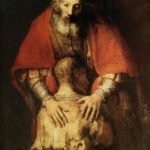
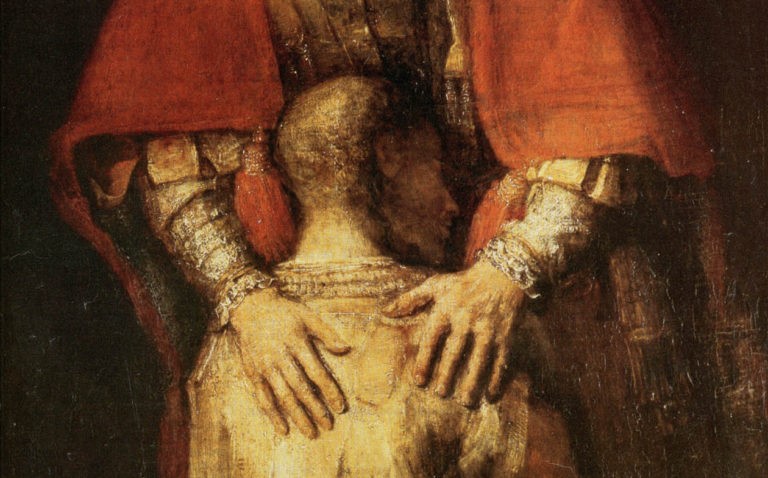
Rembrandt Harmenszoon van Rijn. Don’t count on me here to tell his story in a few lines! (*1) In any case, since the romantics, all, and nearly to much has been said and written about the rediscovered Dutch master of light inelegantly thrown into darkness by the barbarians of neo-classicism.
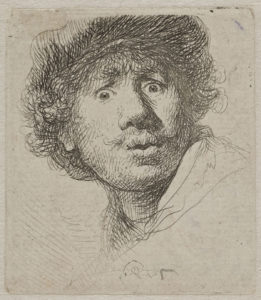
By Karel Vereycken, June 2001.
The uneasy task that imparts me here is like that of Apelles of Cos, the Greek painter who, when challenged, painted a line evermore thinner than the abysmal line painted by his rival. In order to draw that line, tracing the horizons of the political and philosophical battles who raged that epoch will unveil new and surprising angles throwing unusual light on the genius of our painter-philosopher.
First, we will show that Rembrandt (1606-1669) was « the painter of the Thirty years War » (1618-1648), a terrible continental conflict unfolding during a major part of his life, challenging his philosophical, religious and political commitment in favor of peace and unity of mankind.
Secondly, we will inquire into the origin of that commitment and worldview. Did Rembrandt met the person and ideas of the Czech humanist Jan Amos Komensky (« Comenius ») (1592-1670), one of the organizers of the revolt of Bohemia? This militant for peace, predecessor of Leibniz in the domain of pansophia (universal wisdom), traveled regularly to the Netherlands where he settled definitively in 1656. A strong communion of ideas seems to unite the painter with the great Moravian pedagogue.
Also, isn’t it astonishing that the treaties of Westphalia, who put an end to the atrocious war, are precisely based on the notions of repentance and pardon so dear to Comenius and sublimely evoked in Rembrandt’s art?
Finally, we will dramatize the subject matter by sketching the stark contrast opposing Rembrandt’s oeuvre with that of one of the major war propagandist: (Sir) Peter Paul Rubens (1577-1640).
Rembrandt, who finished rejecting any quest for earthly glory could not but paint his work away from that of the fashion-styled Flemish courtier painter. Moreover, Rubens was in high gear mobilizing all his virtuoso energy in support of the oligarchy whose Counter Reformation crusades and Jesuitical fanaticism were engulfing the continent with gallows, fire and innocent blood.
What Rembrandt advises us for his painting also applies to his life: if you stick your head to close to the canvass, the toxic odors will sharply irritate your nose and eyes. But taking some distance will permit you to discover sublime and unforgettable beauty.
What Art?
Since the triumph of Immanuel Kant‘s modernist thesis, the Critique of the Faculty of Judgment, it has not been « politically correct » to assert that art has a political dimension. And with good reason! If art can influence the course of history and shape it through its power, it is because it is a vector of ideas! An impossibility, according to the Kantian thesis, because art is a gratuitous act, free of everything, including meaning. The ultimate freedom! You either like it or you don’t, it’s all a matter of taste.
Following in the footsteps of the German poet Friedrich Schiller, we’re here to convince you otherwise, and abolish the tyranny of taste. For us, art is an eminently political act, although the work of art has nothing in common with a mere political manifesto, and the artist can in no way be reduced to an ordinary « activist ».
His domain, that of the poet, the musician or the visual artist, is to be a guide for mankind. To enable people to identify within themselves what makes them human, i.e. to strengthen that part of their soul, of their divine creativity, which places them entirely at the zenith of their responsibility for the whole of creation.
To achieve this, and we’ll develop this here, what counts in art is the type of conception of love it communicates. By making this « universal » sensitive, sublime art makes the most elevated conception of love accessible.
Such art, which forces us think, employs enigmas, ambiguities, metaphores and ironies to give us access to the idea beyond the visible. For art that limits itself to theatricality and the beauty of form fatally sinks into erotic, romantic love, depriving man of his humanity and therefore of his revolutionary power.
Rubens will be the ambassador of the great un-powers of his time: the glory of the empire and the magnificent financial strength of those days « new economy », the « tulip bubble ». In short, the oligarchy.
Rembrandt, in turn, will be the ambassador of the have-nots: the weak, the sick, the humiliated, the refugees; he will live in the image of the living Christ as the ambassador of humanity. It might seem strange to you to call such a man the « the painter of the thirty years war. »
Paradoxically, his historical period underscores the fact that very often mankind only wakes up and mobilizes its best resources for genius when confronted with the terrible menace of extinction. Today, when the Cheney’s, the Rumsfeld’s and the Kissinger’s want to plunge the world into a « post-Westphalian epoch », in reality a new dark age of « perpetual war », Rembrandt will be one of our powerful weapons of mass education.
Historical context and the origins of the war
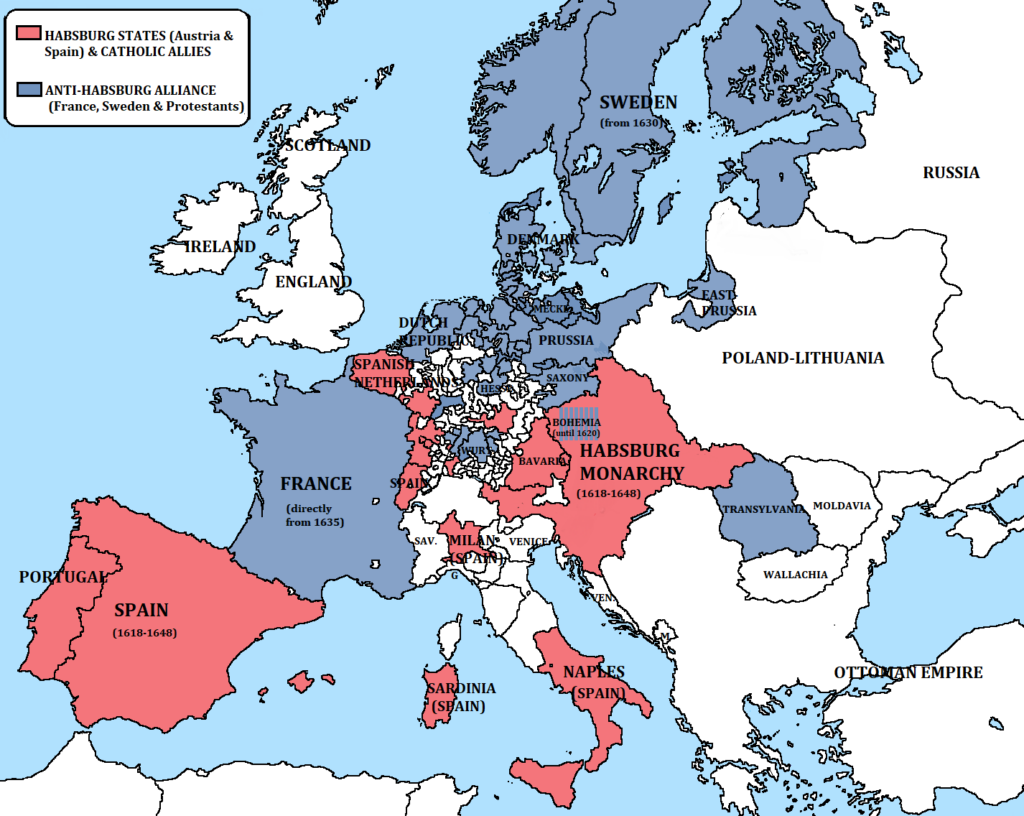
Before entering Rembrandt, it is indispensable to know what was at stake those days. The academic name « Thirty Years War » indicates only the last period of a far longer period of « religious » conflict which was taking place around the globe during the sixteenth century, mainly centered in central Europe, on the territory of today’s Germany.
While 1618 refers to the revolt of Bohemia, the 1648 peace of Westphalia defines a reality far beyond the apparent religious pretext: the utter ruin of the utopian imperial dream of Habsburg and the birth of modern Europe composed of nation-states (*2)
On the reasons for « religious » warfare, let us look at the first half of the sixteenth century. At the eighteen years long Council of Trent (1545-1563), the Roman Catholic Church discarded stubbornly all the wise advise given earlier to avoid all conflict by one of its most ardent, but most critical supporters: Erasmus of Rotterdam.
As Erasmus forewarned, by choosing as main adversary the radical anti-semite demagogue Martin Luther, the church degraded itself to sterile and intolerant dogmatism, opening each day new highways for « the Reformation ».
The religious power-sharing of the « Peace of Augsburg » of 1555, between Rome and the protestant princes, temporarily calmed down the situation, but the ambiguous terms of that treaty incorporated all the germs of the new conflicts to come. Note that « freedom of religion » meant above all « freedom of possession ». The « peace » solely applied to Catholics and Lutherans, authorizing both to possess churches and territories, while ostracizing all the others, very often abusively labeled « Calvinists ».
Playing diabolically on internal divisions, some evil Jesuits of those days set up Calvinists and Lutherans to combat each other bitterly, by claiming, for example in Germany, that Calvinism was illegal since not explicitly mentioned in the treaty. Furthermore, the citizen obtained no real freedom of religion; he was simply authorized to leave the country or adopt the confessions of his respective lord or prince, which in turn could freely choose.
As a result of a general climate of suspicion, the protestant princes created in 1608 the « Evangelical Union » under the direction of the palatine elector Frederic V. Their eyes and hopes were turned on King Henri IV‘s France, where the Edit of Nantes and other treaties had ended a far long era of religious wars. After Henry IV‘s assassination in 1610, the Evangelical Union forged an alliance with Sweden and England.
The answer of the Catholic side, was the formation in 1609 of a « Holy League » allied with Habsburg’s Spain by Maximilian of Bavaria. Beyond all the religious and political labels, a real war party is created on both sides and the heavy clouds carrying the coming tempest threw their menacing shadows on a sharply divided Europe.
1618: The Revolt of Bohemia
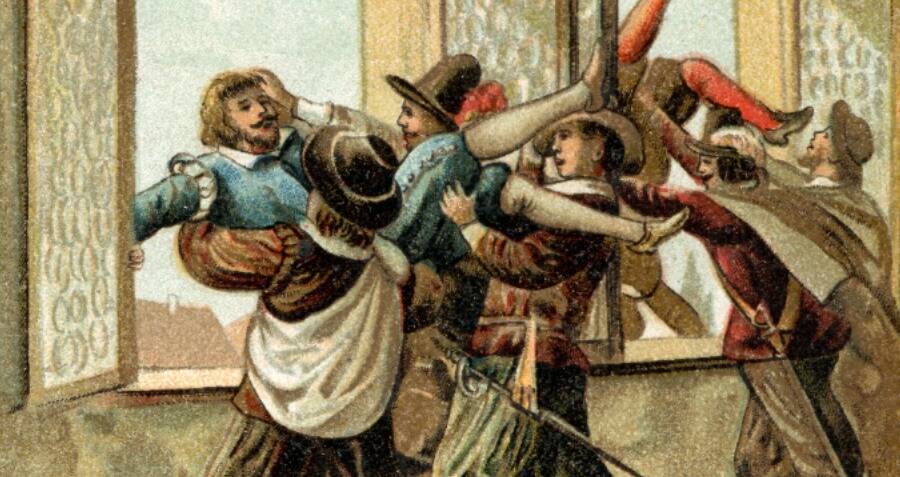
Hence, after the never-ending revolt of the Netherlands, the very idea of an insurrection of Bohemia drove the Habsburgs (and the slave trading Fugger and Welser banking empires controlling them) into total hysteria, since they felt the heath on their plans. If Bohemia would become « a new, but larger Holland », then many other nations, such as Poland, could join the Reformation camp and destabilize the imperial geopolitical power balance forever.
As from 1576, the crown of Bohemia was in the hands of the Catholic Rudolphe II, Holy Roman Emperor. Despite a far-fetched passion for esotericism, Rudolphe II will be the protector of astronomers Tycho Brahe and Johannes Kepler in Prague.
In 1609, the Protestants of Bohemia obtain from him a « Letter of Majesty » offering them certain rights in terms of religion. After his death in 1612, his brother Matthias, Holy Roman Emperor, became his successor and left the direction of the country to cardinal Melchior Klesl, a radical Counter Reformation militant refusing any application of the « letter of majesty ».
This set the conditions for the famous « defenestration of Prague », when two representatives of the imperial power were thrown out of the window and fall on a manure heap, at the end of hot diplomatic negotiations. That highly symbolical act was in reality the first signal for a general uprising, and following the early death of Matthias, the rebels made Frederic V their sovereign instead of accepting Habsburg’s choice.
Charles Zerotina, a protestant nobleman and Comenius, (see box below), a Moravian reverend and respected community leader, masterminded that revolt. Frederic V, for example was crowned in 1619 by Jan Cyrill, who was Zerotina’s confessor, and whose daughter will become Comenius wife.
The insurgents were defeated at the battle of White Mountain, close to Prague, in 1620 by a Catholic coalition, composed of Spanish troops pulled out of Flanders together with Maximilian’s Bavarians. On the scene: French philosopher René Descartes, who paid his own trip and who was part of the war coalition and joined in entering defeated Prague in search for Kepler’s astronomical instruments… (*3)
An arrest warrant immediately targeted Comenius, who escaped with Zerotina from bloody repression. Protestantism was forbidden and the Czech language replaced by German.
Most resistance leaders were arrested and 27 beheaded in public. Their heads were put up on pins and shown on the roof of Prague’s Saint-Charles bridge.
One of them was the famous Jan Jessenius, head of the University of Prague who performed one of Europe’s early public anatomical dissections in 1600 and was a close friend of Tycho Brahe. To warn those who used their speech to encourage « heresy », his tongue was pulled out before he was beheaded, quartered and impaled.
Thirty thousand people went into exile while Frederic V and his court took refuge in Den Haag in the Netherlands. There, but years before, Comenius had a personal encouter with the future « Winterkönig » and his wife Elisabeth Stuart, on their way back from their wedding in England for which Shakespeare had arranged a representation of « The Tempest ».
A World War
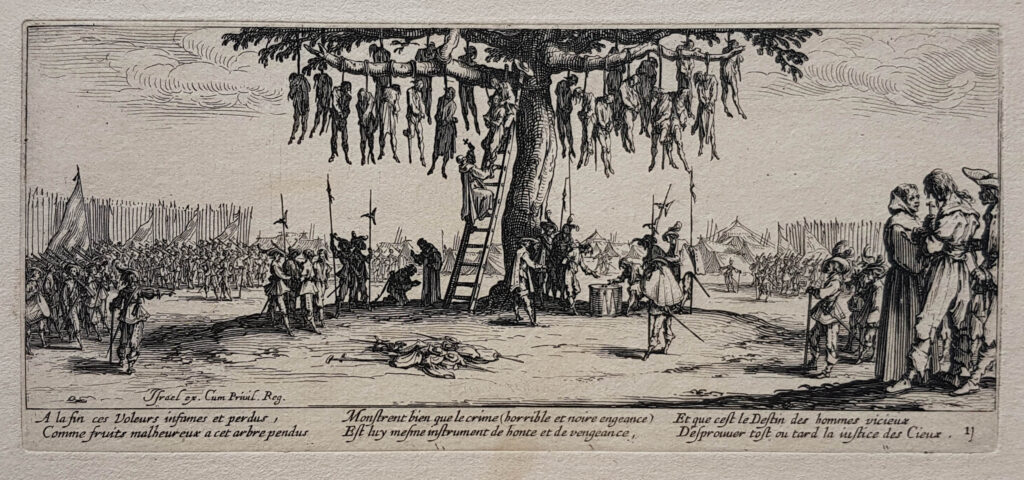
1618 marked the outbreak of an all-out war across Europe, provoked by the imperial drive of Habsburg to reunify all of the continent behind one unique emperor and one single religion.
As of 1625, aided by French and English financial facilities, Christian IV of Denmark and Gustave Adolphus of Sweden intervened on the northern flank against Habsburg descending from the north as far as up till Munich.
Then, France opened another flank on the western front in 1635. Catholic cardinal Richelieu, who defeated the Huguenots at LaRochelle in 1628 (since he « fought their political rights but not their religious ones », will heavily aid the Protestant camp. His fears were that,
« if the protestant party is completely in shambles, the offensive of the house of Austria will come down on France ».
The famous etchings of the Lorraine engraver Jacques Callot, « Misery and calamities of war » of 1633, give an idea how this savage war swept Europe with its cortège of misery, famine, epidemics and desolation.
The estimated population loss on the territory of present day Germany indicates a downturn from 15 to less than 10 million. Hundreds of cities were turned back into simple villages and thousands of communities simply disappeared from the map.
War affected all the colonies of those powers involved in the conflict. Dutch and English pirates would sink any Spanish or Portuguese ships encountered at the other edge of the Earth’s curve. For Spain, loyal pillar of Habsburg, 250 million ducats were spent for the war effort (between 1568 and 1654), despite the state bankruptcy of 1575. That amount represents more than the double of the revenue from the loot of the new world (gold, spices, slaves, etc.) which scarcely amounted only to 121 million ducats…
Rembrandt and Comenius
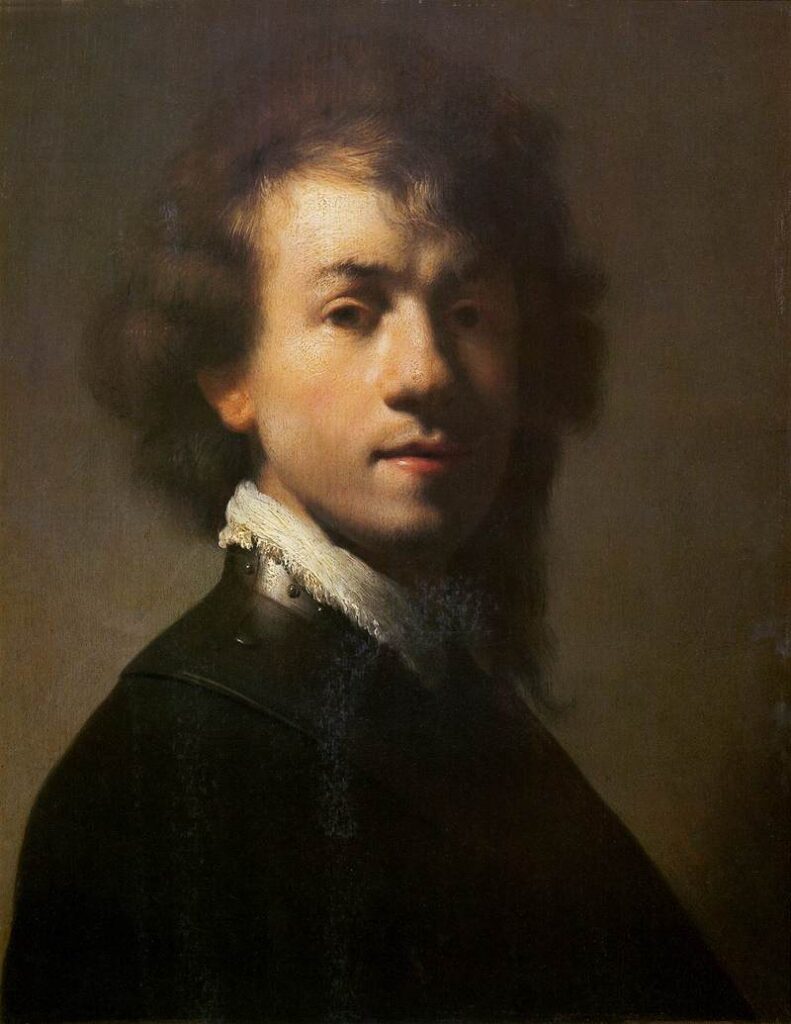
That the young Rembrandt was totally heckled by the situation of general war which was shaking up Europe is easily visible in the early self-portrait of Nuremberg.
Here he portrays himself divided between two choices. One shoulder reveals the gorget, a piece of armor that invokes the patriotic call for serving the nation calling on every young Dutchman of his generation in age of serving the military, especially after the surprise attack of the Spanish troops on Amersfoort of august 1629.
The other shoulder is nonchalantly caressed by a « liefdelok », the French « cadenette » or lovelock exhibited by amorous adolescents. What to choose? Love the nation, or the beloved?
More and more irritated by the ambitions of Constantijn Huygens, the powerful secretary of the stadholder which got him well-paid orders for the government and made him move from Leiden to Amsterdam, Rembrandt’s thinking and activity gets ever more concentrated and powerful.
Ten years later, the dying away of his wife Saskia in 1642, year of the « Night watch », plunges the painter into a deep personnal existential crisis. Gone, the self-portraits where he paints himself as an Italian courtier, with a glove in one hand carrying a heavy golden chain around his neck fronting for his social status and competing with the court. Suddenly he seems to realize that the totality of the world’s gold will never buy back the lost lives of those once loved.
When interrogated on the matter, Rembrandt would bluntly state he didn’t need to go to Italy, as the tradition used to be, since everything Italy ever produced came to him anyway as it was available in one form or another on the Amsterdam art market. But traveler he was, as drawings of the gates of London indicate, done in the early forties, maybe the year Comenius crossed the channel?
In 1644, the neo-Platonist rabbi and teacher of Spinoza, Menasseh Ben Israel, for which Rembrandt illustrated books, received a letter from Comenius agent John Dury, chaplain of Mary Princess of Orange, starting a discussion on the reintegration of the Jews in England, and Menasseh finally went for negotiations to meet Cromwell in 1655.
The Nightly Conspiracy
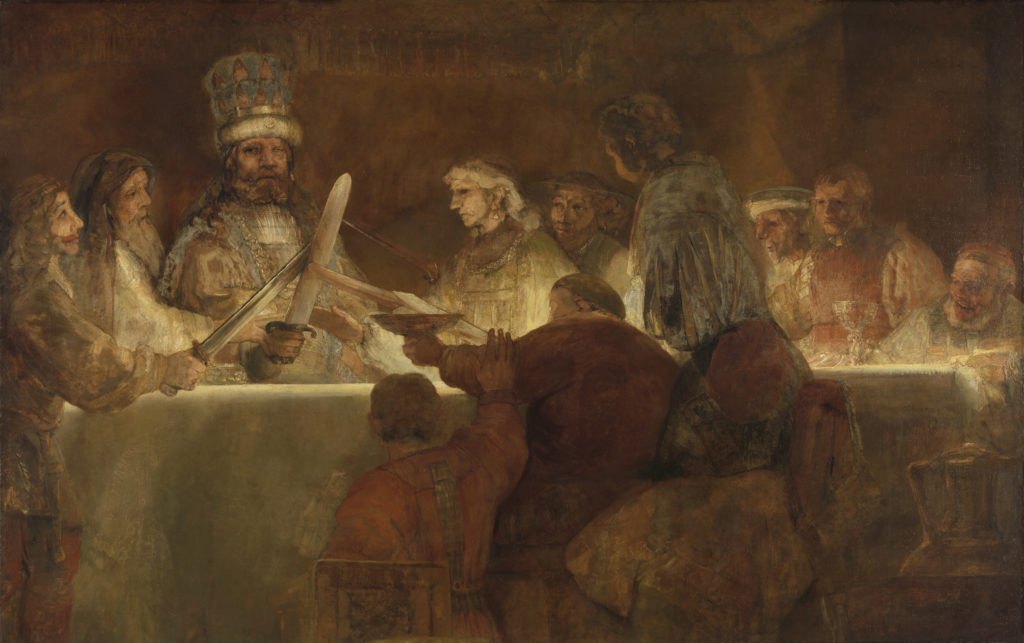
Although some timid hypothesis’ exists concerning Comenius‘ influence on Rembrandt, a rigorous historian’s research could certainly bring more light on this matter.
Although Rembrandt’s worldview evolved in an environment of the Mennonite community, peace-loving Anabaptists miles away from any political commitment, Rembrandt’s passion for the « cause of Bohemia » seems particularly striking in « The nightly conspiracy of Claudius Civilus at the Schakerbos ».
The large painting figured as one in a series planned to decorate the new Amsterdam city hall to celebrate the revolt of the Batavians against the Romans. Starting from historical elements of Tacitus, the story had been cooked up to warm up Dutch patriotism since the reference to Spanish tyranny was clear to all. For reasons unknown today, Rembrandt’s painting was taken down after a couple of months. To mock the cowardice of the ruling elites, Rembrandt seems to have transposed the historical scene into his present timeframe.
One Swedish historian thinks that the leader of the conspiracy here is not Claudius Civilis (the Batavian general who lost an eye in battle), but another general who equally lost an eye in battle and which was non-other than the Hussite general Jan Zizka! (*4).
Remember that Comenius and the revolt of Bohemia strongly identified with John Huss. Looking closely makes you discover that Rembrandt’s Claudius Civilis is indeed dressed up in central European costume. From left to right one sees first a Dutch patrician. Is this a portrait of the then rising republican Jan De Wit?
Next, one sees a monk, without weapons, who poses his hand on Civilus’ arm in a conspiratorial gesture. Is this Comenius resistance movement, the Unity of the Brethren?
According to the historians, the two chalices, one wide, the other narrow, could signify the « Eucharist under the two species », namely that bread and wine be shared with all, which happened to be one of the demands of the Jan Hus tradition.
One also can identify a Jew or rabbi taking place in the conspiracy. Looks pretty weird for a simple Batavian conspiracy! That the establishment was unhappy to see their hero painted as an ugly Cyclops seems probable.
But to be challenged in their flight forward into pompous fantasy in stead of taking up the urgent tasks of their time was another one.
King of Swedish Steel, Louis De Geer

Comenius arrives in Amsterdam on invitation of the de Geer family in 1656, the year of Rembrandt’s bankruptcy (*5).
Louis de Geer, alias « the Steel King » and his son Laurent were the life-long protectors of Comenius for whom they paid the funeral and even build a chapel in the city of Naarden, some miles outside Amsterdam.
Originally from Luik (Liège) in today’s Belgium, that uncompromising Calvinist family settled in Amsterdam. It was the de Geer family who led the foundations of Sweden’s industrial flowering of iron, steel and copper . To do this, de Geer brought three hundred families of Walloon steelworkers to Sweden, and for whom he build hospitals, schools, housing projects and commercial facilities.
De Geer also financed the scottish preacher John Dury and the « intelligencer » Samuel Hartlib, two active friends of Comenius in England. At war with the Royal Society and Francis Bacon, they wanted to render scientific knowledge available to all of the population.
John Milton’s treatise On Education was dedicated to the same Samuel Hartlib. Louis de Geer and Sweden’s prime Minister Johan Skytte, realized Comenius education projects were the best of all possible investment to foster the physical economy. His educational reforms created a labor force of such an exceptional quality and astonishing productivity, that they warmly invited him to Sweden and asked him to reform the nation’s educational system.
That relationship of Comenius with the de Geer family leads us to Rembrandt, since Louis de Geer’s sister, Marghareta, and her husband Jacob Trip, one of the major shareholders of the Swedish copper mines, had their portrait done by Rembrandt, offering him a well paid order during very difficult years.
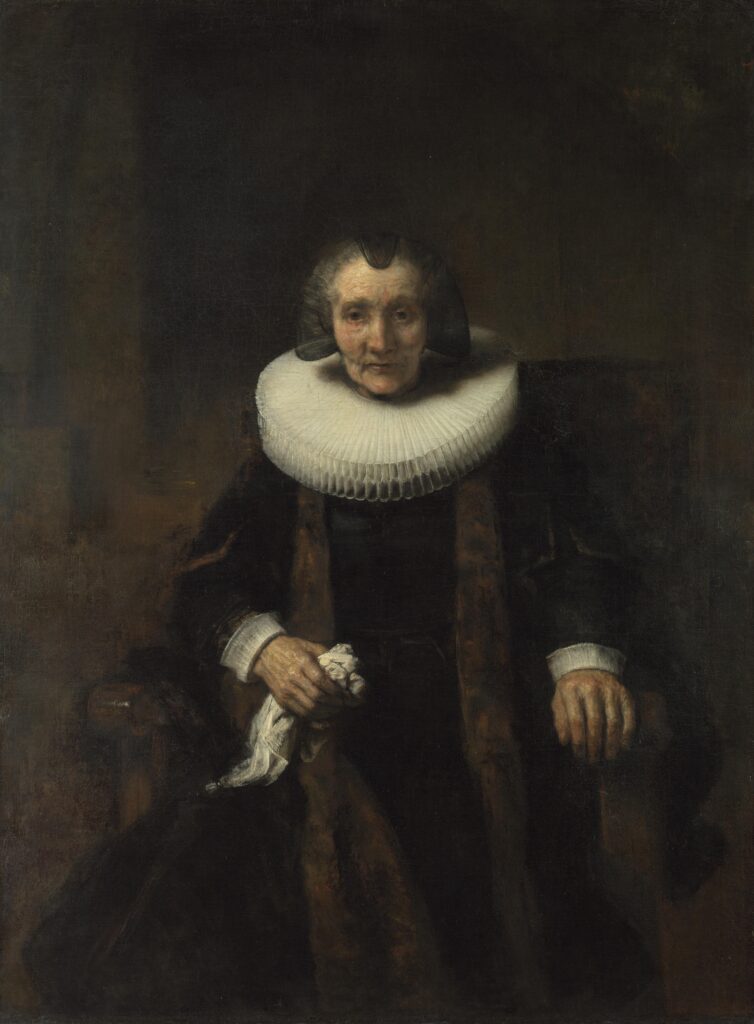
The City of Amsterdam allotted Comenius a yearly pension, encouraged him to publish his complete works on pedagogy and offered him the keys of the city library. Comenius brought over his family and assistants and installed a library and a printing shop behind the Westerkerk where Rembrandt will be buried.
Comenius, when going every day from his house to his printing shop crossed the street where Rembrandt lived his last days. Since early this century, Czech curators got convinced that Rembrandt’s Portrait of an old man at the Uffizi Gallery in Florence, is in reality a portrait of Comenius (*6).

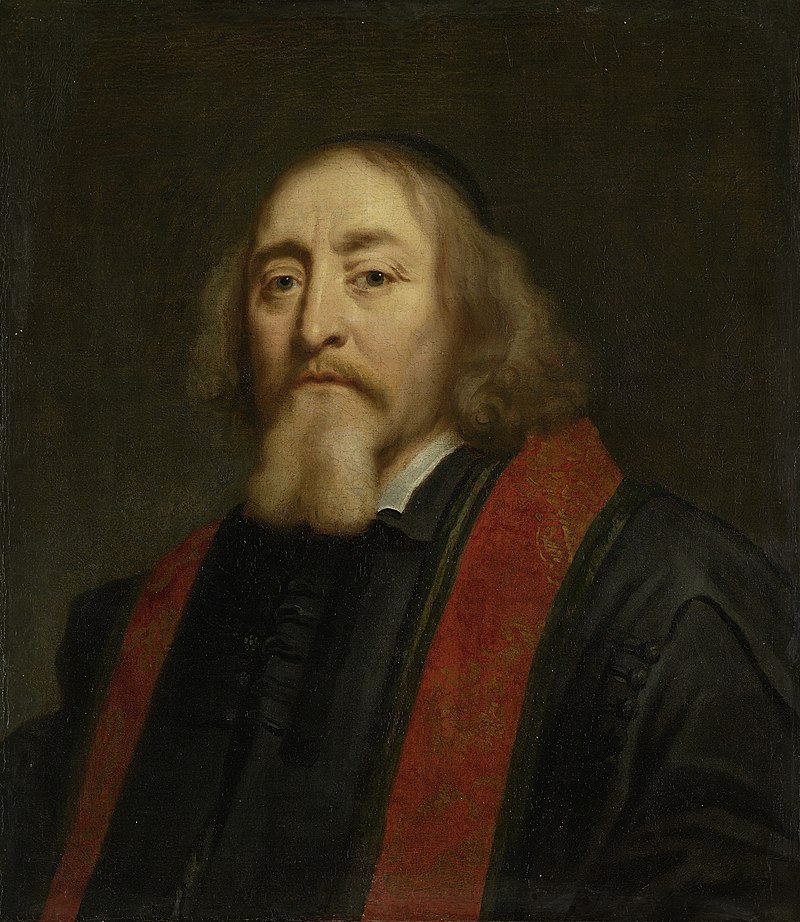
True or not, one has to realize that Rembrandt demanded to each of his models to sit each day for four hours over a period of three months to paint their portrait, a thing maybe not so evident for the aging Comenius.
But what is known with certainty is the fact that one of Rembrandt’s pupils, Juriaen Ovens, painted Comenius portrait during that period.
The Peace of Westphalia and the « Via Lucis »

Although Bohemia did not gain its long-desired independence at the peace of Westphalia, one cannot underestimate Comenius influence on the negotiations leading to the establishment of the peace-treaty. His work, Cesta Pokoje (Road to peace) of 1630, written in Czech is described as,
« an ethical-religious writing in which love, faith and mutual comprehension are established as the single ethical foundations of a possible peace ».

From 1641 to 1642, right before the start of the first peace negotiations, Comenius wrote the Via Lucis (The path of light), which could have been used as a guiding memorandum for the negotiators.
At the question if this Via Lucis was a millenarist mystical vision, as has been often pretended, we can consider the following.
Asked what could be hoped for and when a major change could take place, Comenius answered that the hope would come with the arrival of a time where the Gospel of the Kingdom would be preached all over the world and universal peace established.
That change could arise as the result of the emergence of a light to which will turn not only the Christian, but all the people of the world.
That light will come, « from the combination of the lanterns of human conscience, of a rational consideration of the works of God or of nature, and from the law or divine will ».
For him, « human enterprise can, through prayer and considerations of pious men imagine the possible ways to unite these rays of light, to irradiate them on the entirety of the human species and to spill similar thoughts in the minds of others » (*7).
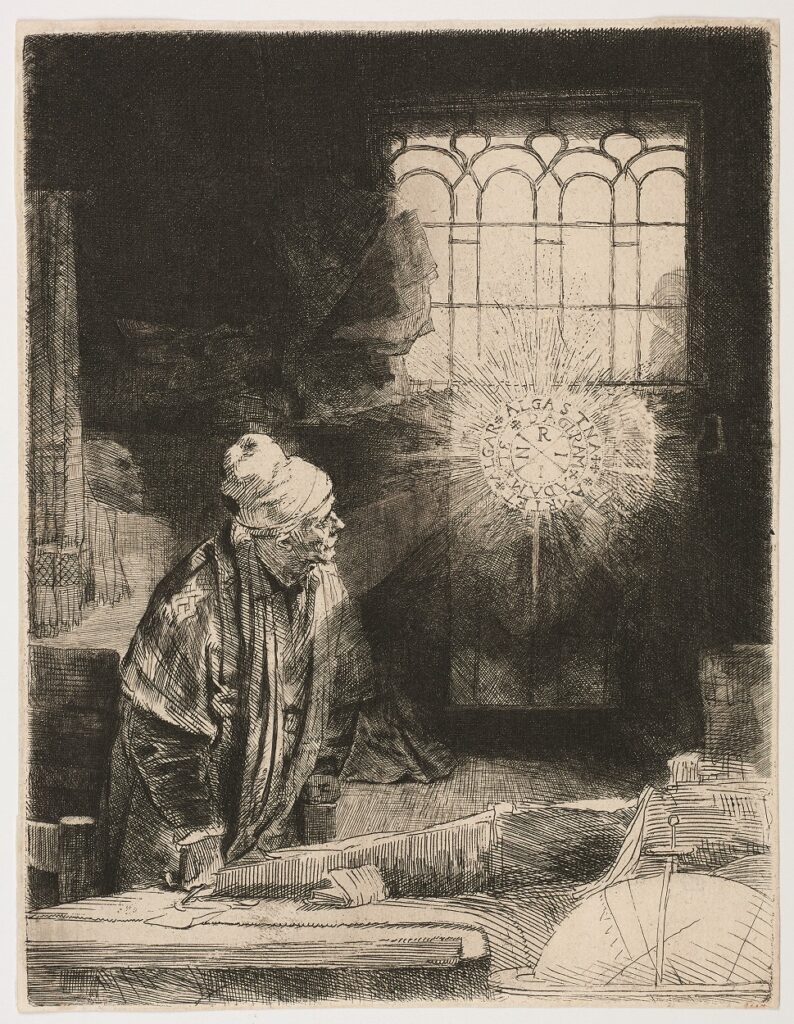
One identifies exactly that concept in an etching of Rembrandt that Goethe awkwardly used by having it copied as frontispiece for his Faust in 1790 (*8).
The subject here is not at all a man going along to get along with the devil, but light (mirror of Christ) enlightening the life and the mind of the mortals. Way before Voltaire and opposed to the Venetian illuminati, Comenius and Rembrandt made own the metaphor of light.
To get an even more precise idea of Comenius demands for peace, one can read another memorandum called Angelus Pacis (The peace-angel),
« send to the English and Dutch peace Ambassadors at Breda, a writing designated to be sent afterwards to all the Christians of Europe and then to all the nations of the world in order to stop them, that they cease fighting each other ».
Comenius first remarks laconically that England and Holland are morally so degraded that they even don’t need some spiritual difference as a pretext, but fight each other for purely material possessions! As a way out, he proposes a new friendship:
« But how do you conceive that new friendship (or rather reestablishment of your friendship)? Will it be not by the general pardon that you will allow each other? The wise men have always seen the oblivion of received injuries as the surest road leading to peace. Touching too rudely the wounds, is to revivify the pains and to furnish the wounds an occasion for irritation.
« When this is true, it would be to be wished that the river Aa, whose tranquil waters irrigate Breda, would turn for this hour into the river Lethe of which the poets tell us that whoever drinks their water forgets everything of the past.
« The one who is guilty of trouble, God will find him, even when men, for love of peace, spare him. That the just one starts accusing himself; that means that the one whose conscience accuses him of having broken the friendship and witnessed enmity, should, according to justice, be the first one and the most ardent to reestablish friendship. If the offended party neglects that duty of justice, it will be the honor of the offended party to assume that honorable role, according to the word of the philosopher. » (*9)
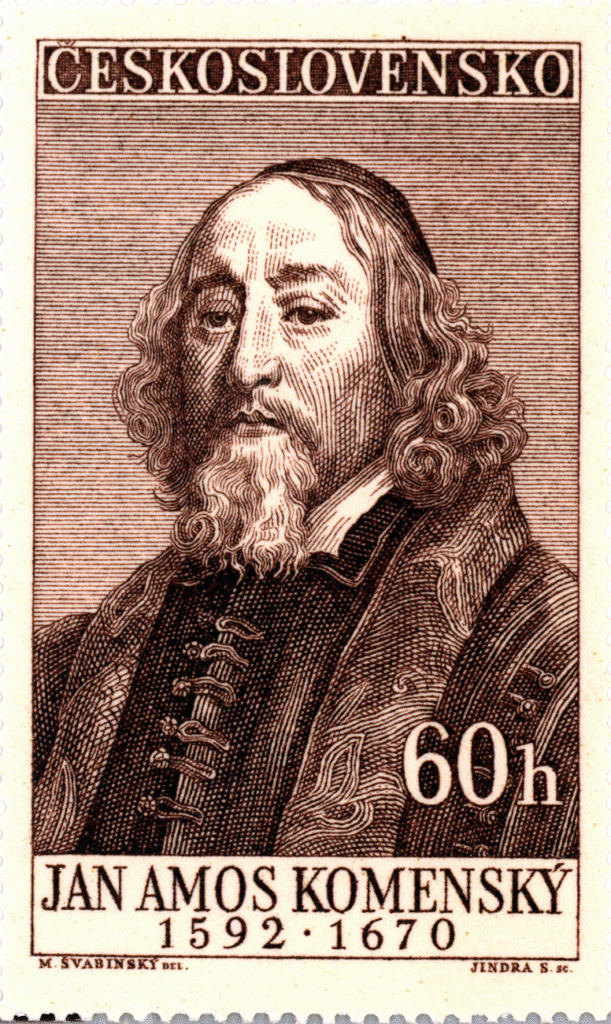
COMENIUS: TEACH EVERYTHING TO ALL AND EVERYONE
Jan Amos Komensky (« Comenius ») (1592-1670) was above all a militant teacher, practicing « the universal art of teaching everything to everybody » (pan-sophia) and reckless source of inspiring enthusiasm.
One year after his death in 1670, Leibniz wrote of him: « time will come, Comenius, that honors will be offered to your works, to your hopes and even to the objects of your desires ».
In some domains, indeed, Comenius was Leibniz‘s precursor. First, he fought the fossilization of thought resulting from the dominant Aristotelianism: « Little time after that unification between Christ and Aristotle, the church fell into a pitiable state and became filled with the uproar of theological dispute ».
Strong defender of the free will that he didn’t see entirely in contradiction with an Augustinianconcept of predestination, he felt closer to John Huss than to Calvin, while generally labeled a « Calvinist » by historians.
In 1608, Comenius enters the Latin School of Prérov (Moravia), a school reorganized at the demand of Charles Zerotina on the model of the Calvinist school of Sankt-Gall in Switzerland. Zerotina was one of the key figures of the Bohemian nobility, promoter of the Church of Unity of Brethren, organizer of popular education and key leader of the international anti-Habsburg resistance. For example, in 1589 he lends a considerable amount of money to the French King Henri IV, which he meets in Rouen, France, in 1593 in support of ending the religious wars with the the Spanish.
Henri IV’s conversion to Catholicism (« Paris is worth a mass ») ruined Zerotina’s hope to reproach the Unity of Brethren with the French Huguenots. Befriended with Theodore de Bèze, which he met regularly when studying in Basel and Geneva, Zerotina sent Comenius to study at the Herborn University in Nassau. That University was founded in 1584 by Louis of Nassau, brother of William the Silent, the leader of the revolt of the Netherlands against Habsburg’s Spain. Louis of Nassau, a key international coordinator of the revolt was in permanent contact with the humanist Huguenot leader Gaspard de Coligny in France and with Walsingham, the chancellor of England’s Queen Elisabeth Ist.
Together with Zerotina, Comenius unleashed the revolt of Bohemia of 1618. After spending some time with the guerrilla forces for which he drew a map of Moravia, Comenius went into exile, as bishop of his church, the « Unity Brethren of Bohemia ».
Till his death, he was the soul of the Bohemian resistance, the gray eminence of the Diaspora and the guardian that prevented the Czech language from disappearing, since it was replaced by German in Bohemia. Since wars are only possible if large parts of the population remain uneducated, for Comenius education became the leading edge to fight for Peace.
Opposed to the Jesuit educators who consolidated their own power by education the elites only, Comenius, starting from his conviction that every individual is made in the living image of God, elaborated with great passion a very high level curriculum, which he wanted accessible to all, as he develops this in his « The Great Didactic » (1638).
Following the advice of Erasmus and Vivès, Comenius abolishes corporal punishment and decides to bring boys and girls in the same class. With him, a school needs to be available in every village, free of cost and open to everybody.
Breaking the division between intellectual and manual work, the schools were part-time technical workshops, anticipating France’s Ecole Polytechnique and the Arts et Metiers (technical school to perfect working people), completely oriented towards the joy of discovery. Leibniz idea of academies originated in Comenius’ schools and societies of friends.
For him, as for Leibniz, the body of physics couldn’t walk without the legs of metaphysics. Integrating that transcendence, he strongly rejected the very idea that nature was reducible to a mere aggregate defined by formal laws, and he adamantly lambasted Bacon, Galileo and Descartes for doing so. In stead, nature has to be looked to as a dynamic process defined by the becoming. That becoming is not repetitive, but permanent progression and potentialization: nature has a quality of development, tending towards self-accomplishment and harmony.
He was severely attacked by Descartes’ « Judgment of the Pansophical works » and mocked by Voltaire, who made him appear as Candide‘s naive philosophy teacher « Pangloss ».
Founder of modern pedagogy, he realized children are beings of affection, before becoming beings of reason. Up till those days, ignorant children were often seen as possessed by the devil, a devil which had to be beaten out of them. The French cardinal Pierre de Bérulle, founder of the Oratorians, reflected that mindset when he wrote that « infancy is the most vile and abject state of man’s nature after that of death ».
To make knowledge accessible to all, Comenius revolutionized the dogmas of that educational approach. In well-ordered classrooms, beautifully decorated with maps, classes would last only one hour covering all the domains one fiends in an engraving of Comenius: theology, manual works, music, astronomy, geometry, botany, printing, construction, painting and sculpture.
Comenius taught Latin, but was strongly convinced that every pupil had to master first his mother tongue. That was a total revolution, since up till then, Latin was taught in Latin, and to bad for those who didn’t understand already !
He also will also re-introduce illustrated textbooks (« The sensible world in images »)(1653), which had been stupidly banned from schools to « not invite the senses to disturb the intellect ». For Comenius, images have the same role as a telescope, displacing the field of perception beyond immediate limits.
His ideas, and especially the rapid successes of schools adopting his pedagogy attracted all of Europe and beyond. In 1642, Comenius was hired by Johan Skytte, the influential chancellor of the University of Uppsala, to reorganize the Swedish education system according to his principles. Skytte, an erudite Platonist inspired by Erasmus, will be Gustaphe Adolph’s preceptor and his son Bengt Skytte will be an influential teacher of Leibniz.
Before that job, Comenius discarded a similar offer originating from Richelieu of France and the offer that came from John Winthrop Junior from the United States who offered Comenius to preside Harvard University, newly founded in the Massachussetts Bay Colony of America.
Rembrandt and Forgiveness
To express in art that precise moment where love gives birth to pardon and repentance will be precisely one of Rembrandt’s favorite subjects. The fact that he choose the name Titus for his son, after the roman emperor who supposedly had showed great clemency toward the early Christians, demonstrates that point. But Titus was also the name of a bishop of Creta who was a close collaborator of Apostle Paul.
Rembrandt was fascinated by the figure of Saint-Paul, who used to be after all a roman officer who, through his conversion, showed the possible transformation of each individual for the better, capable of becoming a militant for the good.

Rembrandt’s self-portrait of the Rijksmuseum, with the famous « ghost-image » of a badly lit dagger nearly planted his breast supposedly represent him as Saint-Paul, traditionally represented defending Christian faith with the scripture in one hand and the sword in the other.
The bible in the armored hand do appear in that painting, but the sword here seems more as a dagger, suggesting an eventual reference to the name given by Erasmus to his Christian’s manual, the « Enchiridion » after the Greek word egkheiridion (dagger).
The Prodigal Son
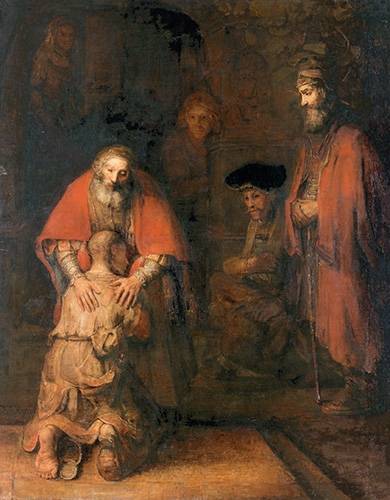
In one of Rembrandt’s late works, the « Return of the prodigal son », despite the fact that the work was completed by a pupil, we see how profoundly he dealt with precisely that subject. The expressiveness of the figures is amplified by the nearly life-size representation on the wide canvas (262 x 205 cm).
The father’s eyes, plunged in interior vision, look yonder the small passage by which the son hasarrived, as doubting of the happiness that overwhelms him, since his son « who was dead », « came back to life ».
The son, who installs his convicts head on the father’s abdomen, engages in the act of total repentance. The naked foot who leaves behind the rotten shoe, communicates in a metaphorical way that sinners deed of repentance, offering what he has inside. The father embraces his son by putting his pardoning hands on his shoulders, while the jealous brothers stand by wondering and enraged why so much love is given to the son « who had spoiled the fathers good with prostitutes ».
Three observations indicate Comenius person and thought might have inspired this work.
First, according to all available portraits, the face of the father shows heavy resemblance with the treats of Comenius himself, a well known militant for peace based on repentance and pardon which Rembrandt probably met frequently during that period.
Second, and after a second look, the son doesn’t look European at all, but actually Negroid, which would add to the painting some critical thoughts on the widely practiced slavery of the European powers of those days.
To conclude, one could interpret the parable of the prodigal son in a much larger sense: is this not man itself, son of God, who returns to his father after having wandered on the roads of sin? Comenius, after a moment of nearly total desperation uses that same image in his book The labyrinth of the world and the paradise of the hearth (1623).
Similar to the image employed by the Dutch painter Hieronymous Bosch, in his « ambulant salesman », man gets lost in the multiplicity of the world that leads him to self-destruction, but after a crisis decides to regain divine unity.
In order to add still another dimension to the discussion on the quality of love involved in art, it is useful to contrast our master with the works of the most talented belonging to the tradition of his detractors: Peter-Paul Rubens.
Rembrandt, Rubens and other Philistines
But before investigating Rubens, it is appropriate to consider the following. Despite the fact that Rembrandt came out of the immense intellectual ferment of the late sixteenth century University of Leiden, one of the cradle’s of humanism, one cannot escape the fact that his lashing career would have infatuated many.
Remember, Constantijn Huygens « discovered Rembrandt » in 1629, while still a young millers son running a small boutique with Jan Lievens, asking them to come to Amsterdam and work for the government. (*10).
Rembrandt’s « patron » nevertheless would write without blushing in his diary Mijn Jeugd (my youth) that Peter Paul Rubens, the Flemish baroque painter was « one of the seven marvels of the world ».
Rubens was, before everything else, the talented standard bearer of the « enemy » Counterreformation and its Jesuits army, whose admiration made Rembrandt totally uncomfortable. How could this virtuoso painter be seen as the brightest star on the firmament of painting? According to some, Huygens was looking for « a Dutch Rubens », capable of making shine the « elites » of the nation.
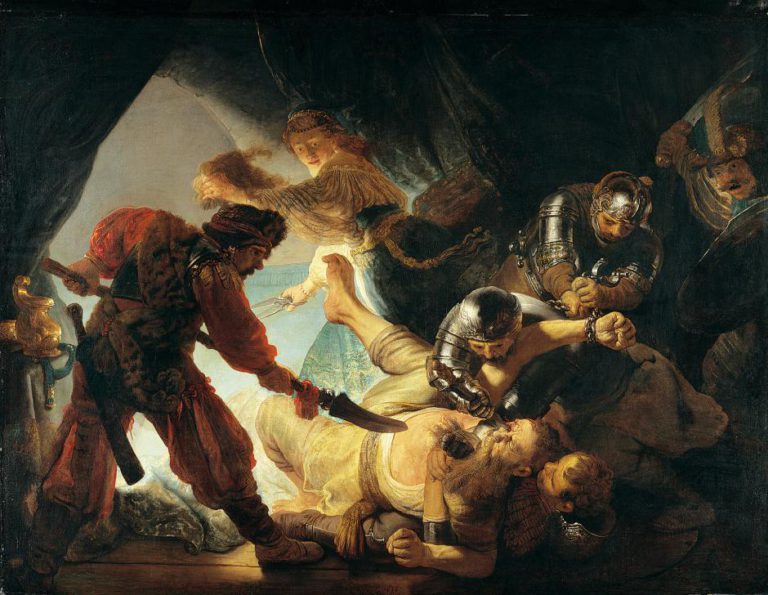
Rembrandt at one point got so irritated with Huygens’ shortsightedness that he
offered him a large painting called Samson blinded by the Philistines. The work, a pastiche of the violent style, painted « à la Rubens », shows roman soldiers gouging out Samson’s eye with a dagger. Did Rembrandt suggest that his Republic (the strong giant) and its representatives were blinded by their own philistinism?
When a little Page becomes a great Leporello
Rembrandt perfectly translates the feeling of revulsion any honest Dutch patriot would have felt in front of Rubens. Had the Dutch elites already forgotten that Peter Paul’s father, Jan Rubens, once a Calvinist city councilor of Antwerp close to the leadership of the revolt of the Netherlands, had severely damaged the integrity of the father of the fatherland by engaging in an extra-conjugal relationship with Anna of Saxen, the unstable spouse of William the Silent?
Humiliated, but with courage and determination, Rubens mother fought as a lioness to free her husband from an uncertain jail. Her son Peter Paul, could not but become the calculated instrument of vengeance against the protestants and an indispensable tool to do away the blame hanging over the family. Hence, at the age of twelve, Peter Paul was sent to the special college of Romualdus Verdonck, a private school specifically designed to train the shock troops of the Counterreformation.
From there on, Rubens becomes a pageboy at the little court of Marguerite de Ligne, countess de Lalaing at Oudenaarde, whose descendants still form the Royal blood of today’s Belgium. As a kid, Rubens copied the biblical images of the woodprints of Holbein and the Swiss engraver Tobias Stimmer. After two waves of iconoclasm (1566 and 1581), the Counterreformation was very eager to recruit image-makers of all kinds, but under strict regulations specified by the final session of the Council of Trent in 1563. (*12).
After a short training by Abraham van Noort, Rubens career was boosted by his entering of the workshop of Otto van Veen. Born in Leiden in 1556 and trained by the Jesuits, « Venius » was the pupil of the master-courtier Federico Zuccari in Rome. Zuccari was the court painter of Habsburg’s Philippe II of Spain and the founder of the « Accademia di San Luca ». Traveling from court to court, Venius succeeded in getting the favors of Alexander Farnèse, the malign Spanish governor in charge of occupying Flanders.
Farnèse, who actually organized the successful assassination of the father of the Netherlands, the erasmian humanist William the Silent in 1584, nominated Venius as his court painter and as engineer of the Royal armies.
Furthermore, Venius will be the man who opened Rubens mind on Antiquity and together they will read and comment classical authors in Latin. Especially, he will show Rubens that an artist, if he wants to attain glory during his lifetime, must appeal a little bit to his talent and a very much to the powerful.
In Italia
In may 1600, Rubens rides his horse to Venice. In June, during Carnival he encounters the Duke of Mantua, Vincent of Gonzague, who is the cousin of archduke Albert who is ruling then Flanders with Isabella since 1598.
The duke of Mantua, the oligarchic type Mozart portrays in his « Don Giovanni » and Verdi explicitly in « Rigoletto », was very fond at the idea to add a « fiamminghi » to his stable.
The court of Mantua, in a competition of magnificence with other courts, notably those of Milan, Florence or Ferrare, employed once the painter Mantegna, the architect Leon Battista Alberti and the codifier of courtly manners Baldassare Castiglione. At the times of Rubens, the court paid the living of poet Torquato Tasso and the composer Monteverdi which wrote in Mantua his « Orpheus » and « Ariane » in 1601.
Galileo was also one of the guests for a short period in 1606. But especially, the Duke had in his possession one of the largest collections of works of art of that period, and his agents in Italy and all over the world were in charge of identifying new works worth becoming part of the collection.

An inventory of 1629 lists three Titian’s, two Raphael’s, one Veronese, one Tintoretto, eleven Giulio Romano’s, three Mantegna’s, two Corregia’s and one Andrea del Sarto amidst others. Similar to Giulio Romano who became the mere instrument of the « scourge of the princes » Pietro Aretino, our Flemish painter became just another Leporello, an obligingly « valet » enslaved by the Duke.
When we look to his self-portrait with his Circle of friends in Mantua, we see a fearful man, who « became somebody » because surrounded by « people who made it » and recognized by the powerful.
In Espagna
Immediately the Duke gave Rubens a truly Herculean task: transport a quite sophisticated present to Philippe III and his prime minister the Duke of Lerma from Mantua to Madrid. On top of a little chariot specially designed for hunting and several boxes of perfume, the core of the present consisted of not less then forty copies of the best paintings of the Duke’s private collection, notably some Raphael‘s and Titians. On top, Rubens’ mission was « to paint the fanciest women of Spain » during his trip. While his patron in Mantua whines for his return, Rubens will deploy his seductive capabilities at the Spanish court which looked far more promising to his career.
Back in Italy, his immediate going to Rome seems an opportune move, since in these days Barocci was held for to old, Guido Reni for to young. Also, Annibale Carracci appeared out of order since suffering from melancholic apoplexies while Caravagio, accused of murder, was hiding on the properties of his patrons, the Colonna’s.
But essentially, Rubens goes to the holy city because he’s enthusiastically promoted there by the Genovese cardinal Giacoma Serra, very impressed by the « splendid portraits » of women Rubens painted for the Spinola-Doria dynasty in Genoa.
Nevertheless, hearing about the imminent death of his mother, Rubens rushes to Antwerp, and after much a hesitation settles his workshop there, far at a distance from the centers of power, but close to the fabulous privileges he obtains from the Spanish regents over the Netherlands, Albrecht and Isabella.
In Antwerpia
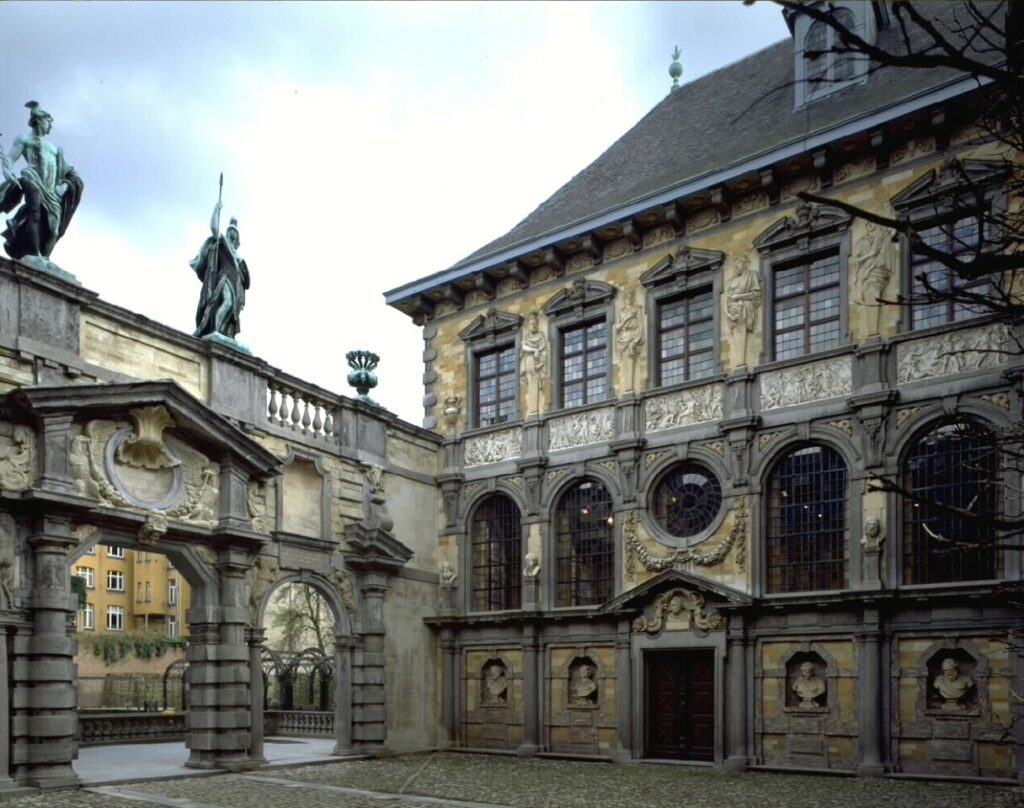
These advantages were such that conspiracy-theorist see them as sufficient proof that there was a blueprint to kill the soul of the Erasmian spirit in Christian painting in the region.
First, Rubens will receive 500 guilders per year without any obligation concerning his artistic output except the double portrait of the rulers, any supplementary order necessitating separate payment.
Next, Rubens obtains a status permitting him to bypass the regulations and obligations of the Saint-Luc painters guild, particularly the rule that limits the number of pupils and the amount of their salary. And since a lot is never enough, Rubens obtains a tax-exemption status in Antwerp! As a real patrician he orders the building of his palace.
Broken down long time ago, and for whatever reasons, one has to observe that it was during the times of Flemish collaboration with Hitler’s Germany (from 1938 to 1946) that his Genovese modeled resort, temporarily recreated in 1910 for the Universal Exposition in Brussels, will be entirely rebuild after the engravings of Jacobus Harrewijn of 1692, decorated as the original and the interior filled with fitting old furniture (*14).
It is true that his enthusiasm for opulent blondes and violent action was interpreted by Nazi historians as the expression of profound sympathy for the Nordic races, while his visual energy was seen as the antithesis of « degenerated » art. The Rubens cult in Antwerp might tell us something interesting about the recurrent rise of rightwing extremism in that city.
Propaganda Genius
Rubens feat was to « merchandize » the ruling taste of the oligarchy of his time. Similar to the German filmmaker Leni Riefenstahl under Hitler, Rubens became the genial producer of their propaganda. Precocious child and brilliant draughtsman, he had spent hours and hours working after Italian collections and bas-reliefs in the ruins of Rome.
Since the « Warrior-pope » Julius II and Leo X took over the Vatican, art had to submit to the dictatorship of the degenerated taste of imperial Rome. Eight years of work, from 1600 to 1608, in Genoa, Mantua, Florence, Rome, without forgetting Madrid, with free access to nearly all the great collections of antiquities and paintings of the old families, enabled Rubens to constitute a « data-base », whose fructification will generate the bulk of his fortune.
Specialists do point easily to the unending stream of visual quotes identified in his works. A group of Michelangelo in « The Baptism of Christ » (Koninklijk Museum voor Schone Kunsten, Antwerp); a pose of Raphael’s Aristotle in the School of Athens in his « St-Gregory with St-Domitilla, St-Maurus and Papianus » (Gemäldegalerie, Berlin) or one of his Madonna’s in « The fall of man » (Rubenshuis, Antwerp), without forgetting a head of the Laocone in the « Elevation of the Cross » (Cathedral, Antwerp) or the « contraposto » of a Venus coming straight away from a roman statuary in « The union of Earth and Water » (Hermitage, Saint-Petersburg). (*11).
The Tulip, Seneca plus Ultra
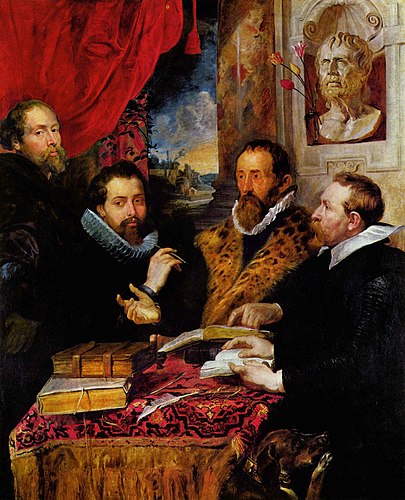
The desire to be accepted by the ruling oligarchs becomes even clearer when we discover his admiration for Seneca.
Through his education and under the influence of his brother Philippe, Peter Paul Rubens will become a fanatical follower of the Roman neo-stoic Seneca (4 BC – 65 AC). In his painting The four philosophers, Rubens paints himself standing, once again « on the map » with those who got a chair at the table.
With a view on the palatine hill in the background, site of the Apollo cult considered the authentic Rome, we see his brother Philippe, a renowned jurist, sitting across the leading stoic ideologue of those days, Justus Lipsius and his pupil Wowerius, all situated beneath a niche filled with a bust of Seneca honored by a vase with four tulips, two of them closed, and the other two opened.
Originally from Persia, the tulip bulb was brought from Turkey to Europe by an Antwerp diplomat in 1560. Its culture degenerated rapidly from a hobby for gentleman-botanist into the immense collective folly known as the Tulip Mania and « tulip-bubble » or « Windhandel » (wind-trade).

That gigantic speculative bubble bursted in Haarlem on February 2, 1637, while some days earlier, a tulip with the name of « vice-roy » went for 2500 guilders, paid in real goods being two units of wheat and four of rye, four fat calves, eight pigs, a dozen of sheep, two barrels of wine, four tons of butter, a thousand pounds of cheese, a bed and a silver kettle drum (*14).
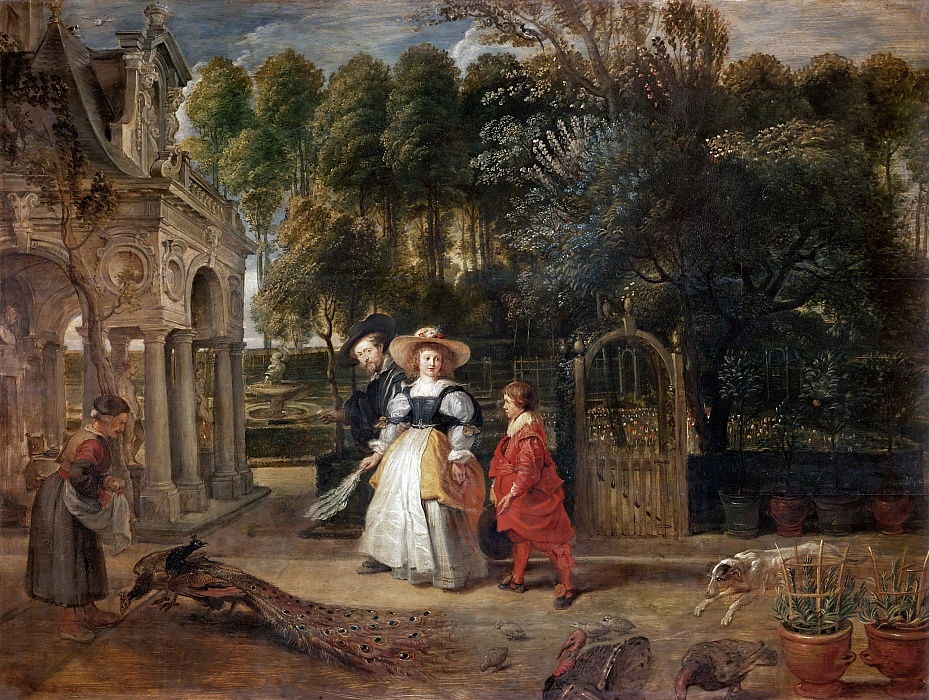
As can be seen in his painting Rubens in his garden with Helena Fourment, Rubens was not indifferent to that highly profitable business. Behind the master and his spouse, appears discretely behind a tree in Rubens garden a rich field of tulips!
But in the « Four philosophers », the tulip is nothing else than a metaphor of the « Brevity of life », an essay of Seneca.
The latter, tutor of Nero, preached a Roman form of sharp cynicism known under the label of fatum (fatality): to rise to (Roman) grandeur, man must cultivate absolute resignation. By an active retreat of oneself on oneself and by a obstinate denegation of a threatening and absurd world, man discovers his over-powerful self. That power even increases, if the self decides that death means nothing.
At the opposite of Socrates, who accepted to die for giving birth to the truth, Seneca makes his suicide his main existential deed. Waiting for his hour, his job is to steer his boredom by managing alternating pleasures and pains in a world where good and bad have no more sense.
As all cases of radical Aristotelianism, that philosophy, or « art of life » steers us in the hell of dualism, separating « reason », cleaned from any emotion, from the unbridled horses driving our senses. These two ways of being unfree makes us a double fool. Rubens fronts for that philosophy in his work Drunk Silenus.
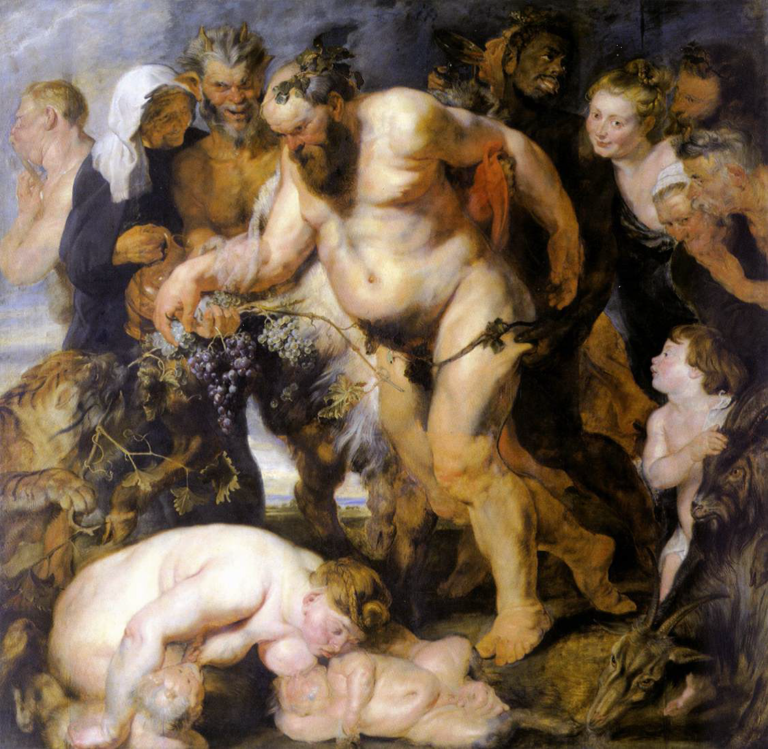
The excess of alcohol evacuates all reason and brings man back to his bestial state, a state which Rubens considers natural. Instead of being a polemic, the painting reveals all the complacency of the painter-courtier with the concept of man being enslaved by blind passion. Instead of fighting it, as Friedrich Schiller outlines the case repeatedly and most explicitly in his « On the Esthetical Education of Mankind », Rubens cultivates that dualism and takes pleasure in it. And sincerely tries to recruit the viewer to that obscene and degrading worldview.
Peace IS war

As an example of « allegories », let us look for a moment at Rubens canvas Peace and War.
Above all, that painting is nothing but a glittering « business-card » as one understands knowing the history of the painting. At one point, Rubens, who had become a diplomat thanks to his international relations, organized successfully the conclusion of a peace-treaty between Spain and England (which collapsed fairly soon).
Repeating that for him « peace » was based on the unilateral capitulation of the Netherlands (reunification of the Catholic south with the North ordered to abandon Protestantism), he succeeded entering the Spanish diplomatic servicesomething pretty unusual for a Flemish subject, in particular during the revolt of the Netherlands.
Following this diplomatic success, the painter is threefold knighted: by the Court of Madrid to which he presents a demand to obtain Spanish nationality; by the Court of Brussels and also by the King of England!
Before leaving that country, he offers his painting « Peace and War » to King Charles. The canvas goes as follows: Mars is repelled by wisdom, represented as Minerva, the goddess protecting Rome. Peace is symbolized by a woman directing the flow of milk spouting out of her breast towards the mouth of a little Pluto. In the mean time a satyr with goat hooves displays the corn of abundance…
On the far left, a blue sky enters on stage while on the right the clouds glide away as carton accessories of a theatre. Rubens main argument here for peace is not a desire for justice, but the increase of pleasures and gratifications resulting from the material objects which men could accumulate under peace arrangements! Ironically, seen the cupidity of the ruling Dutch elites, which Rembrandt would lambaste uncompromisingly, it seems that Rubens might have succeeded in convincing these elites to sell the Republic for a handful of tulips. If only his art would have been something else then self-glorification! Here, his style is purely didactical, copied from the Italian mannerism Leonardo despised so much.
Instead of using metaphors capable to make people think and discover ideas, the art of Rubens is to illustrate symbolized allegories. The beauty of an invisible idea has never, and can not be brought to light by this insane iconographical approach. His « style » will be so impersonal that dozens of assistants, real slave laborers, will be generously used for the expansion of his enterprise.
King Christian IV’s physician, Otto Sperling, who visits Rubens in 1621 reported:
« While still painting he was hearing Tacitus read aloud to him and at the same time was dictating a letter. When we kept silent so as not to disturb him with our talk, he himself began to talk to us while still continuing to work, to listen to the reading and to dictate his letter, answering our questions and then displaying his astonishing power. »
« Then he charged a servant to lead us through his magnificent palace and to show us his antiquities and Greek and Roman statues which he possessed in considerable number. We then saw a broad studio without windows, but which captured the light of the day through an aperture in the ceiling. There, were united a considerable amount of young painters occupied each with a different work of which M. Rubens had produced the design by his pencil, heightened with colors at certain points. These models had to be executed completely in paint by the young people till finally, M. Rubens administered with his own hand the final touch.
« All these works came along as painted by Rubens himself, and the man, not satisfied to merely accumulate an immense fortune by operating in this manner, has been overwhelmed with honors and presents by kings and princes ». (*15).
We know, for example, that between 1609 and 1620, not less than sixty three altars were fabricated by « Rubens, Inc. ». In 1635, in a letter to his friend Pereisc, when the thirty years war is ravaging Europe, Rubens states cynically « let us leave the charge of public affairs to those who’s job it is ».
The painter asks and obtains a total discharge of his public responsibilities the same year while retiring to enjoy a private life with his new young partner.
Painter of Agapè, versus painter of Eros
Being a human, Rembrandt correctly had thousand reasons to be allergic to Rubens. The latter was not simply « on the wrong side » politically, but produced an art inspiring nothing but lowness: portraits designated to flatter the pride of the mighty by making shine and glitter some shabby gentry; history scenes being permanent apologies of Roman fascism where, under the varnish of pseudo-Catholicism, the alliance of the violent forces of nature and iron-cold reason dominated. Behind the « art of living » of Seneca, there stood the brutal methods of manipulation of the perfect courtier described by Baldassare Castiglione in his « Courtier ». For courtly ethics, everything stands with balance (sprezzatura) and appearance, and behind the mask of nice epithets operates the savage passions of seduction, possession, rape and power-games.
On the opposite, Rembrandt is the pioneer of interiority, of the creative sovereignty of each individual. To show the beauty of that interiority, why not underline paradoxically exterior ugliness?
In the « Old man and young boy » of Domenico Ghirlandajo, an imperfect appearance unveils a splendid beauty. The old man has a terribly looking nose, but the visual exchange between him and the boy shows a quality of love which transcends both of them. At the opposite of Seneca, they don’t contemplate the « brevity of life », but the longevity or « immortality of the soul ».
Martin Luther King, in a sermon tries equally to define these different species of love. After defining Eros (carnal love), and Philia (brotherly love), he says:
« And then the Greek language comes out with another word. It’s the word agape. Agape is more than Eros; it’s more than an aesthetic or romantic love; it is more than friendship. Agape is understanding, creative, redemptive goodwill for all men. It is an overflowing love which seeks nothing in return. Theologians would say that it is the love of God operating in the human heart. And so when one rises to love on this level, he loves every man, not because he likes him, not because his ways appeal to him, but he loves every man because God loves him, and he rises to the level of loving the person who does an evil deed, while hating the deed that the person does. » (*17)
Then, King shows how that love intervenes into the political domain:
« If I hit you and you hit me and I hit you back and you hit me back and go on, you see, that goes on ad infinitum. It just never ends. Somewhere somebody must have a little sense, and that’s the strong person.
The strongperson is the person who can cut off the chain of hate, the chain of evil. And that is the tragedy of hate, that it doesn’t cut it off. It only intensifies the existence of hate and evil in the universe. Somebody must have religion enough and morality enough to cut it off and inject within the very structure of the universe that strong and powerful element of love. »
You probably understood our point here. Martin Luther King, in his battle for justice, was living in the same « temporal eternity » as Rembrandt and Comenius opposing the thirty years war. Isn’t that a most astonishing truth: that the most powerful political weapon at man’s disposal is nothing but transforming universal love, over more available to everyone on simple demand? But to become a political weapon, that universal love cannot remain a vague sentiment or fancy romantic concept. Strengthened by reason, Agapè can only reach height with the wings of philosophy.
Rembrandt and Comenius knew that « secret », which will remain a secret for the oligarchs, if they remain what they are. »
The Little Fur
Another comparison between two paintings will make the difference even more clearer between Eros and Agapè: Het pelsken (the little fur) of Rubens (left) and Hendrickje bathing in a river of Rembrandt (right).

That comparison has a particular significance since the two paintings show the young wives of both painters. At the age of fifty-three Rubens remarried the sixteen year old Helena Fourment, while Rembrandt settled at the age of forty-three with the twenty-two year old Hendrickje Stoffels.
The naked Helena Fourment, with staring eyes, and while effecting an hopeless gesture of pseudo-chastity, pulls a black fur coat over her shoulders. The stark color contrast between the pale body skin and the deep dark fur, a typical baroque dramatic touch of Rubens, unavoidably evokes basic instincts. No wonder that this canvas was baptized the « little fur » by those who composed the catalogues.
However, paradoxically, Hendrickje is lifting her skirt to walk in the water, but entirely free from any erotic innuendo! Her hesitating, tender steps in the refreshing water seem dominated by her confident smile. Here, the viewer is not some « Peeping Tom » intruding into somebody’s private life, but another human being invited to share a moment of beauty and happiness.
Suzanne and the Elderly
Another excellent example is the way the two painters paint the story of Suzanne and the elderly. Comenius, was so impassioned by this story that in 1643 he called his daughter Zuzanna in 1646 his son Daniel. This Biblical parable (Daniel 13) deals with a strong notion of justice, quite similar to the one already developed in Greece by Sophocles Antigone. In both cases, in the name of a higher law, a young woman defies the laws of the city.
In her private garden, far from intruding viewers, the beautiful Suzanne gets watched on by two judges which will try to blackmail her: or you submit to our sexual requests, or we will accuse you of adultery with a young man which just escaped from here! Suzanne starts shouting and refuses to submit to their demands. The next day, Suzanne gets accused publicly by the judges (the strongest) in front of her family, but Daniel, a young man convinced of her innocence, takes her defense and unmasks the false proofs forged by the judges. At the end, the judges receive the sentence initially slated for Suzanne.

In the Rubens painting, a voluptuous Suzanne lifts her desperate eyes imploring divine help from heaven. The image incarnates the dominant but
insane ideology of both Counterreformation Catholicism and radical Protestantism: the denial of the free will, and thus of the incapacity to obtain divine grace through one’s acting for the good. For the Calvinist/protestant ideologues, the soul was predestinated for good or evil. Reacting by a simple inversion to the crazy indulgences, it was « logical » that no earthly action could « buy » divine grace. So whatever one did, whatever our commitment for doing the good on earth, nothing could derail God’s original design. The Counterreformation Catholics thought pretty much the same, except that one could claim God’s indulgence in the context of the rites of the Roman Catholic Church, especially by paying the indulgences: « No salvation outside the church ».

In a spectacular way, Rembrandt’s Suzanne and the elderly reinstates the real evangelical Christian humanist standpoint: a chaste Suzanne looks straight in the eyes of the viewer which is witnessing the terrible injustice happening right under his nos. So, will you be the new Daniel? Will you find the courage to intervene against the laws of the State to defend a « Divine » justice? Hence, agapè is that infinite love for justice and truth, that leads you to courageous action and makes you a sublime personality capable of changing history, in the same way Antigone, Jeanne d’Arc, or Suzanne did before.
Plato versus Aristotle
The fact that Rembrandt was a philosopher is regularly put into question, even denied. The inventory of his goods, established when his enemies forced him into bankruptcy in 1654, doesn’t mention any book outside a huge bible, supposedly establishing a legitimate suspicion of him being near to illiteracy. While romanticized biographies portray him as an accursed poet, a narcissistic genius or the simple-minded mystical visionary son of a miller, a comment in 1641 from the artist Philips Angel underscores, not his painting, but Rembrandt’s « elevated and profound reflection ».
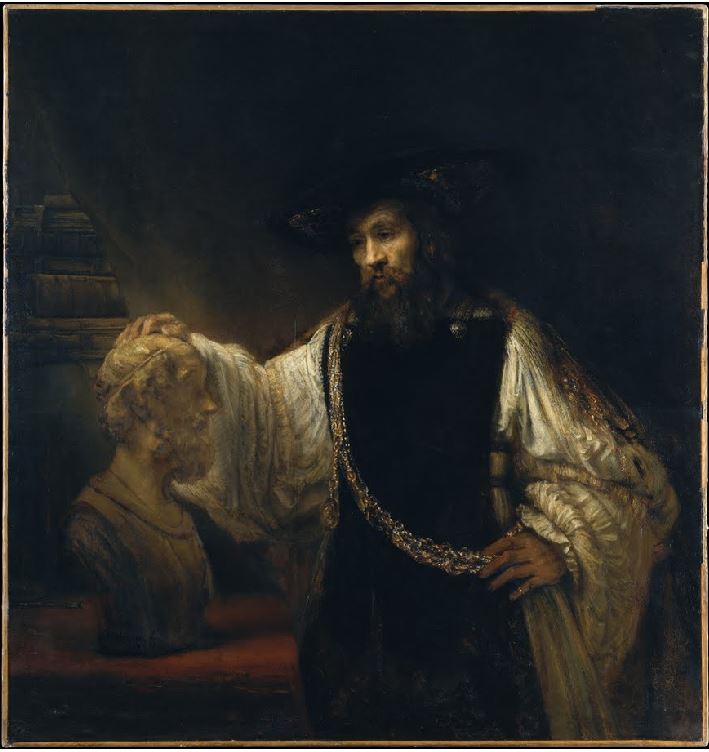
It is Aristotle contemplating Homer’s bust, which demonstrates once and for ever how stupid the Romantics can be. Ordered by an Italian nobleman, the painting shows Aristotle as a Venetian aristocrat, as a perfect courtier: with a wide white shirt, a large black hat and especially carrying a heavy golden chain.
In short, clothed as Castiglione, Aretino, Titian and Rubens… Rembrandt shows here his intimate knowledge of the species nature of Plato’s enemies of the Republic, that oligarchy to whom Aristotelianism became a quasi-religion.
With great irony, the canvas completely mocks knowledge derived from the « blind » submittal to sense perception. Here Rembrandt seems to join Erasmus of Rotterdam saying « experience is the school of fools! ».
Equipped with empty eyes, incapable of perception, Aristotle is groping with an uncertain hand Homer’s head of which he was supposedly a knowledgeable commentator. Homer, the Greek poet who turned blind, stares worriedly to Aristotle with the open eyes of mind.
That inversion of the respective roles of Aristotle and Homer is dramatized by situating the source enlightening the scene as a tangent behind the bust of the poet.
Light reflections illuminating Aristotle’s hat underneath make appear the ironical « ghost image » of donkey ears, the conventional attribute widely used since the Renaissance to designate the stubbornness of scholastic Aristotelianism.
To this Aristotelian blindness, Rembrandt, whose own father became blind, opposes the other clear-sightedness of Simeon, as seen in his last painting, found on Rembrandt’s easel after his death.
All during his life, Simeon had wished to see the Christ with his own eyes. But, growing old, that hope quitted him with along with his sight. As he did every day, Simeon went one day to the temple. There, Maria asked him to keep her child in his arms. Suddenly, an infinite joy
overwhelmed Simeon, who, without seeing Christ with his mortal eyes, saw him much more clearly with his mind than all the healthy seers. Rembrandt wanted us to reflect on that conviction: don’t believe what you see, but act coherently with God’s design and you might see him. On Simeon’s hands, a series of dashes of paint suggest some kind of crystal ball, an image which only « appears » when our minds dares to see it, underlining Simeon’s prophetic nature.
Jesus Christ healing the sick

Rembrandt’s anti-Aristotelian philosophy is also explicitly manifest in an engraving known as Christ healing the sick, an exceptionally large etching on which he worked passionately over a six year period. In order to « sculpt » the ambiguous image of the Christ, son of both God and mankind, Rembrandt executed six oil portraits featuring young rabbi’s of Amsterdam. But it was Leonardo’s fresco, the Last Supper, which Rembrandt extensively studied as shown by drawings done after reproductions, that seems to have been his starting point.
Scientific analysis of his still existing copperplate indicate that the Christ’s hands were originally drawn as an exact imitation of Leonardo’s « Last Supper » fresco.
Completely different from the kind of « spotlight theatrics » that go from Caravagio to Hitchcock, the work reminds the description of the myth of the cavern in Plato’s Republic. But here stands the Christ blessing the sick.
Transfigured, and akin to the prisoners in Beethoven’s opera Fidelio, the sick people walk from right to left towards Christ. Encountering the light transforms them into philosophers!
One generally identifies easily, amidst others, Homer and Aristotle (who’s turning his head away from Christ), but also Erasmus and Saint-Peter, which according to some possesses here the traits of Socrates.
The etching brings together in a single instant eternal several sequences of Chapter XIX of Saint Mathew:
“Let the little children come to me, and do not hinder them, for the kingdom of heaven belongs to such as these.”
In a powerful gesture, Christ brushes aside even the best of all wise wisdom to make his love the priority, where Peter desperately tries to prevent the children from being presented to Jesus.
Sitting close to him we observe the image of an undecided young wealthy man plunged in profound doubts, since he desired eternal life but hesitated to sell his possessions and give it all to the poor.
When he left, Jesus commented that it was certainly easier for a camel to get through the eye of a needle, than for a rich man to enter the his kingdom.
Above simple earthly space situated in clock-ticking time, the action takes place in « the time of all times », an instantaneous eternity where human minds are measured with universality, some kind of « last judgment » of divine and philosophical consciousness.
The healing of the sick souls and bodies is the central breaking point which articulates the two universes, the one of sin and suffering, with the one of the good and happiness. Christ’s love, metaphorized as light, heals the « sick » and makes philosopher-kings out of them. They appear nearly as apostles and figure exactly on the same level as the apostles of Leonardo‘s milan fresco The last Supper. Brought out of darkness into the light, they become themselves sources of light capable of illuminating many others.
That « light of Agapè » is the single philosophical basis of Rembrandt’s revolution in the techniques of oil-painting: in stead of starting drawing and paint on a white gesso underground or lightly colored under-paint (the so-called priming, eventually adding imprimatura), all the later works are painted on a dark, even black under-paint!
The « modern » thick impasto, possible through the use of Venetian turpentine and the integration of bee wax, are revived by Rembrandt from the ancient « encaustic » techniques described by Pliny the Elder. They were employed by the School of Sycione three hundred years before Christ and gave us Alexander the Great‘s court painter Apelles, and the Fayoum mommy paintings in Alexandria, Egypt (*17).
Building the color-scale inversely permitted Rembrandt to reduce his late palette to only six colors and made him into a « sculptor of light ». His indirect pupil, Johannes Vermeer, systemized Rembrandt’s revolutionary discovery (*18).
Deprived of much earthly glory during their lives, Rembrandt and Comenius were immediately scrapped from official history by the oligarchic monsters that survived them. But their lives represent important victories for humanity. Their political, philosophical, esthetical and pedagogical battles against the oligarchy and its « valets » as Rubens, makes them eternal.
They are and will remain inexhaustible sources of inspiration for today’s and tomorrows combat.
NOTES:
- Karel Vereycken, « Rembrandt, bâtisseur de nation« , Nouvelle Solidarité, June 1985.
- The treatises of Westphalia (Munster and Osnabruck) of 1648, and the ensuing separate peace accords between France and the Netherlands with Spain, finally shred into pieces every political, philosophical and juridical argument serving as basis of the notion of empire, and by doing so put an end to Habsburg’s imperial fantasy, the « Thirty years war ». As some had outlined before, notably French King Henry IV’s great advisor Sully in his concept of « Grand Design », making the sovereign nation-state the highest authority for international law was, and remains today, the only safe road to guaranty durable peace. Empires, by definition, mean nothing but perpetual wars. If you want perpetual war, create an empire! Hence, through this revolution, small countries obtained the same rights as those held by large ones and the notions of big= strong, and small=weak, went out of the window. The Hobbesian idea that « might makes right » was abolished and replaced by mutual cooperation as the sole basis of international relations between sovereign nation-states. Hence, tiny Republics, as Switzerland or the Netherlands,the latter at war with Spain for nearly eighty years, finally obtained peace and international recognition. Second, and that’s undoubtedly the most revolutionary part of the agreements, mutual pardon became the core of the peace accords. For example paragraph II stipulated explicitly « that there shall be on the one side and the other a perpetual Oblivion, Amnesty or Pardon of all that has been committed since the beginning of these Troubles, in what place, or what manner soever the Hostilitys have been practis’d, in such a manner, that no body, under any pretext whatsoever, shall practice any Acts of Hostility, entertain any Enmity, or cause any Trouble to each other; » (translation: Foreign Office, London). Moreover, several paragraphs (XIII, XXXV, XXXVII, etc.) stipulate (with some exceptions) that there will be a general debt forgiveness concerning financial obligations susceptible of maintaining a dynamic of perpetual vengeance. In reality, the Peace of Westphalia was the birth of new political order, based on the creation of a new international economic and monetary system necessary to build peace on the ruins of the bankrupt imperial order.
- Footnote, p. 77 in Comenius by Olivier Cauly, Editions du Félin, Paris, 1995.
- Brochure dealing with that painting published by the Nationalmuseum of Stockholm.
- To put to an end to the politically motivated financial harassment which was organized by the family of his deceased wife, Saskia van Uylenburgh, Rembrandt submits on July 14, 1656 to the Dutch High Court a cessio bonorum (Cessation of goods to the profit of the creditors), accepting the sale of his goods. In 1660, Rembrandt abandons the official management of his art trading society to his wife Hendrickje Stoffels and his son Titus.
- p. 105, Henriette L.T.de Beaufort, in Rembrandt, HDT Willinck & Zoon, Harlem, 1957.
- p. 358, Samuel Hartlib and Universal Reformation, Cambridge University Press, 1994.
- p. 12-13, Bob van den Bogaert, in « Goethe & Rembrandt », Amsterdam University Press, Amsterdam 1999.
- p. 25, Marcelle Denis in Comenius, pédagogies & pédagogues, Presse Universitaire de France, 1994.
- Constantijn Huygens (1596-1687), was an exceptional precocious erudite. Politician, scientist, moralist, music composer, he played the violin at the age of six, wrote poems in Dutch, Latin, French, Spanish, English and Greek. His satire, « ‘t Kostelick Mal » (expensive folly), opposed to the « Profijtelijk Vermaak » (profitable amusement) makes great fun of courtly manners and the then rampant beaumondism. His son, Christiaan Huygens was a brilliant scientist and collaborator of Leibniz at the Paris Academy of sciences.
- One has to outline shortly here that contrary to the rule of the Greek canon of proportions (height of man = seven heads and a half), the Romans, as Leonardo seems to observe sourly in his drawing reworking Vitrivius, increase the body size up to eight and sometimes many more heads. It was the Greek canon established after the « Doryphore » of Polycletius, which settled the matter much earlier after many Egyptian inquiries on these matters. Leonardo, who wasn’t a fool, realized Vitruvius proportions (8 heads) are wrong, as can be seen by the two belly-buttons appearing in the famous man bounded by square and circle. Hence, the proportional « reduction » of the head was an easy trick to create the illusion of a stronger, more powerful musculature. That image of a biological man displaying « small head, big muscles » supposedly stood as the ultimate expression of Roman heroism. Foreknowledge of this arrangement permits the viewer to identify accurately what philosophy the painter is adhering to: Greek humanist or Roman oligarch? That Rubens chose Rome rather than Athens, leaves no doubt, as proven by his love for Seneca.
- « The holy Council states that it isn’t permitted to anybody, in any place or church, to install or let be installed an unusual image, unless it has been approved so by the bishop »; « finally any indecency shall be avoided, of that sort that the images will not be painted or possess ornaments of provoking beauty… » P. 1575-77, t. II-2, in G. Alberigo, « The ecumenical Councils », quoted by Alain Taton (p. 132) in « The Council of Trent », editions du CERF, Paris, 2000.
- p. 172, Simon Schama, in his magnificent Rembrandt’s eyes, Knopf, New York, 1999.
- For a more elaborate description of the tulip-bubble, Simon Schama, p. 471, « L’embarras de richesses, La culture hollandaise au Siècle d’Or », Gallimard, Paris, 1991.
- p. 117, Otto Sperling, Christian IV’s doctor, quoted by Marie-Anne Lescouret in her biography Pierre-Paul Rubens, J.C. Lattès, Paris, 1990.
- « Love your enemies », sermon of Martin Luther King, November 17, 1957, Dexter Avenue Baptist Church, Montgomery, Alabama. Quoted in Martin Luther King, Minuit, quelqu’un frappe à la porte, p.63, Bayard, Paris 1990.
- p. 87-88, Karel Vereycken, in The gaze from beyond, Fidelio, Vol. VIII, n°2, summer 1999.
- Johannes Vermeer of Delft was a close friend of Karel Fabritius, the most outstanding pupil of Rembrandt, who died at the age of thirty-four when the powderkeg of Delft exploded. Vermeer became the executor of his last will, a role generally reserved for the closest friend or relative. Anthonie van Leeuwenhoek, the inventor of the microscope and Leibniz correspondent, will become in turn the executor of Vermeer’s last will. That filiation does nothing more than prove the constant cross-fertilization of the artistic and scientific milieu. The Dutch « intimist » school, of which Vermeer is the most accomplished representative, is the most explicit expression of a « metaphysical » transcendence, transposed for political reasons, from the domain of religion, into the beauty of daily life scenes.
SELECTED BIBLIOGRAPHY:
- Baudiquey, Paul, Le retour du prodigue, Editions Mame, 1995, Paris.
- Bély, Lucien, L’Europe des Traités de Westphalie, esprit de la diplomatie et diplomatie de l’esprit, Presses Universitaires de France, Paris, 2000.
- Callot, Jacques, etchings, Dover, New York, 1974.
- Castiglione, Baldassare, Le Livre du Courtisan, GF-Flammarion, 1991.
- Cauly, Olvier, Comenius, Editions du Félin, Paris, 1995.
- Clark, Kenneth, An introduction to Rembrandt, Readers Union, Devon, 1978.
- Comenius, La Grande Didactique, Editions Klincksieck, Paris, 1992.
- Denis, Marcelle, Comenius, Presses Universitaires de France, Paris 1994.
- Descargues, Pierre, Rembrandt, JC Lattès, 1990.
- Goethe Rembrandt, Tekeningen uit Weimar, Amsterdam University Press, 1999.
- Grimberg, Carl, Histoire Universelle, Marabout Université, Verviers, 1964.
- Haak, B., Rembrandt, zijn leven, zijn werk, zijn tijd, De Centaur, Amsterdam.
- Hobbes, Thomas, Le Citoyen ou les fondements de la politique, Garnier Flammarion, Paris, 1982.
- Jerlerup, Törbjorn, Sweden und der Westphalische Friede, Neue Solidarität, mai 2000.
- King, Martin Luther, Minuit, quelqu’un frappe à la porte, Bayard, Paris, 2000.
- Komensky, Jan Amos, Le labyrinthe du monde et le paradis du cœur, Desclée, Paris, 1991.
- Lescourret, Marie Anne, Pierre-Paul Rubens, JC Lattès, Paris, 1990.
- Marienfeld Barbara, Johann Amos Comenius : Die Kunst, alle Menschen alles zu lehren. Neue Solidarität.
- Rembrandt and his pupils, Nationalmuseum, Stockholm, 1993.
- Sénèque, Entretiens, Editions Bouquins, Paris, 1993.
- Schama Simon, Rembrandt’s Eyes, Knopf, New York 1999.
- Schama, Simon, L’embarras de richesses, La culture hollandaise au Siècle d’Or, Gallimard, 1991.
- Schiller, Friedrich, traduction de Regnier, Vol. 6, Histoire de la Guerre de Trente ans, Paris, 1860.
- Sutton, Peter C., Le Siècle de Rubens, Mercatorfonds, Albin Michel, Paris, 1994.
- Tallon, Alain, Le Concile de Trente, CERF, Paris, 2000.
- Tümpel, Christian, Rembrandt, Fonds Mercator-Albin Michel, 1986.
- Van Lil, Kira, La peinture du XVIIème siècle aux Pays-Bas, en Allemagne et en Angleterre, dans l’art du Baroque, Editions Köneman, 1998, Cologne.
The Congress for Cultural Freedom: How the CIA « weaponized » Modern Art
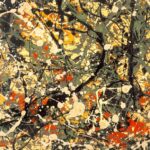

This article, first published in 2006, came as a book review of the book Who Paid the Piper of British researcher Frances Stonor Saunder, published in French Article under the title Qui mène la danse? La CIA et la guerre froide culturelle, 506 pages, Editions Denoël, Paris, 2003.
This book, which caused a stir in Germany, England and the Hispanic world, is literally appalling. Not only for what it reveals, but above all for what it leaves unsaid.
After years of meticulous research, interviews and archival work, the young writer Frances Stonor Saunders, producer of historical documentaries for the BBC, delivers an uncompromising account of the Anglo-American cultural Cold War against the Soviet Union from 1947 onwards.
Congress for Cultural Freedom
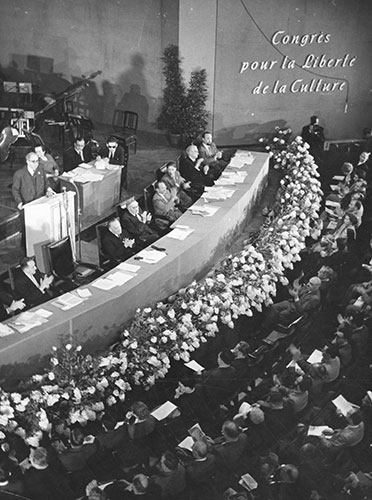
At the heart of this secret « Kulturkampf », a veritable cultural Cold War, was the Paris-based Congress for Cultural Freedom (CCF), headed from 1950 to 1967 by CIA agent Michael Josselson.
Josselson, who spoke four languages, along with music composer Nicholas Nabokov, was a former member of the psychological warfare division of the Office for Strategic Services (OSS), which US President Harry Truman replaced with the CIA in 1945.
The first thing that strikes the reader is the analogy between the language of the Cold War and the narrative of today’s war hawks to justify a new crusade « against terrorism. »
Back then, under the guise of a merciless struggle against the horrors of Stalinism, the Anglo-American imperial faction deployed whole swathes of the CIA in an attempt to impose Bertrand Russell‘s utopian vision of « world government. »
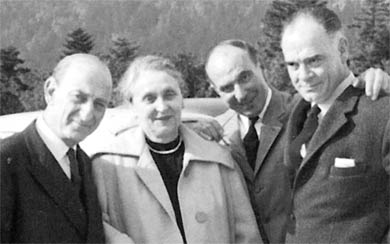
The CIA described itself as an « Order of Knights Templar » charged with « saving Western freedom from Communist darkness ». Its principal theoretician was George Kennan, Director of the Policy Planning Staff at the State Department.
Like the « Noble Lies » employed today by the neo-conservatives, followers of Leo Strauss, Kennan asserted in 1947 that the Communists had gained a position of prominence in Europe,
« through the shameless and skillful use of lies. They fought us with the weapon of unreality and irrationalism. Can we triumph over this unreality with rationalism, truth, honest and well-intentioned economic assistance? »
Obviously not! And the most formidable weapon for world domination will be, as always: the soft power of « culture ».
Indeed, « you can’t be a great power if you don’t have the art to go with it, it’s like Venice without Tintoretto or Florence without Giotto ».
So, ironically, while American public opinion was held hostage by the McCarthyite psychosis for whom « all modern art is communist », to the point of suspecting certain abstract paintings of indicating the exact location of American military bases (sic), the oligarchs saw in « lyrical abstract » expressionism the virtues of a specifically anti-communist ideology.
By a simple logic of inversion, everything that Nazis and Stalinists considered « degenerate art » automatically became emblematic of the values of freedom and free enterprise, and therefore got massively financed… in the greatest secrecy.
With a wealth of detail, the author documents the mesh of this operation over some five hundred pages. It is, of course, impossible to summarize here the descriptions of the lives of dozens of men, women, musicians, authors, magazines, networks and foundations, each page of which delivers a few pearls.
Some of the details shed a special light on contemporary French history.
The CIA in Paris
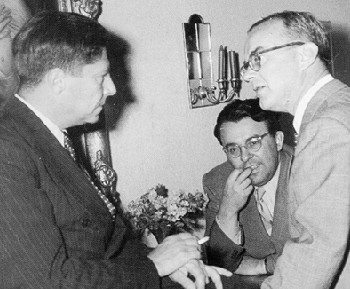
In Paris, it was Irving Brown (1911-1989), a representative of the powerful AFL-CIO union (with free access to secret Marshall Plan funds), who offered the CCF in Paris a suite in the Hôtel Baltimore on Avenue Kléber to set up its temporary headquarters, before paying the rent for a permanent office on Boulevard Haussmann.
On behalf of his boss Jay Lovestone (1897-1990), himself a helper of the CIA’s James Jesus Angleton, Irving Brown financed anything that might weaken France’s resistance to the utopia of world government, i.e. anything that might harm Gaullism and, to a certain extent, Communism.
Josselson and his wife met him quite often in a gay bar, « L’Indifférent ». One evening, they find him handing over a large sum of money to a Marseille mobster. A fan of the big boys, Brown was heavily involved in anything that could reduce the influence of the Communists.
It was from that perspective that he helped former members of the Vichy government, as well as Trotskyites. He controlled French ports, broke strikes and financed the new Force Ouvrière union to split the CGT communist union, all the while promoting modern art!*
Alongside Irving Brown, the CCF board included Michael Josselson, Lawrence de Neufville (his CIA recruiter, later appointed to Radio Free Europe), Arthur Koestler, Melvin Lasky, former Trotskyist James Burnham, as well as Carlo Schmid of the German SPD, Haakon Lie, leader of the Norwegian Labour Party, and David Rousset of the French Parti Socialiste.
In his book The Machiavellians, Burnham used Machiavelli to « challenge egalitarian political theory and show the persistence and inescapability of the elite, even in an age of equality ».
In 1953, Burnham played a crucial role in the CIA’s Operation AJAX, which overthrew Dr. Mossadegh in Teheran and replaced him with the Shah.
Later, « more presentable » funding sources than Irving Brown came into play: CIA front organizations such as the Farfield Foundation, headed by Julius Fleischman, or the Hoblitzelle Foundation, but also classics like the Ford, Carnegie or Rockefeller brothers’ foundations.
Thanks to these generous donors, the CCF made millions of dollars available to literary magazines such as
- Encounter, edited by former Trotskyite Irving Kristol (father of current neo-conservative William Kristol) in London;
- Preuves, edited in Paris by François Bondy of the European Union of Federalists;
- Der Monat, edited by Melvin Lasky in Berlin;
- Tempo Presente, edited by Ignazio Silone in Rome;
- Soviet Survey, edited in Israel by historian Walter Laqueur.
After the OSS’s (reciprocal) expressions of sympathy for Hemingway or Antoine de Saint-Exupéry, these magazines opened their columns to authors such as Jorge-Louis Borges, Raymond Aron, Arnold Toynbee, Bertrand Russell, Arthur Schlesinger Jr., Herbert Read or Hugh Trevor-Roper, or contributed to the publication of their writings.
In 1950, the CIA commissioned the production of a cartoon based on George Orwell’s Animal Farm (real name Eric Blair).
Also in Paris, CIA man Peter Matthiessen helped found the Paris Review run by John Train, a far-right liberal New York billionaire.
CIA Culture

Destruction of the well tempered music
The CCF also financed major musical events to promote « modern » twelve-tone serialism (dodecaphony), such as the April 1952 festival organized by Nicolas Nabokov in Paris.
Nabokov believed that « dodecaphony abolishes natural hierarchies » and allows us to free ourselves from the internal logic of music.
Anne C. Shreffler argues that the « compositional avant-garde » was politicized more by its advocacy of personal freedom than by political influence. Shreffler goes on to argue that both the Soviet Union and the United States sent out messages that dealt with « freedom. » However, Western Europe and the United States claimed a « moral high ground » in the struggle for individual freedom, a high ground that made certain artistic aesthetics (e.g., cubism, surrealism, dodecaphony, and existentialism) almost « obligatory » for artists.
The promotion of « liberated » music as a counterpoint to « Social Realism« , which essentially « marginalized » the populist Soviet musical aesthetic, was explicitly a politically calculated move by the Congress for Cultural Freedom.
The festival opened with « The Rite of Spring » of Igor Stravinsky, new convert to twelve-tone dodecaphonic system.
Among the participants from the USA: Leontyne Price, Aaron Copland, Samuel Barber, the New York City Ballet (Balanchine‘s troupe), the Boston Symphony Orchestra, the New York Museum of Modern Art (MoMA), James T. Farrell, W.H. Auden and Gertrude Stein.
European participants included Jean Cocteau, William Walton, Laurence Olivier, Benjamin Britten, the Vienna Opera, Covent Garden Opera, Czeslaw Milosz, Denis de Rougemont and Guido Piovene, to name but a few.
Appointed Eisenhower’s special advisor on Cold War strategy, American Vice-President Nelson Rockefeller played a fundamental role in promoting the CIA’s modernist painting. Supporting left-wing artists practicing abstract expressionism was commonplace for the Rockefellers.
Nelson’s mother, Abby Aldrich Rockefeller, had founded the Museum of Modern Art in New York – the Modern Art Museum (MoMA) – asserting that reds would stop being reds « if we gave them artistic recognition ». Several MoMA trustees were also trustees of the Farfield Foundation, as indicated, a CIA front.
As Donald Jameson of the CIA put it:
« We understood that this was the kind of art that has nothing to do with social realism and makes it even more stylized, rigid and confined than it was. »
MoMA bought works by Diego Riviera, Jackson Pollock, Arshile Gorky, Alexander Calder, Robert Motherwell, Stuart Davis, Edward Hopper and others.
By attributing the « success » of an impressive number of contemporary cultural actors to the will of an imperial elite, motivated by a more than suspect ideological blindness and endowed, what’s more, with unparalleled financial resources and communication strategies, Stonor Saunders’ book immediately casts deep discredit on all post-war artistic creation.
Most of these « artists » were chosen because they conveyed an ideology deemed compatible with the totalitarian designs of the high priests of world order.
Only the reactionary Peregrine Worsthorne titles his book review of Saunders’ Who Paid the Piper, « How Western Culture was saved by the CIA », nostalgically lamenting the Machiavellian genius of the Anglo-American elite in its heyday.
Of course, some artists weren’t necessarily aware of the source of the funds, but they all expected them to fill their pockets… And perhaps most shockingly of all, the CIA took art more seriously than many citizens or critics of the time.
So, perhaps this survey does posthumous justice to all those talents sacrificed on the altar of illusory power. Think of all those crushed hopes, sabotaged careers and stifled seeds of genius. For in this delirious tournament of the Cold War, the great priesthood ruling over the art world would only saddle those willing to bend the knee, while with a wave of the hand, send others to the deadly silence of oblivion.
NOTE:
*In his book Les Trotskistes (Fayard, 2002), Christophe Nick states, with regard to the non-communist student union UNEF, that at one time, « thanks to Irwing Brown‘s good offices, the U.S. Embassy was able to cover the student union’s end-of-month budgets ».
In Secrets de famille (Fayard, Paris 2001), Serge Raffy reveals that « Lionel Jospin, then First Secretary of the Socialist Party, met in Washington on April 14, 1982 with leaders of the American AFL-CIO union to reassure them that the Mauroy government would include Communist ministers. The man who organized the meeting was a CIA agent, Irving Brown, the same man who founded and financed the French trade union Force Ouvrière to combat the Communist CGT financed by Soviet Russia. Irving Brown is also said to have constantly maintained links between the Trotskyites, and in particular the OCI, and FO. »
On the right, the student union, Union Inter-Universitaire (UNI), which made the career of so many politicians on the right, was also backed by CIA agent of influence Irving Brown and received $575,000 between April 1984 and April 1985 from the government of the United States through the National Endowment for Democracy.

